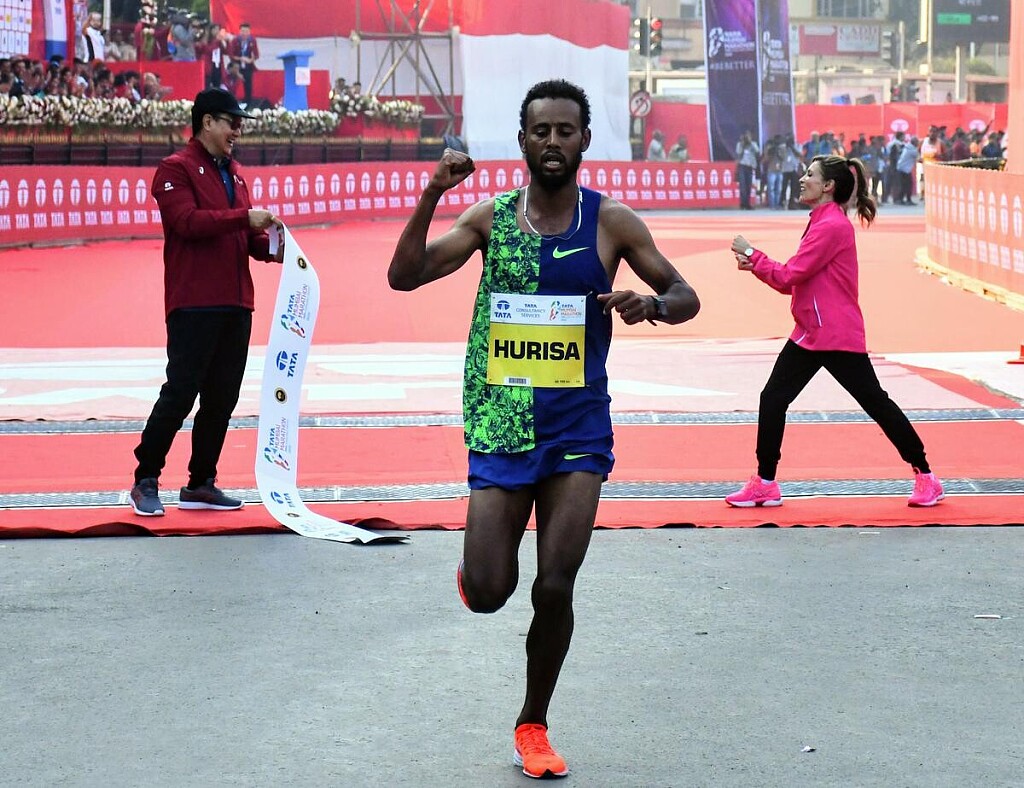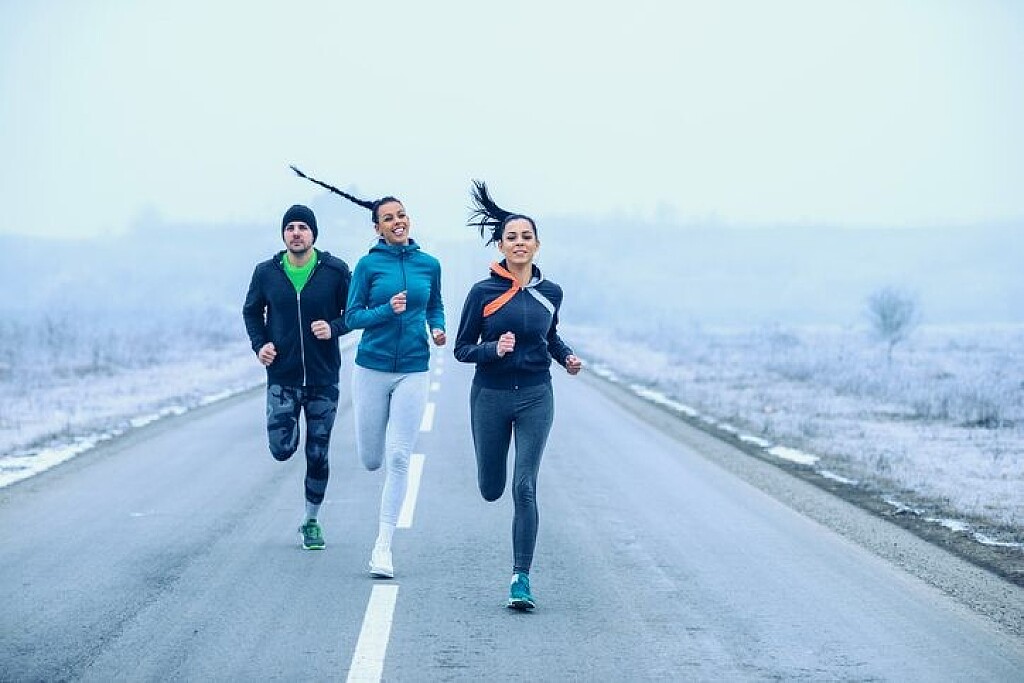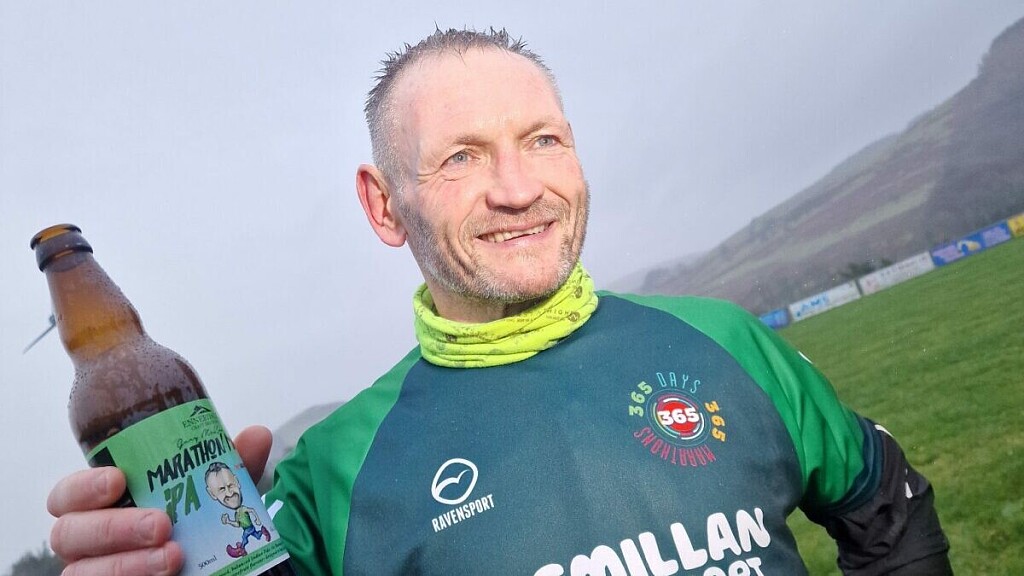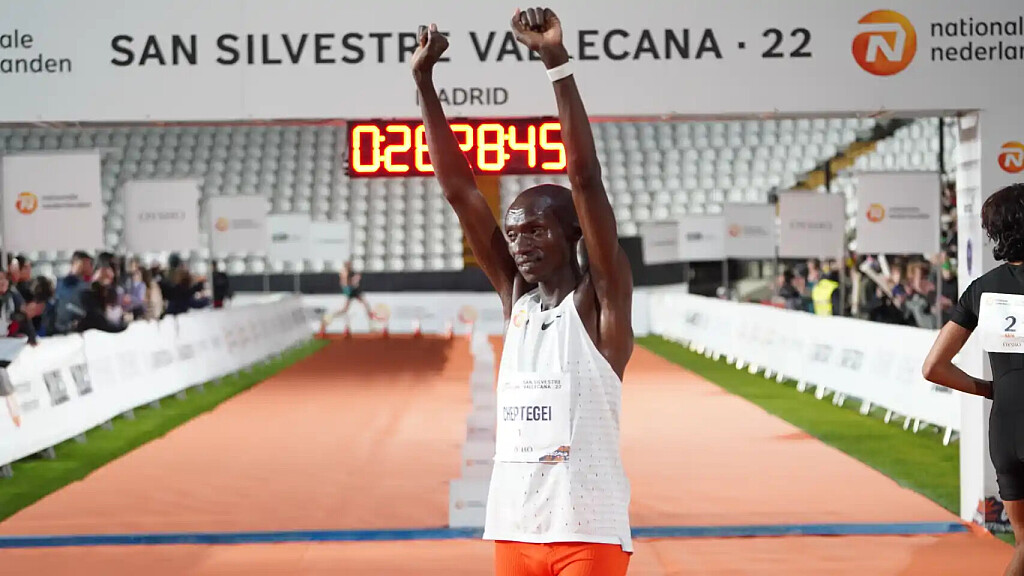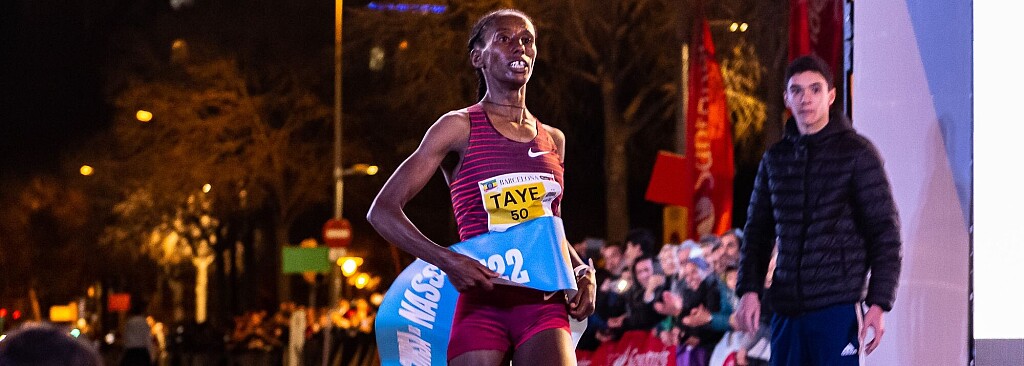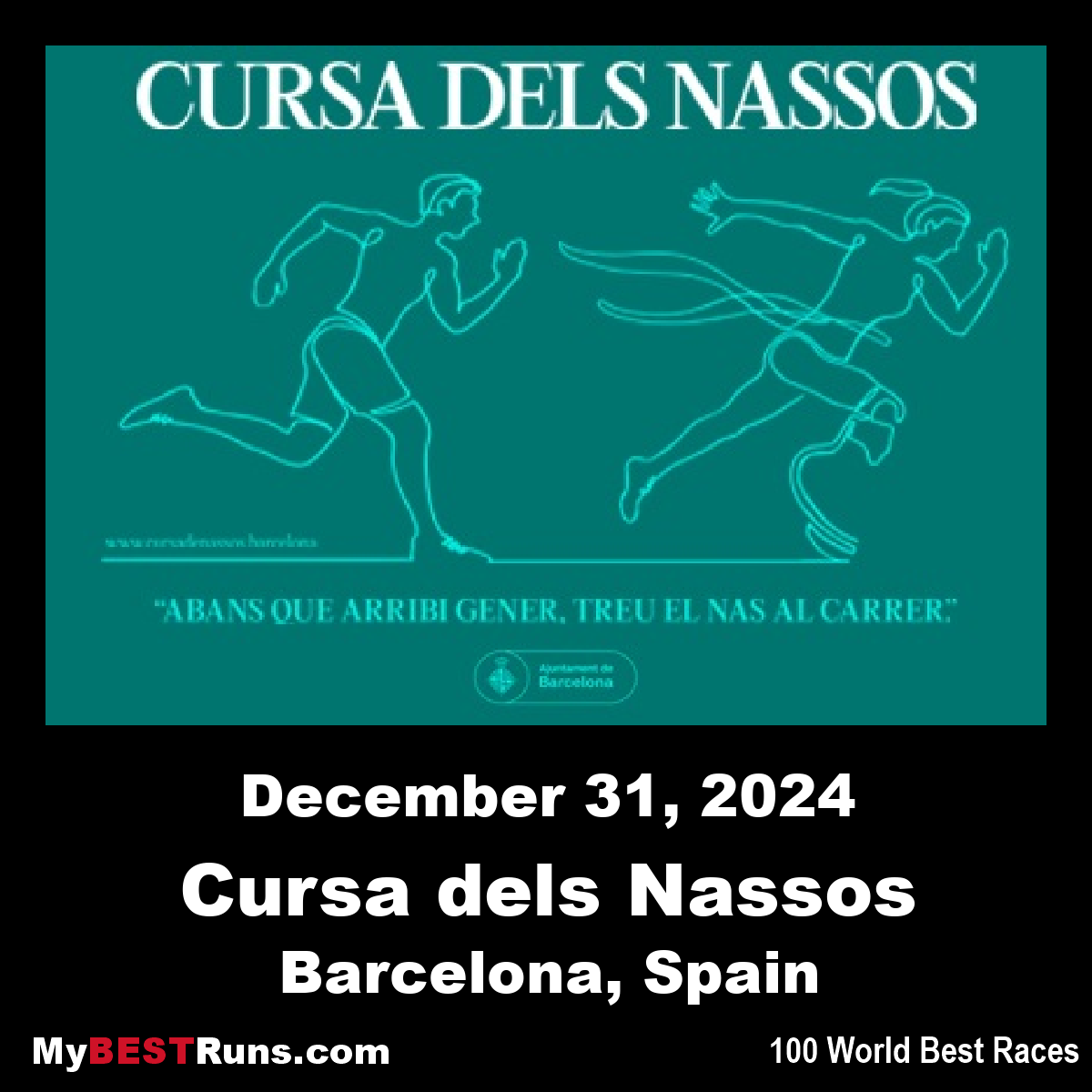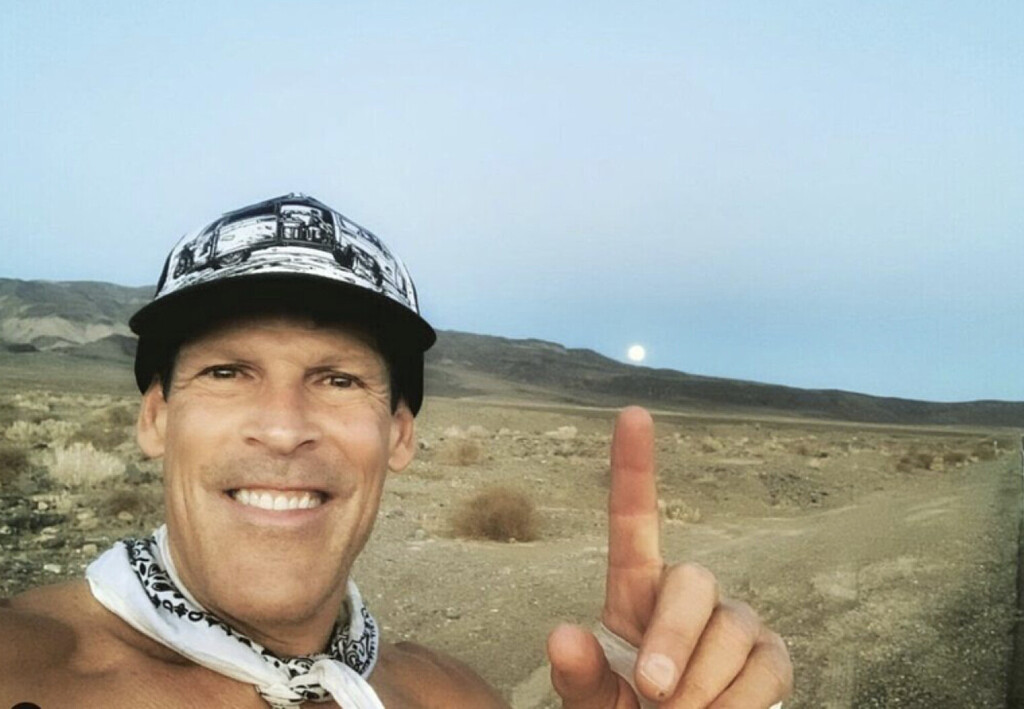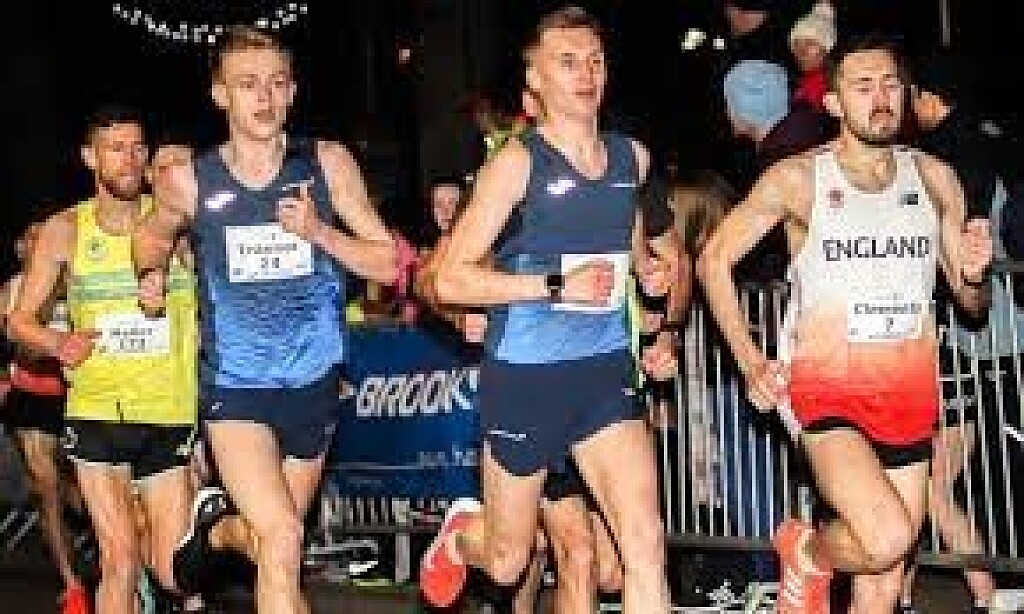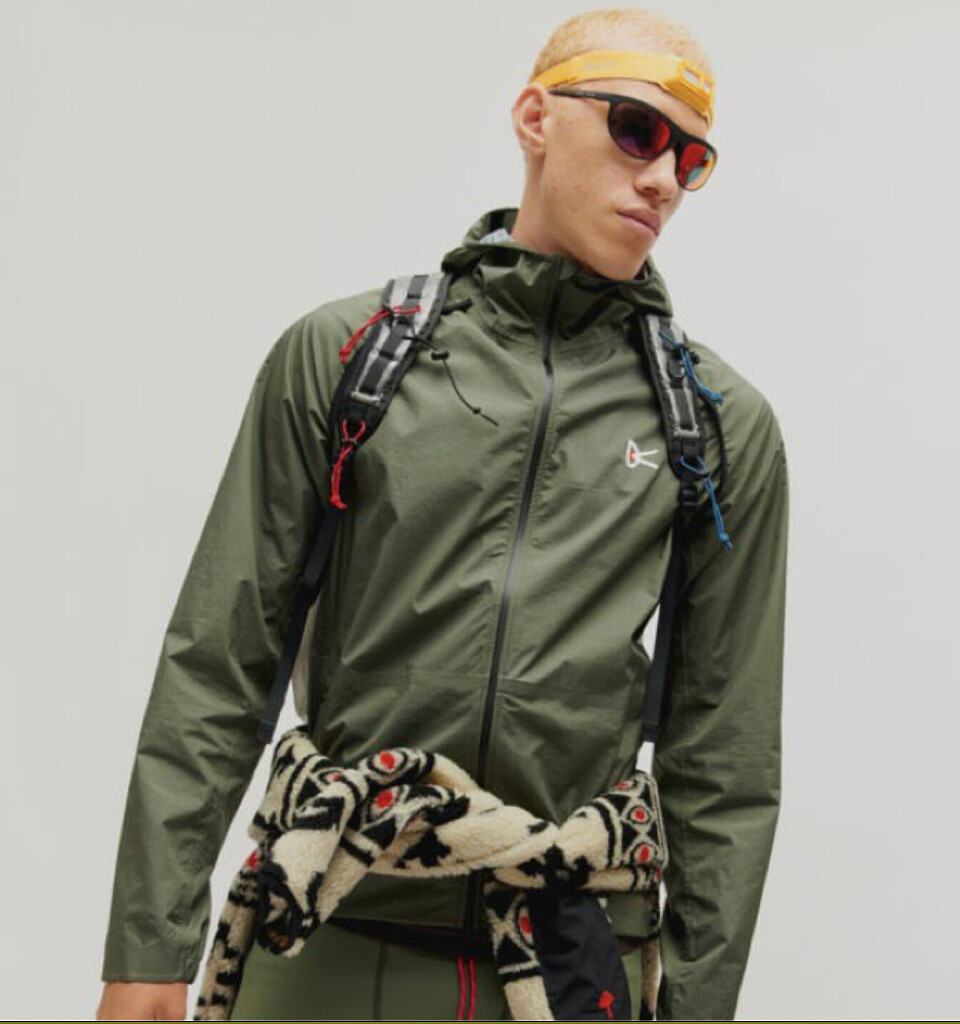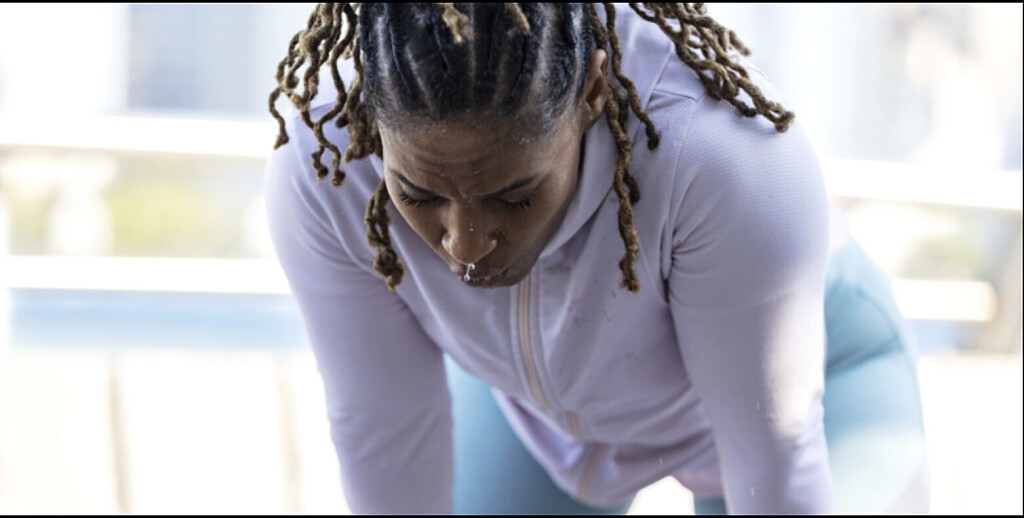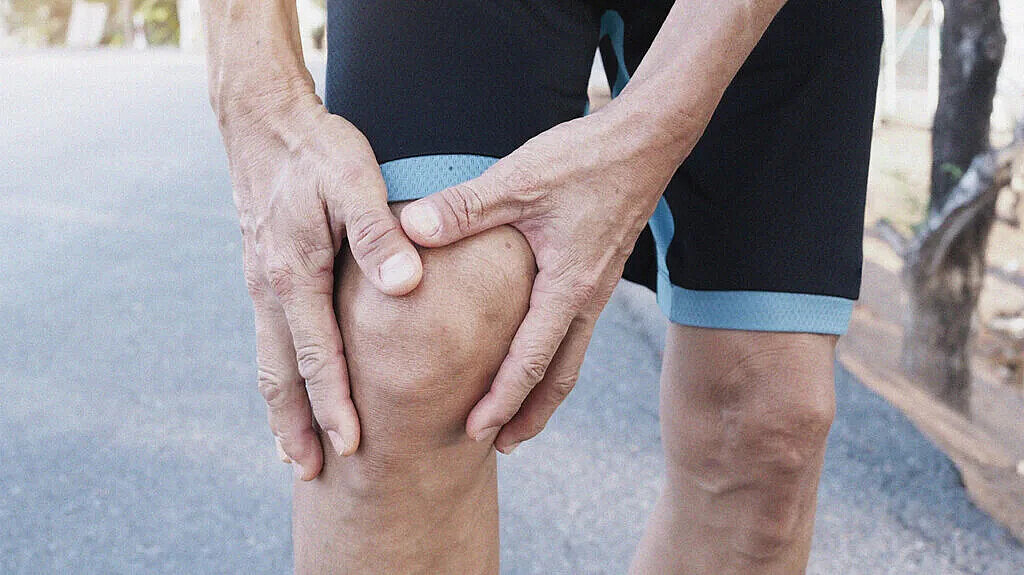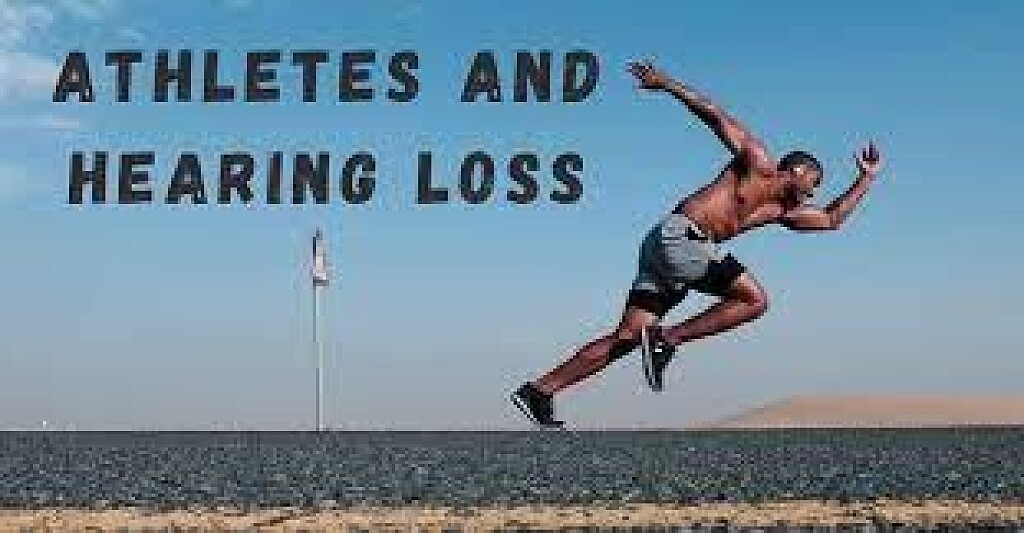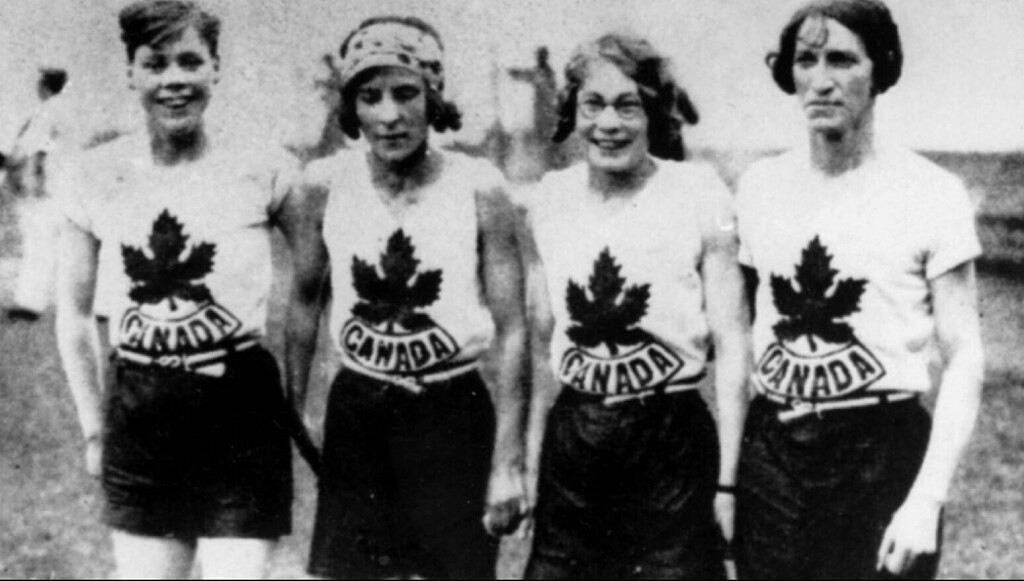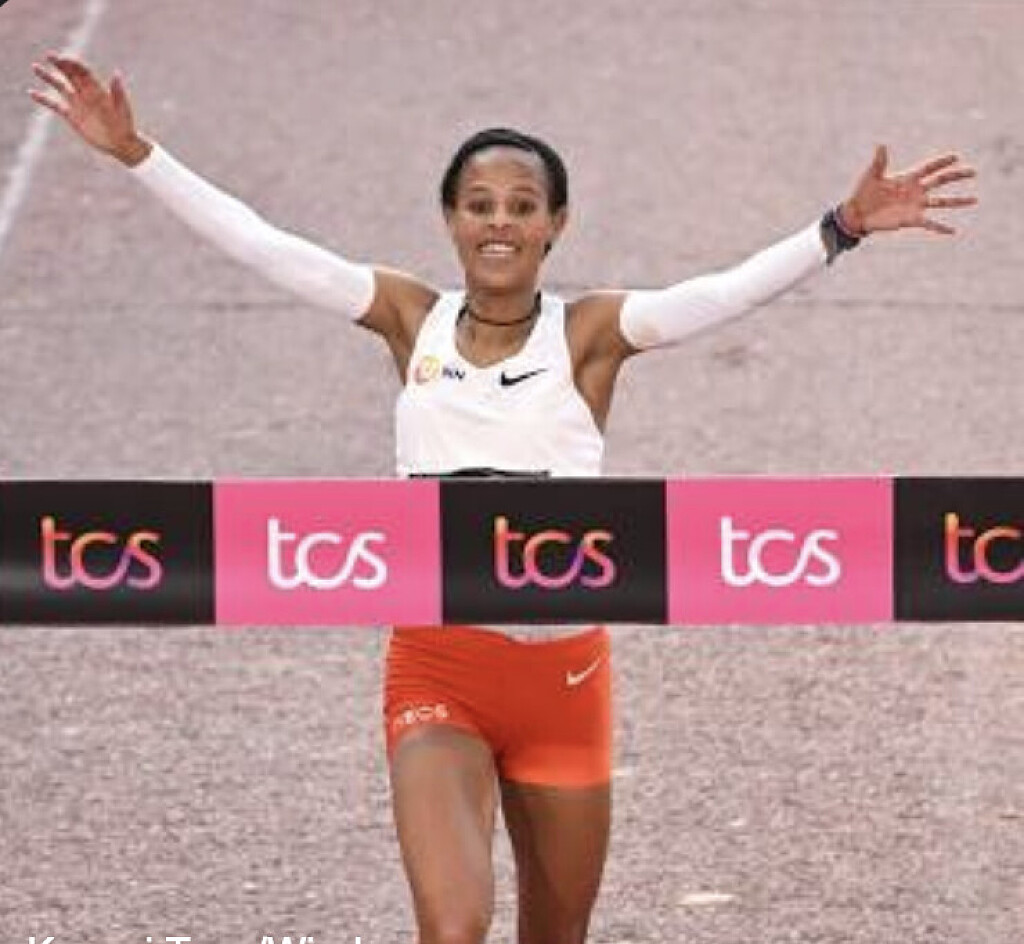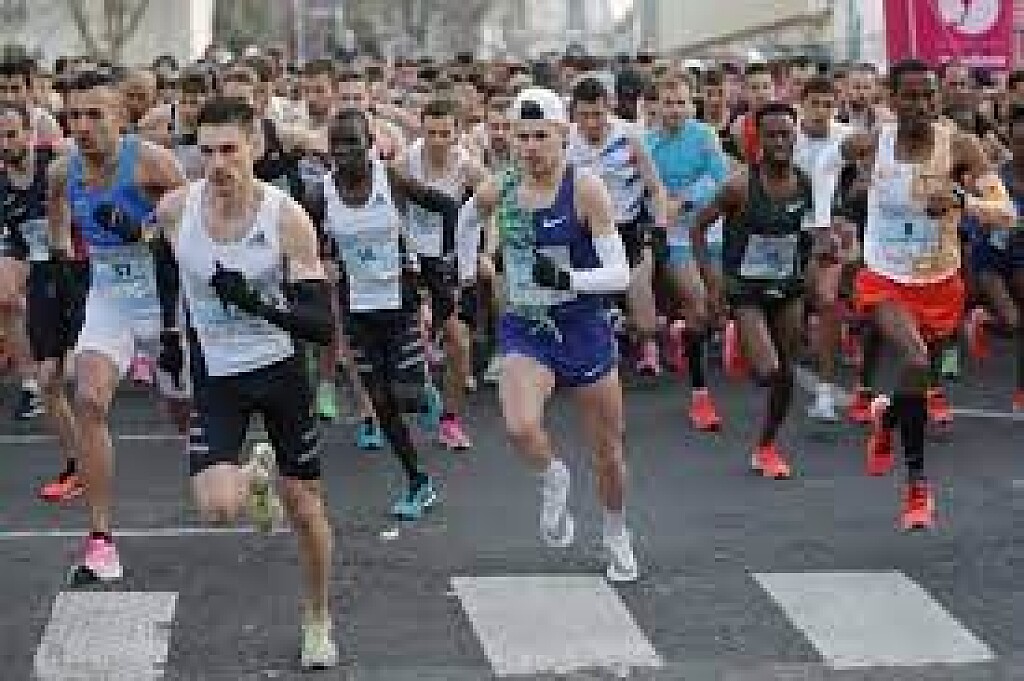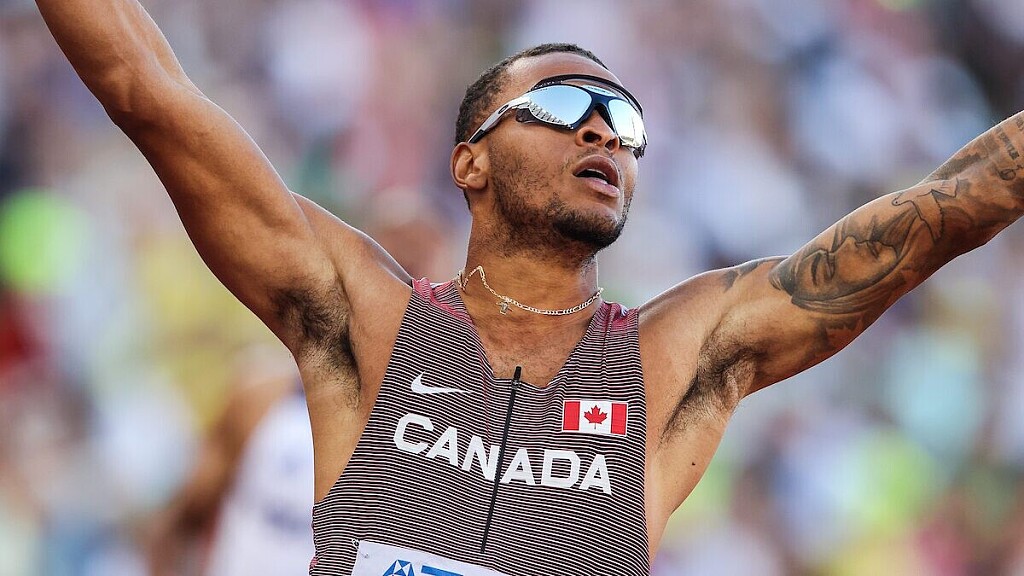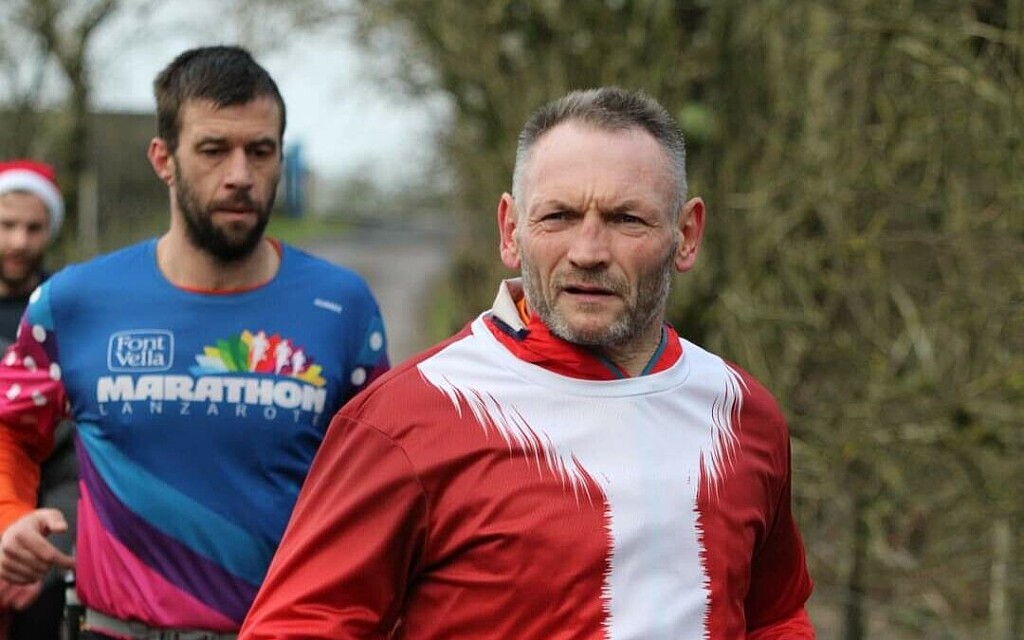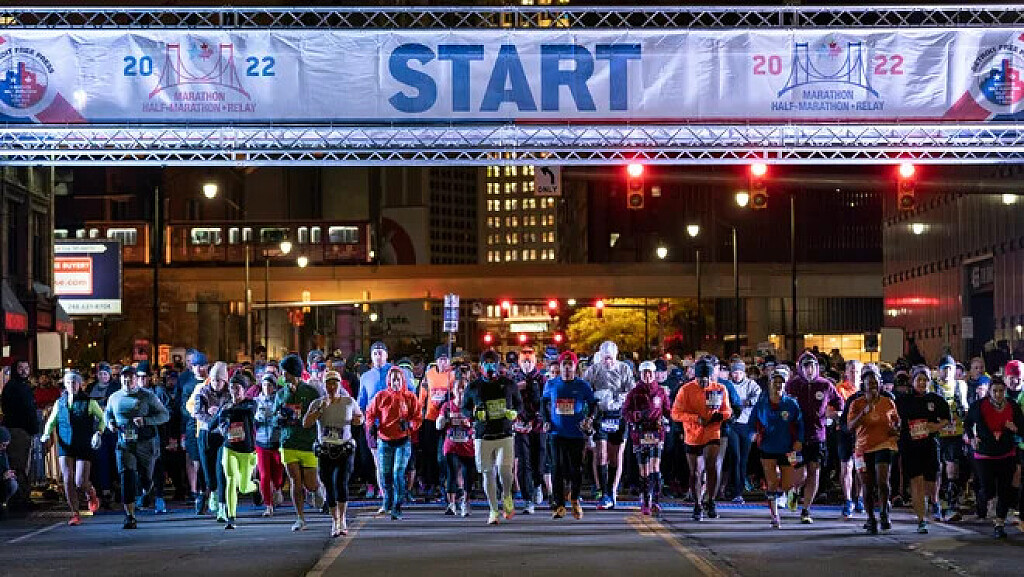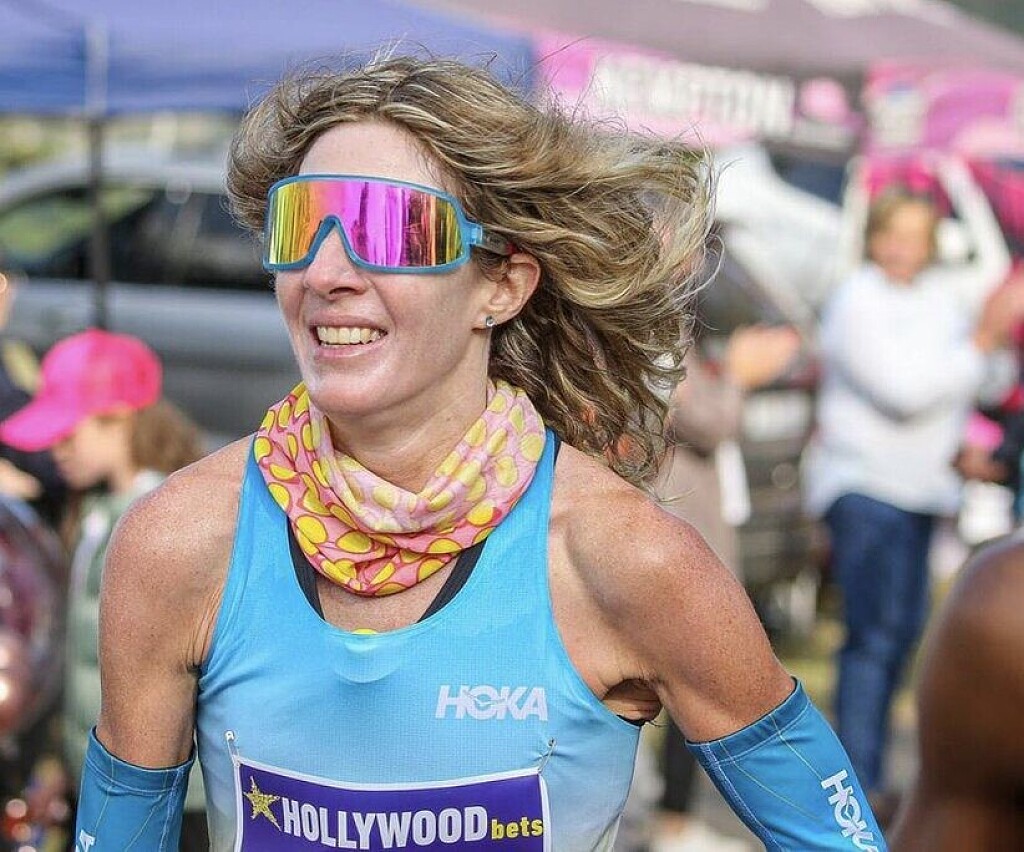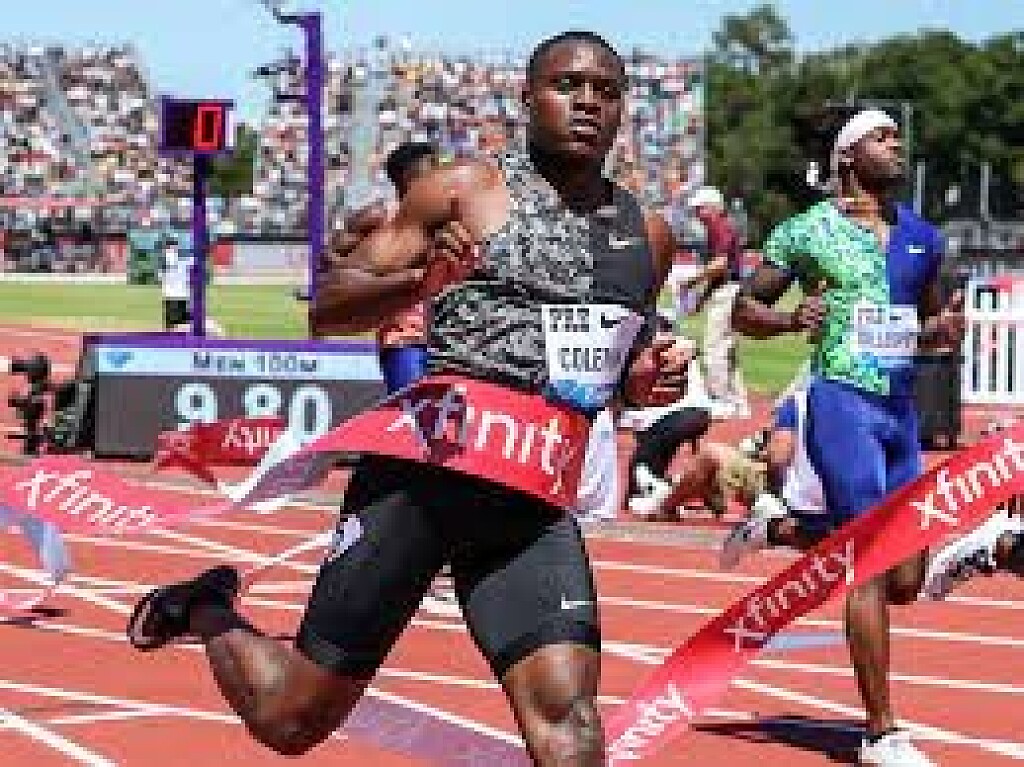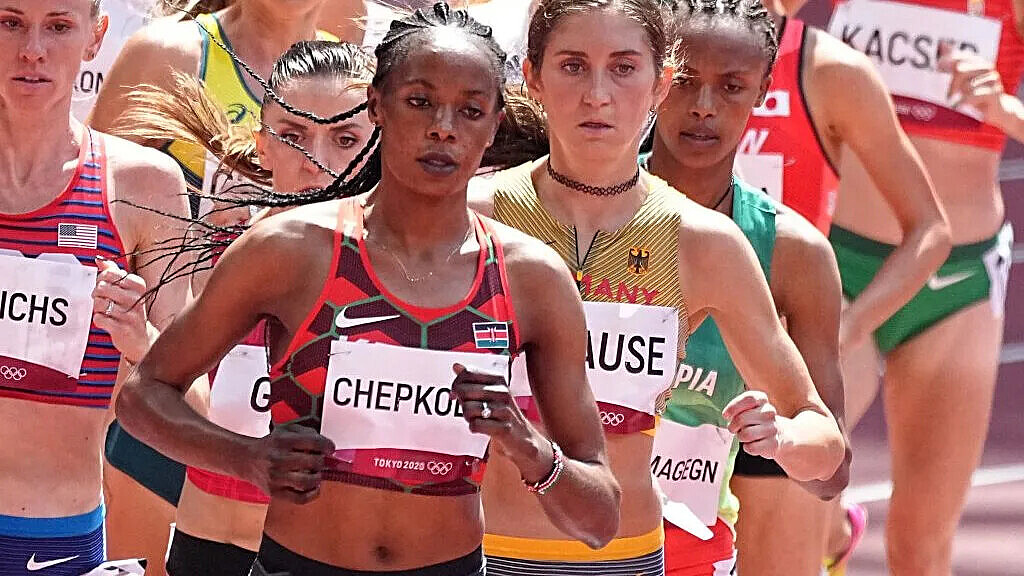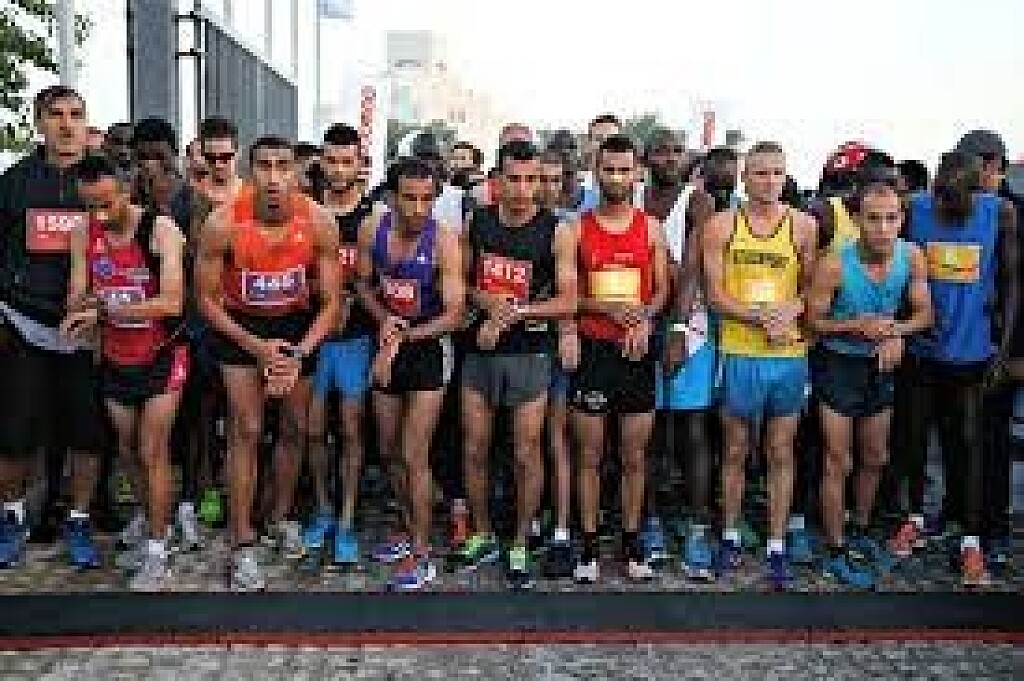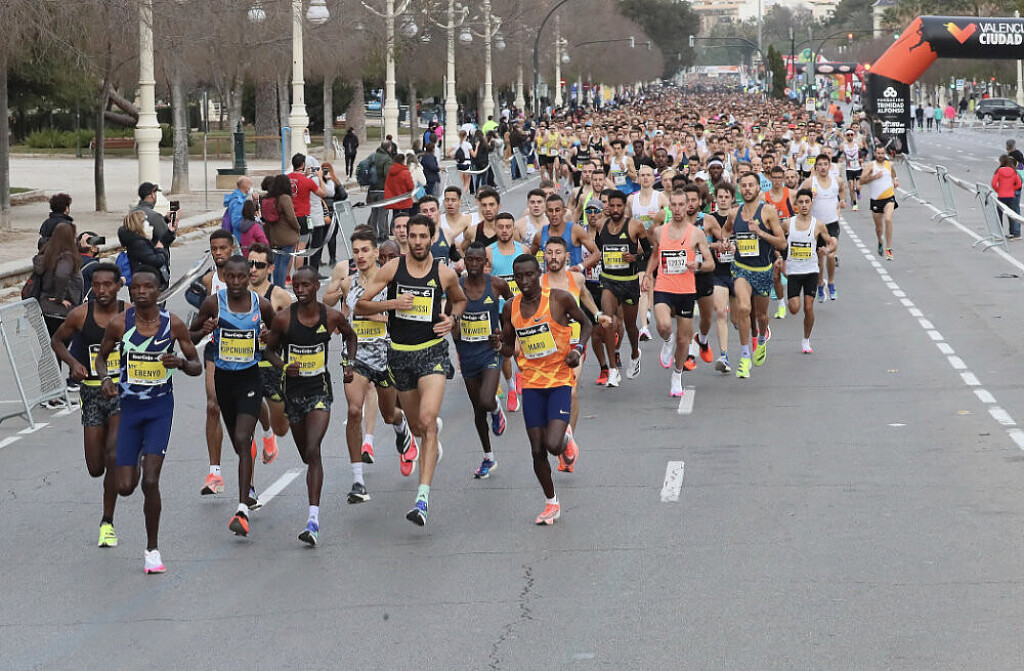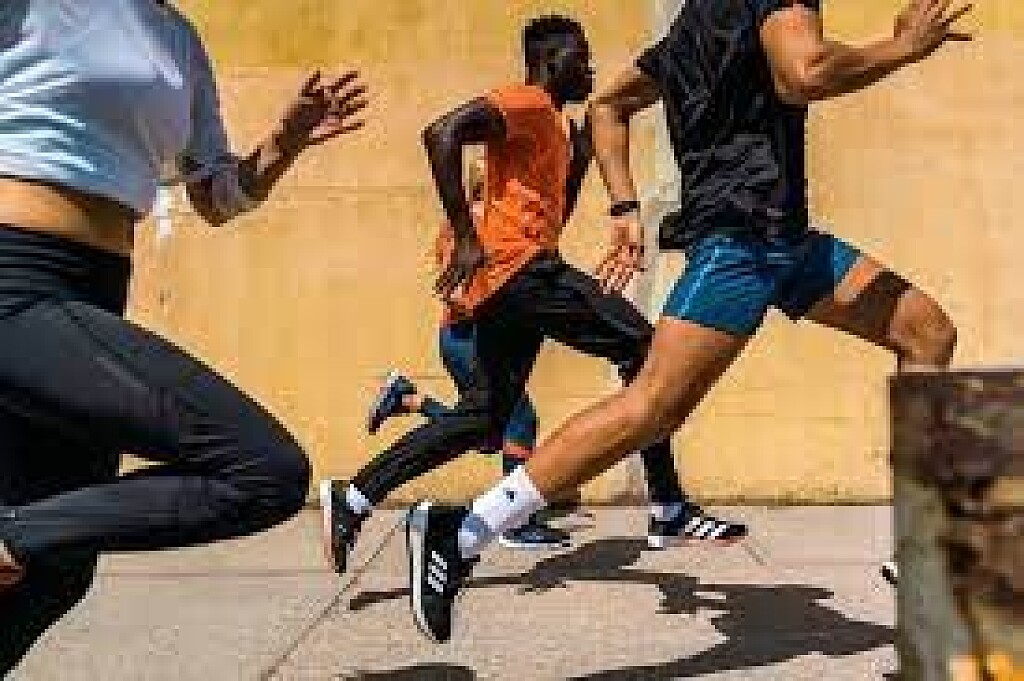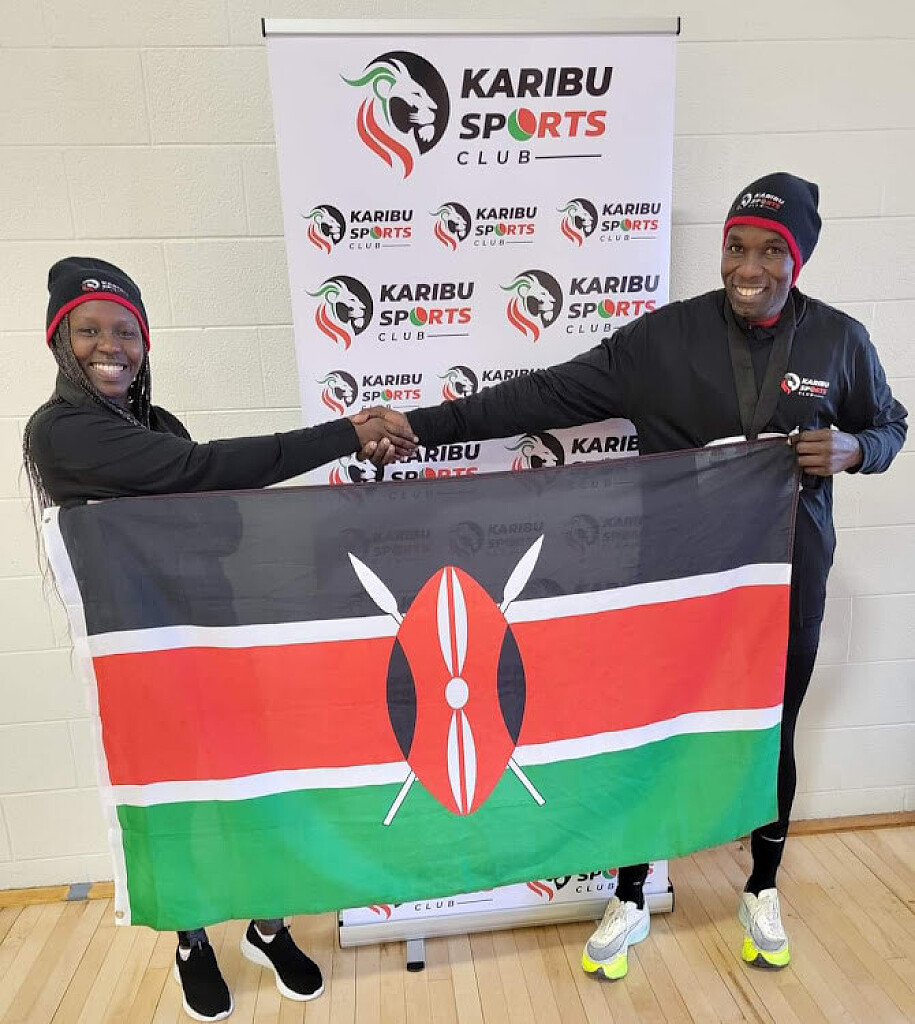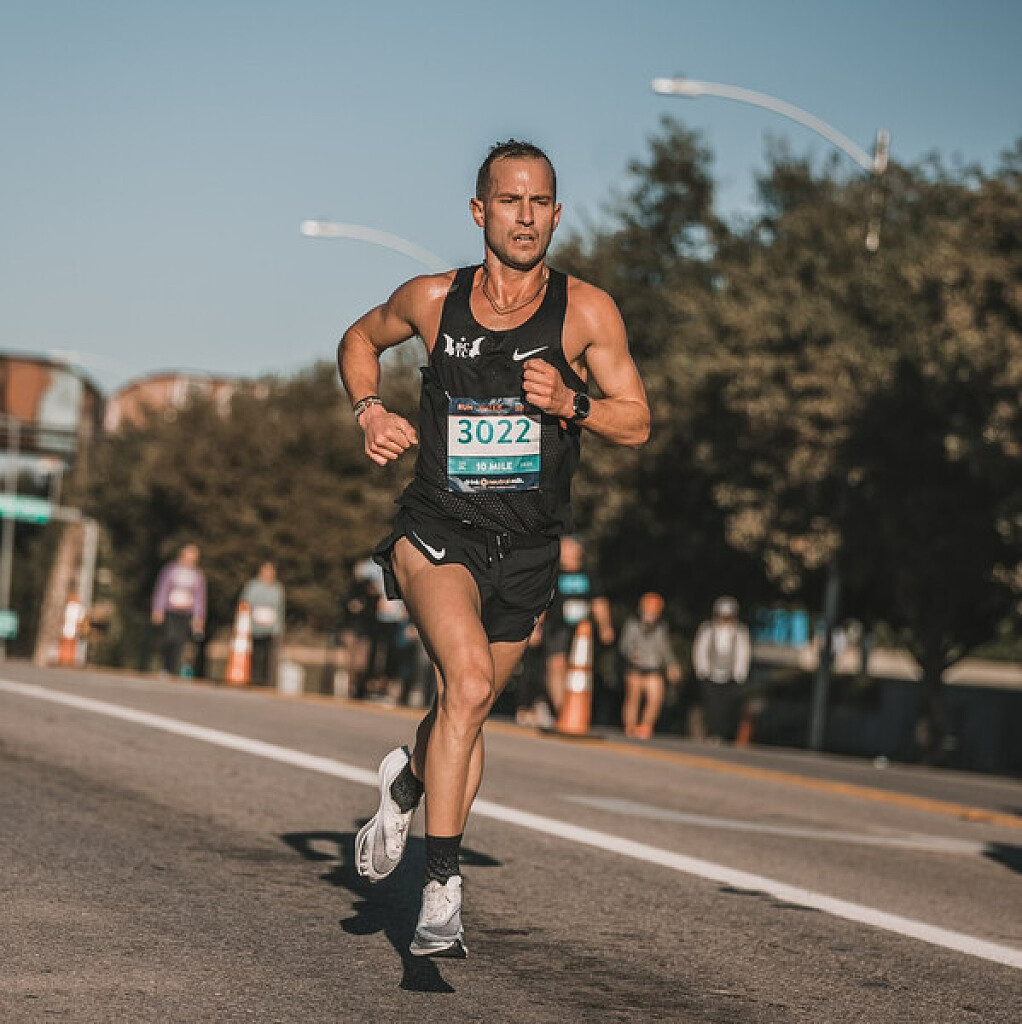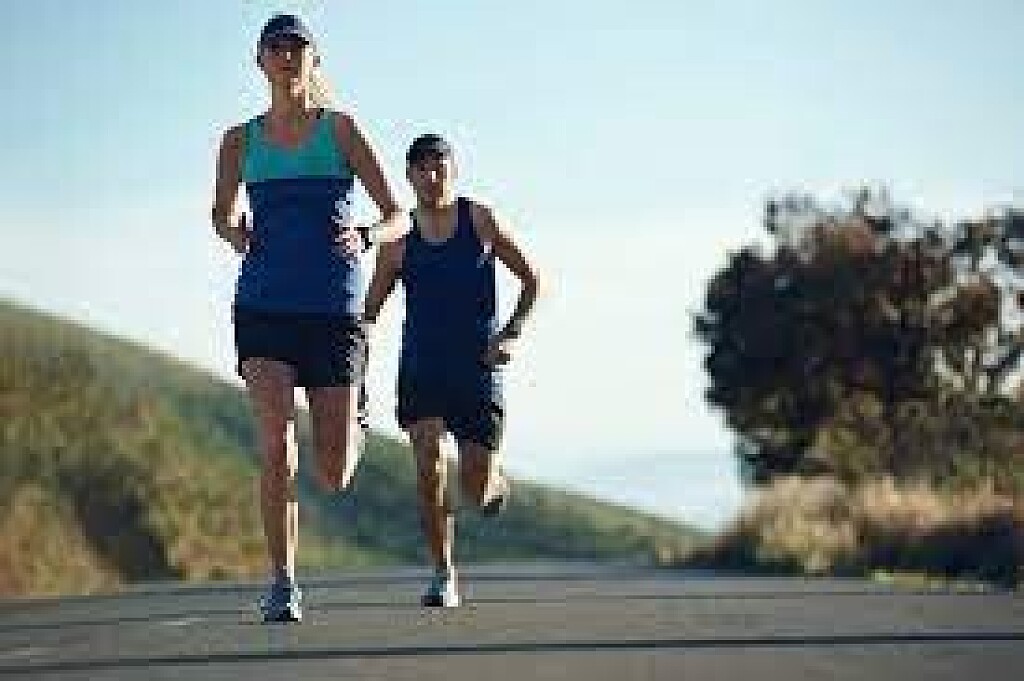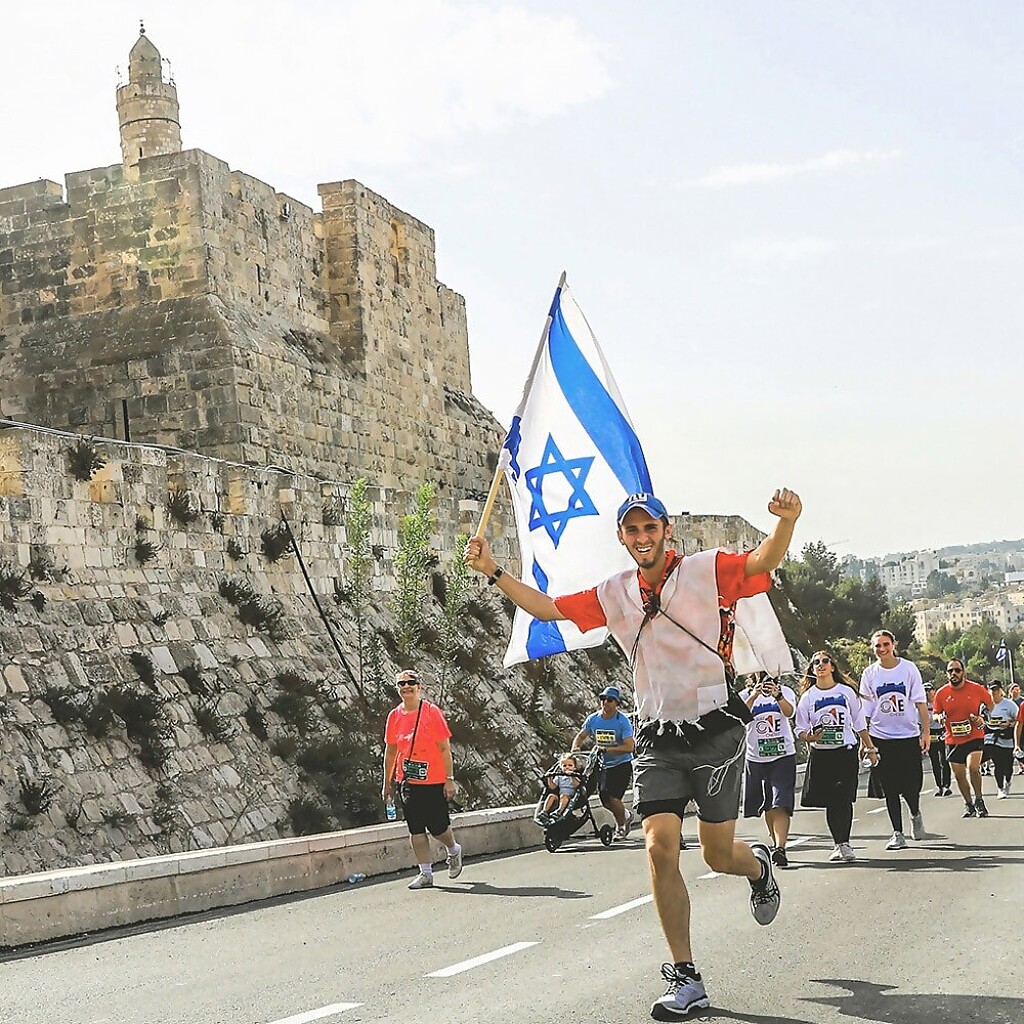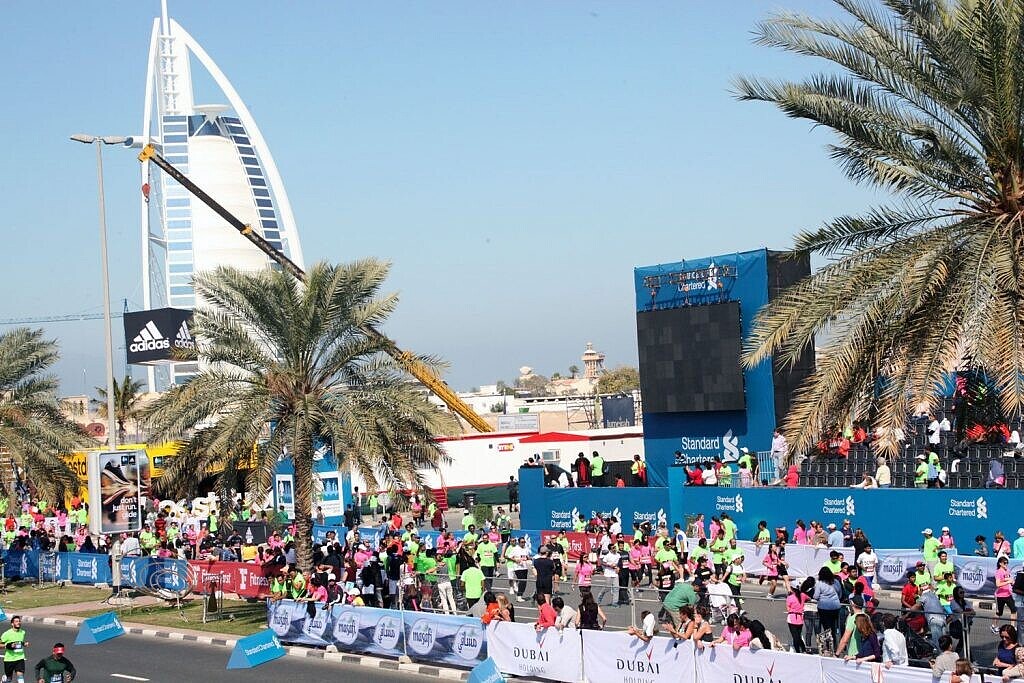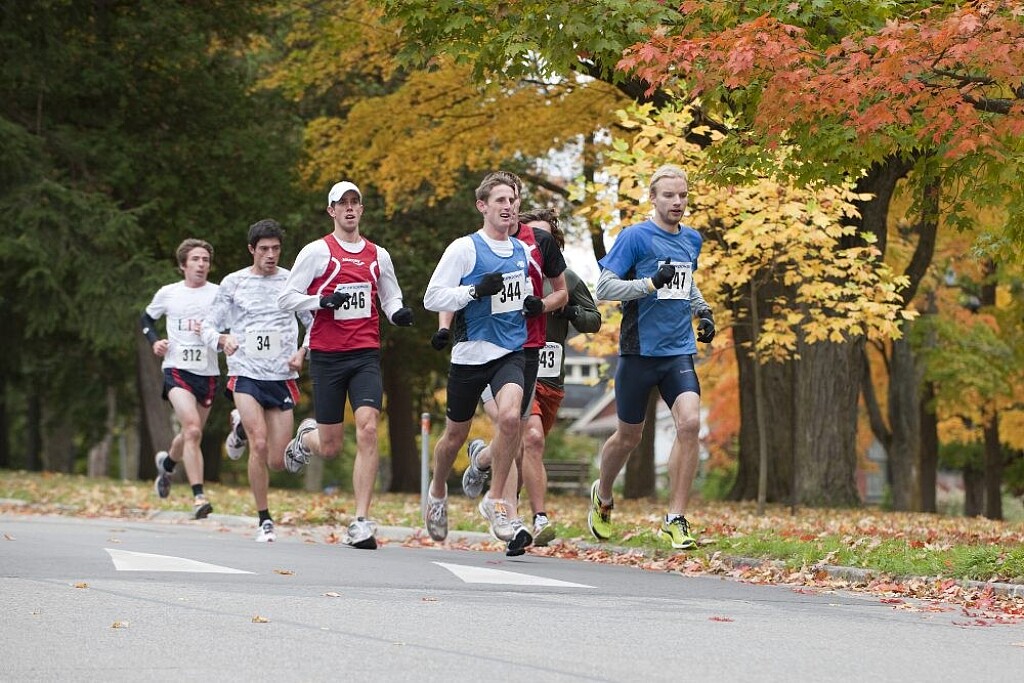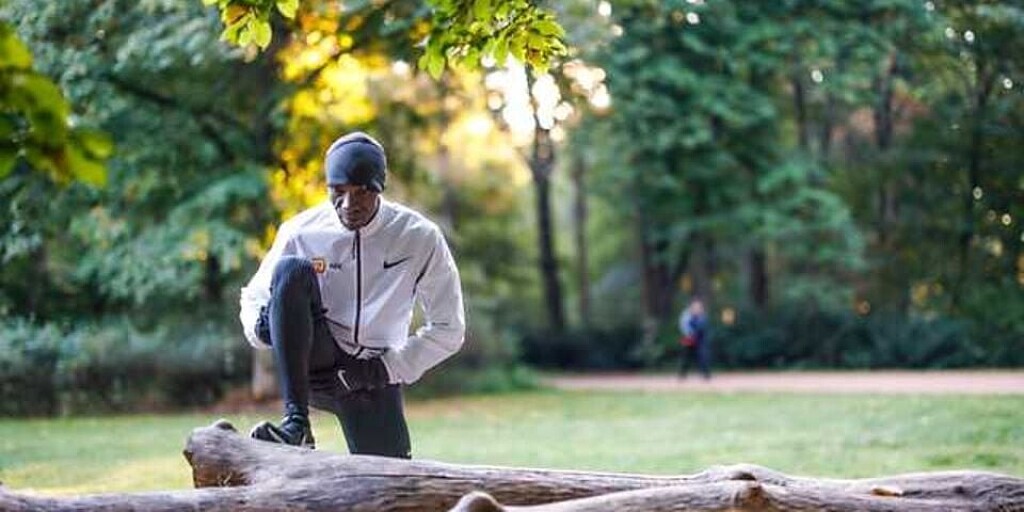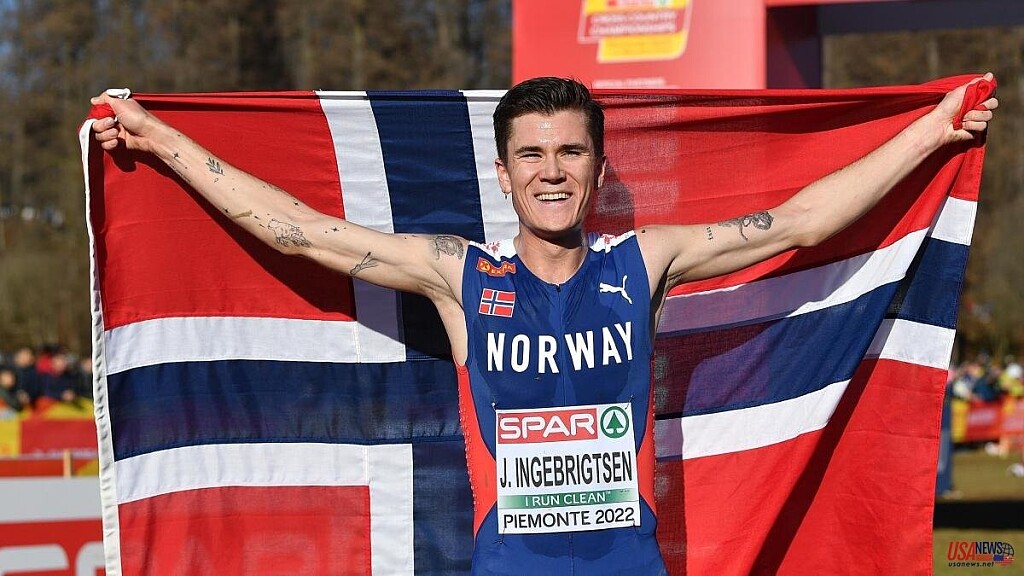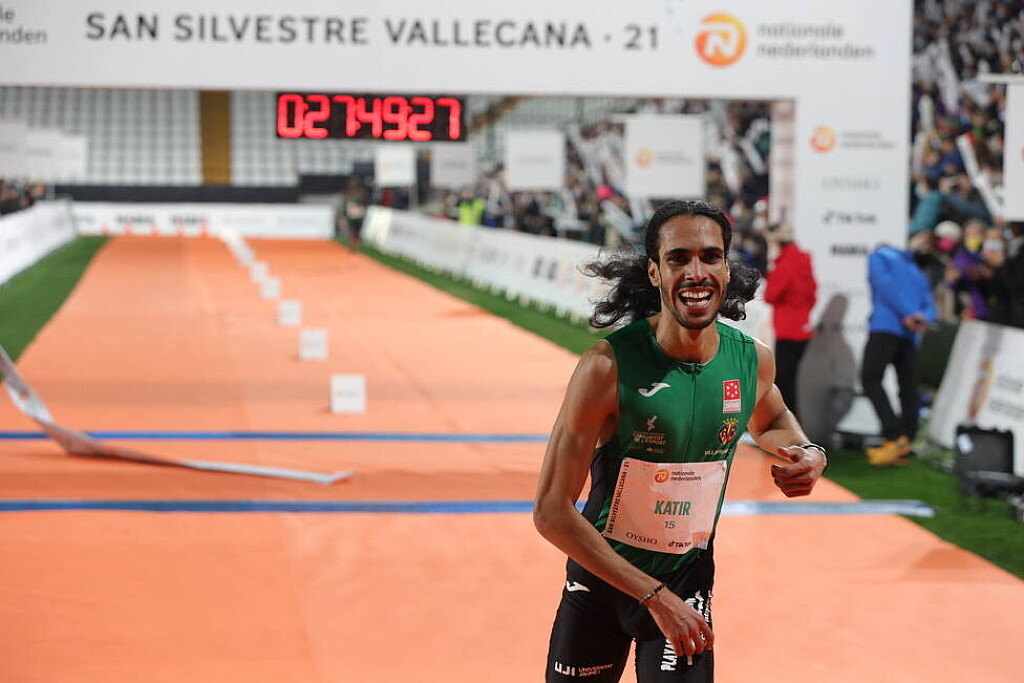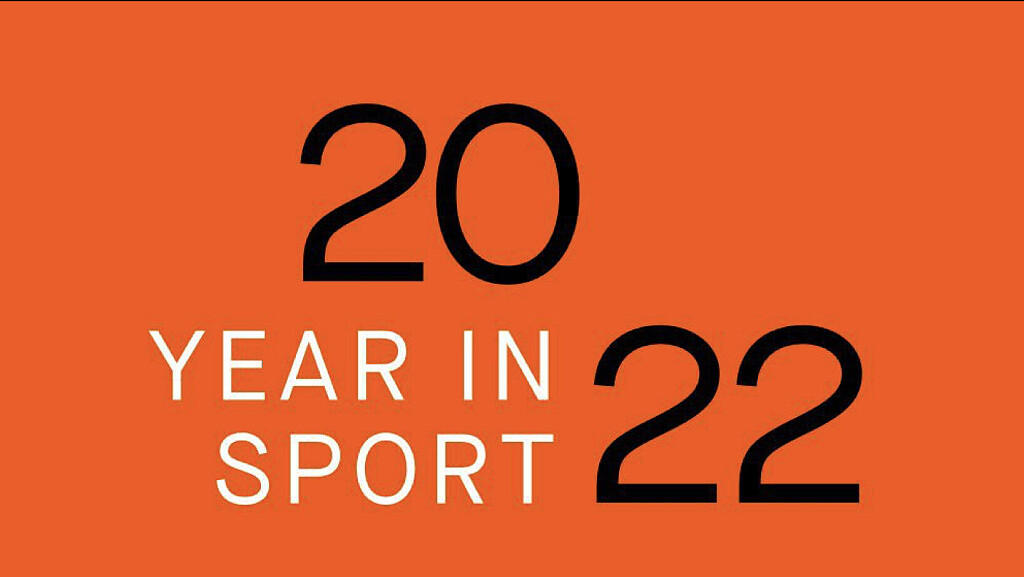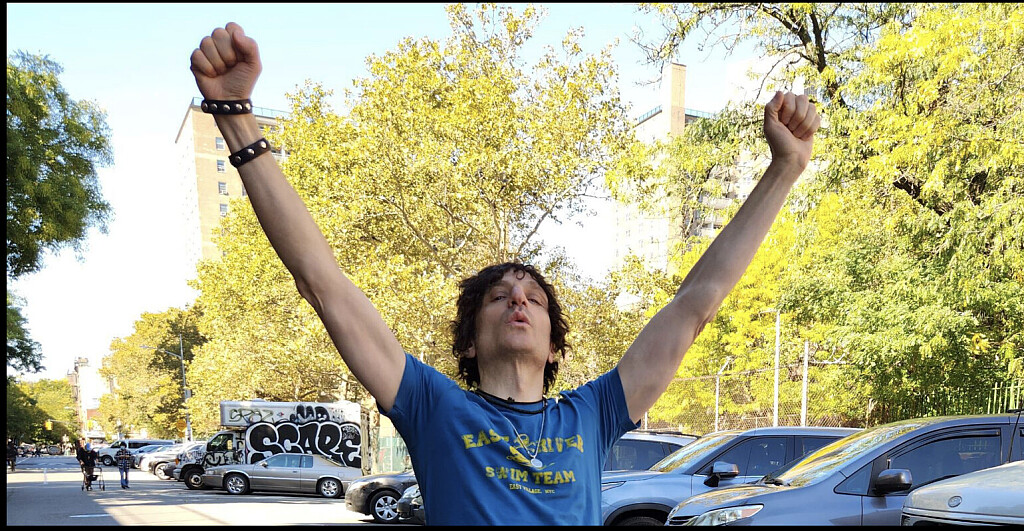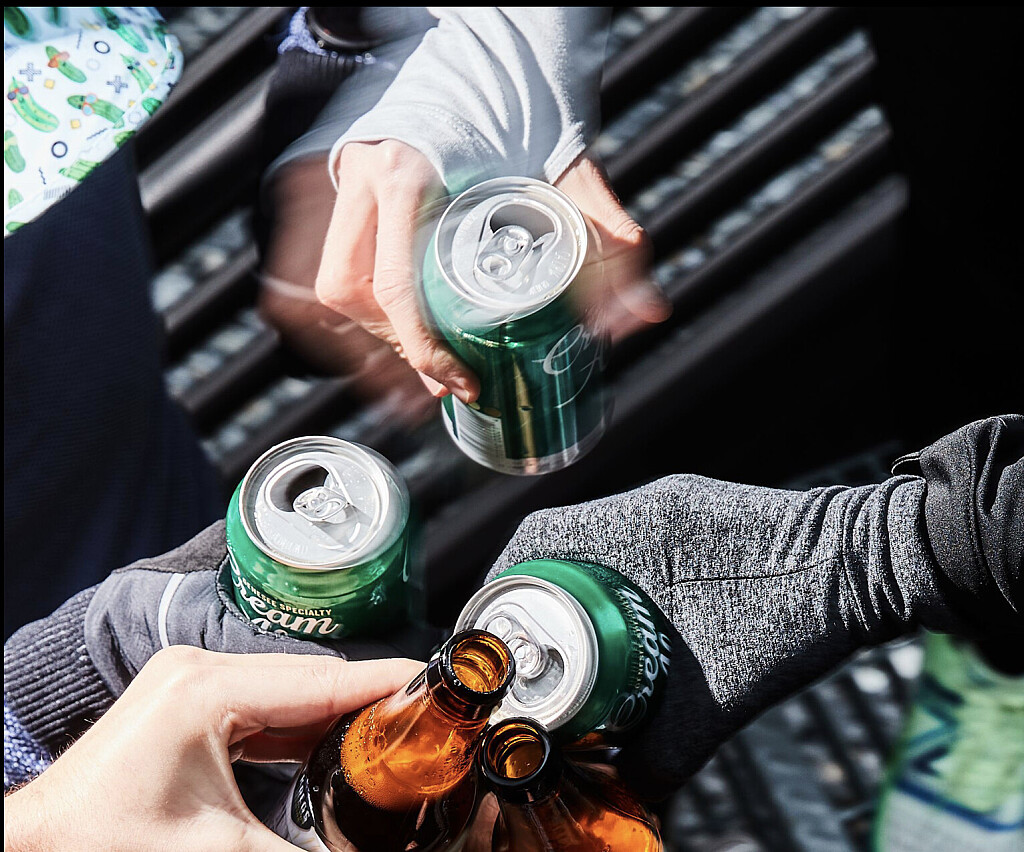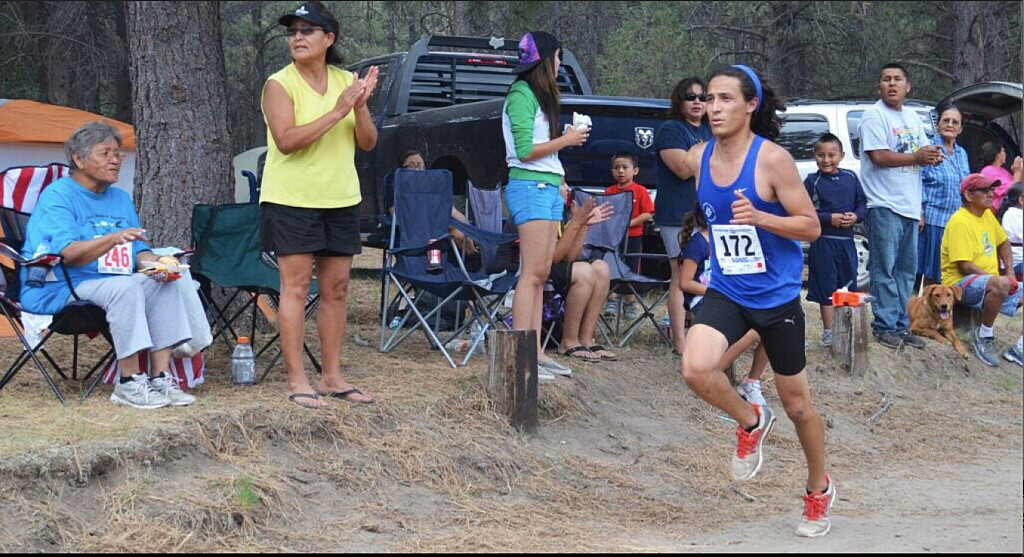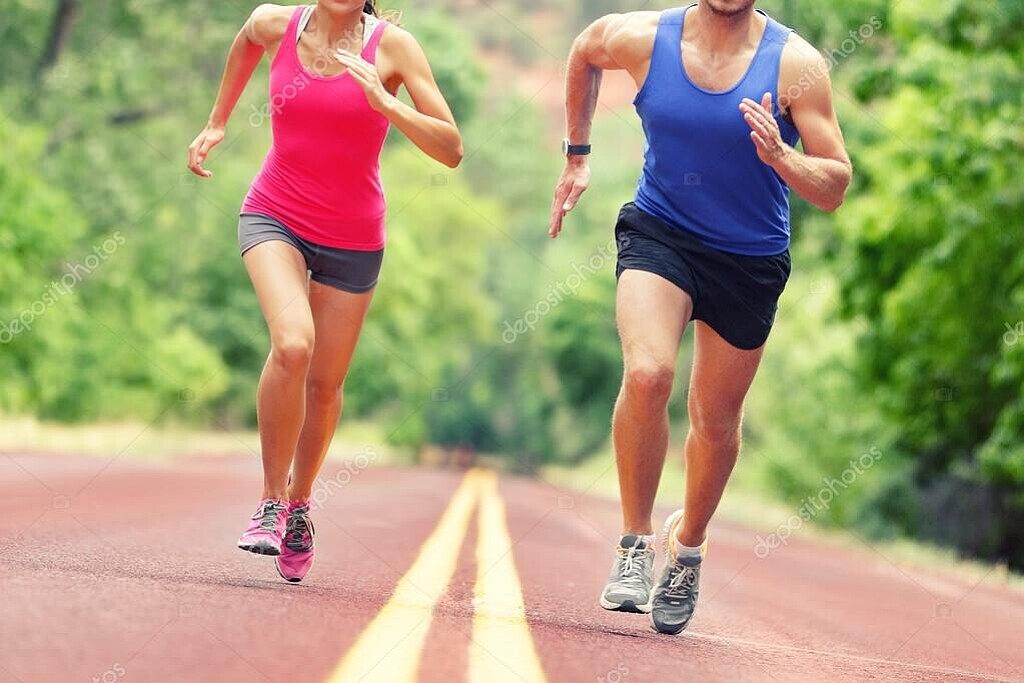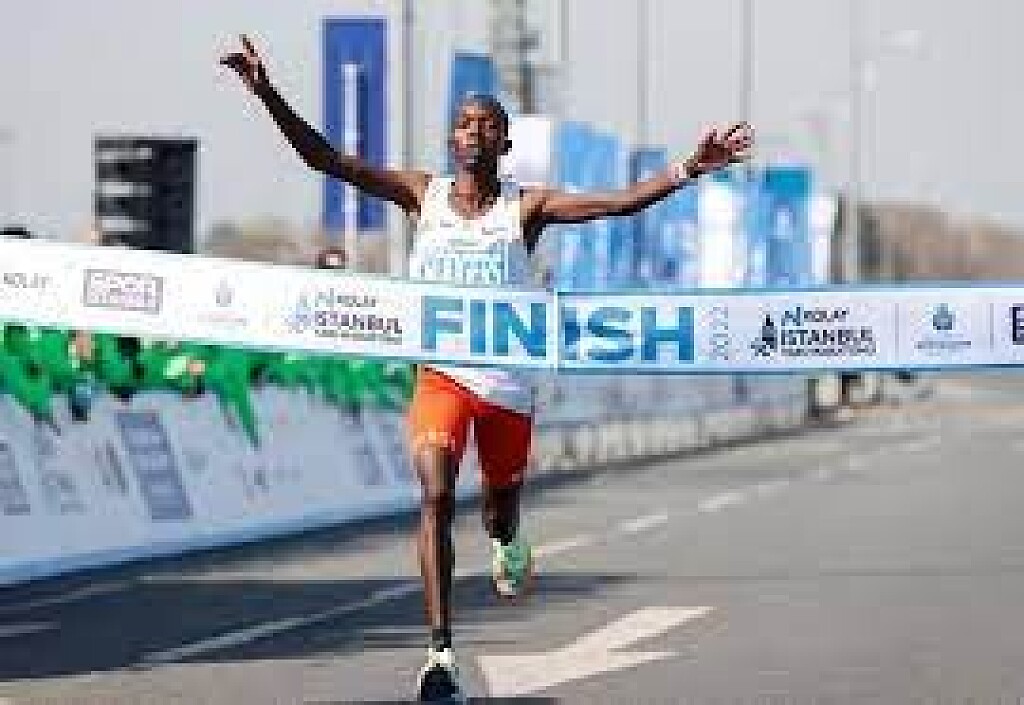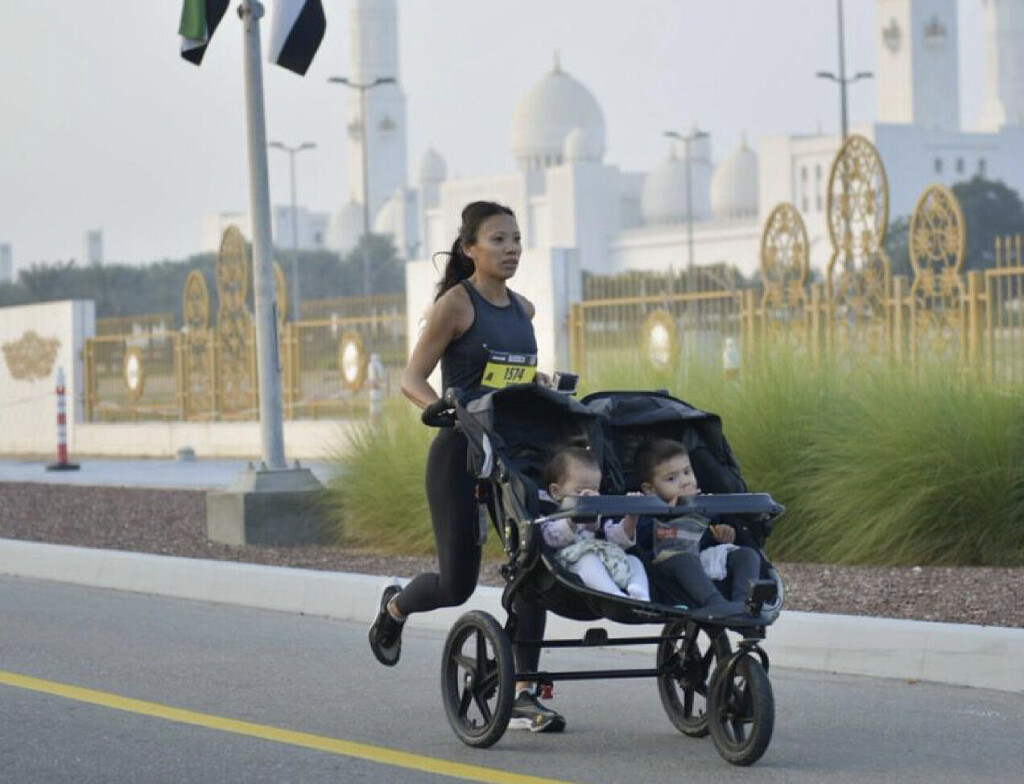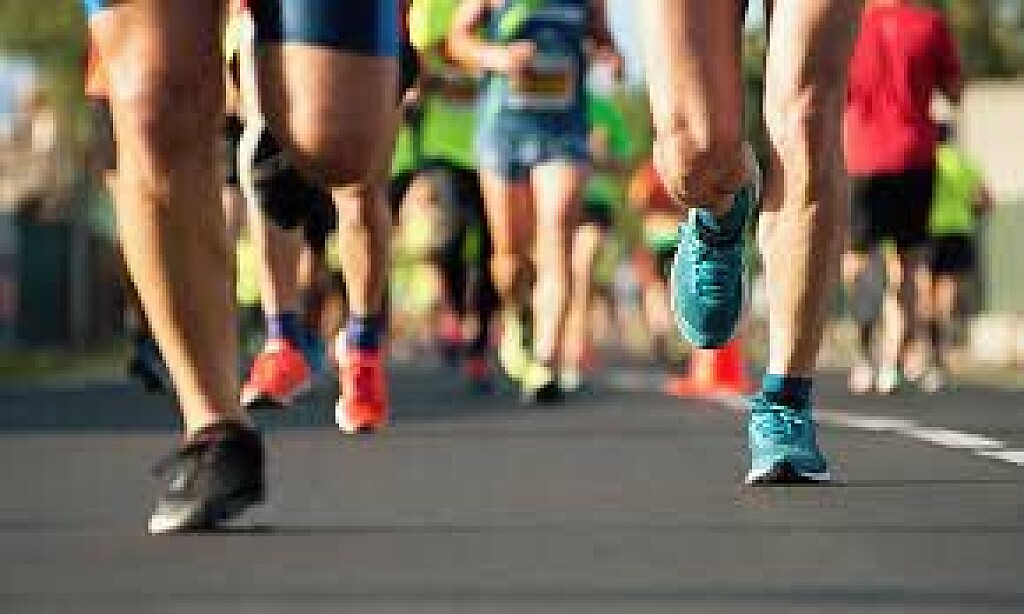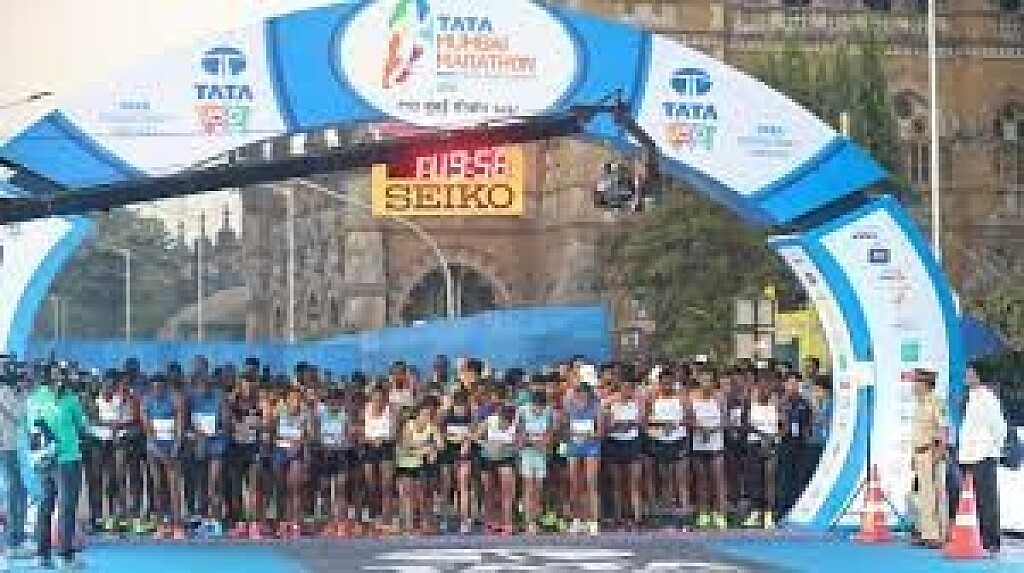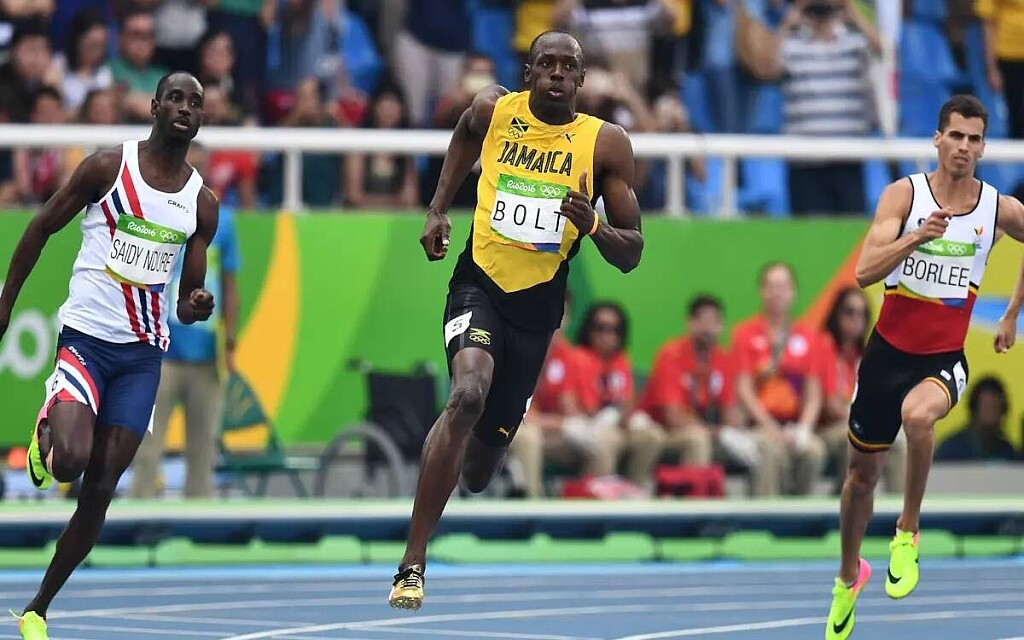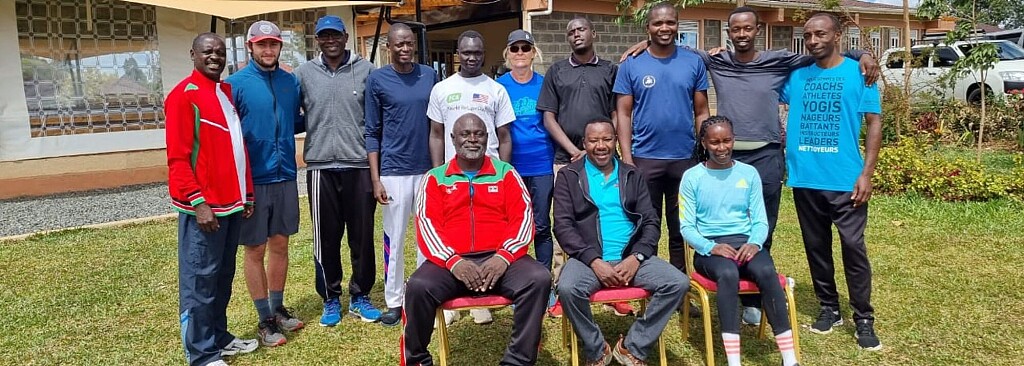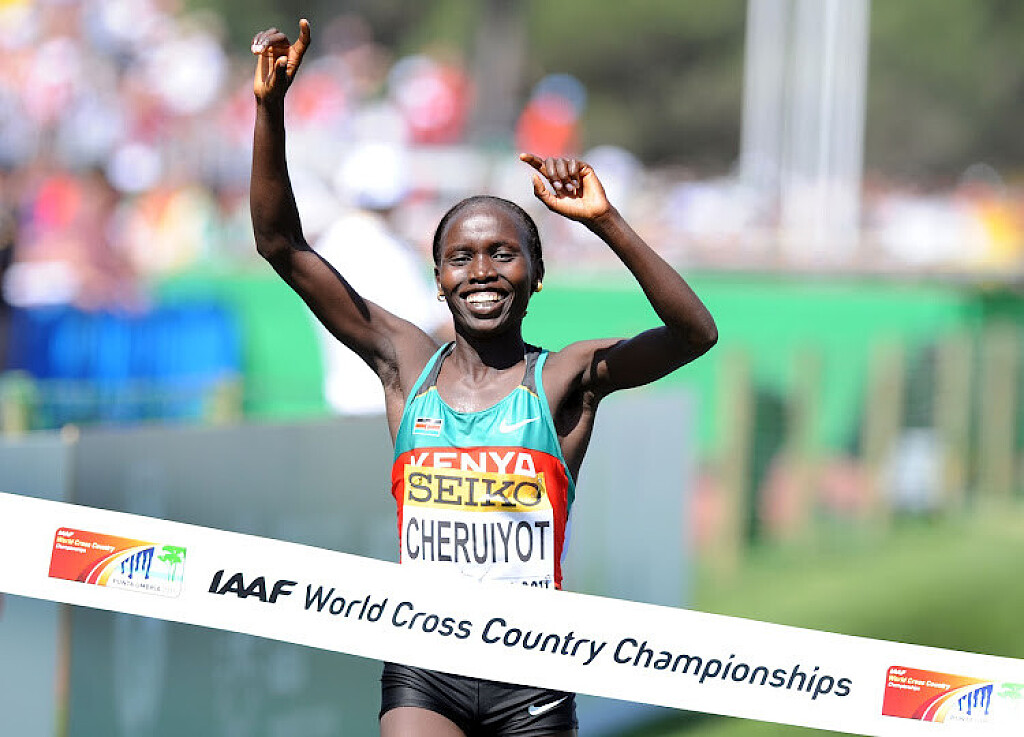Running News Daily
Running News Daily is edited by Bob Anderson in Mountain View, California USA and team in Thika Kenya, La Piedad Mexico, Bend Oregon, Chandler Arizona and Monforte da Beira Portugal. Send your news items to bob@mybestruns.com Advertising opportunities available. Over one million readers and growing. Train the Kenyan Way at KATA Running Retreat Kenya. (Kenyan Athletics Training Academy) in Thika Kenya. Opening in june 2024 KATA Running retreat Portugal. Learn more about Bob Anderson, MBR publisher and KATA director/owner, take a look at A Long Run the movie covering Bob's 50 race challenge.
Index to Daily Posts · Sign Up For Updates · Run The World Feed
Pogo hops: one drill to boost leg strength and prevent injuries
While your comfortably cushioned shoes keep you rolling along for hours, they may be preventing you from tapping into your body’s natural elasticity. Christopher McDougall and Eric Orton, coauthors of Born to Run 2: The Ultimate Training Guide, suggest working on foot and leg strength to enhance your ability to bound along the ground lightly, and tout leg stiffness as key.
Leg stiffness, the authors share, doesn’t mean (in this case) having tight muscles or reducing range of motion–rather, it means creating a stiff base so that muscles and tendons can recoil quickly. The more quickly you rebound into the air, the less likely you’ll get injured–after all, injuries happen when your feet meet the land rather than mid-stride.
The more quickly you can spring off each leg, the less your knee, calf, or Achilles tendon is forced to support your body. To get started, try adding pogo hops into your weekly training routine.

Pogo hops
Pogo hops “engage the arch and calves to activate natural elastic leg energy,” McDougall and Orton explain. By practicing these, you’ll learn to minimize ground contact while enhancing elastic energy.
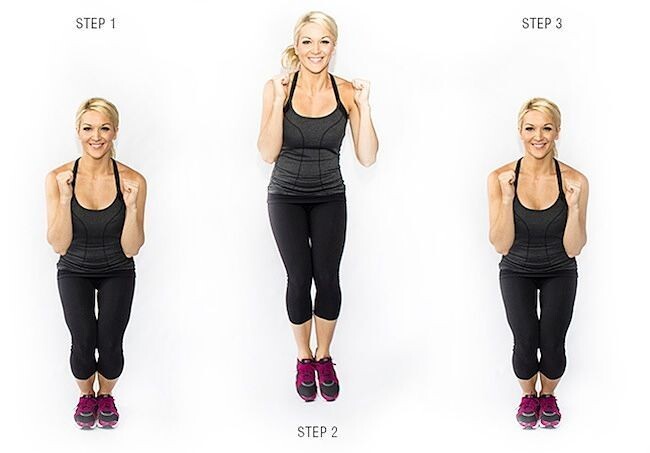
Pogo hops
Pogo hops “engage the arch and calves to activate natural elastic leg energy,” McDougall and Orton explain. By practicing these, you’ll learn to minimize ground contact while enhancing elastic energy.
Focus on getting off the ground quickly, with short bounces the goal rather than achieving height. Do these in bare feet, if possible–running shoes are OK too.
Two feet
Hop quickly up and down, jumping from your ankles with as little knee flex as possible–just like you would in a mosh pit, the authors suggest. Once you have a good pogo hop rhythm going, add some variety by jumping from side to side, front to back, and wherever your hops lead you.
Hop for 30–45 seconds or until you can no longer pogo quickly. Slow pogo hops increase ground contact time, so you want to avoid them.
One foot
Pogo just like you did before, but with one foot only.
Limit these to 10–15 and stop before you fatigue, limiting ground contact time.
(01/04/2023) ⚡AMPby Keeley Milne
Ethiopian Derara Hurisa to defend crown at 2023 Tata Mumbai Marathon
Ethiopia’s Derara Hurisa returns to defend his crown at Asia’s most prestigious Tata Mumbai Marathon on January 15, 2023, in a competitive Elite men’s field, with a dozen runners holding personal bests under the 2:08:09 course record he set in 2020.
The 18th edition of the USD 405,000 prize fund World Athletics Gold Label Road Race takes place after a two-year pandemic-forced break and will also witness over 55,000 amateurs across six categories on its much-awaited return.

The elite men’s and women’s winners will take home USD 45,000 each. The runners will be
further incentivized by a Course Record Bonus of USD 15,000.

“I’m up for the challenge and have set my sights on the title,” said Hurisa, who clinched the 2021 Guadalajara Marathon in Mexico in a time of 2:12:28.
Toeing the start line in the men’s section are also Hurisa’s compatriots Ayele Abshero and
Hayle Lemi and Kenya’s Philemon Rono, a training partner of the legendary Eliud Kipchoge.
Abshero was runner-up here in 2020, 11 seconds adrift of Hurisa, on an AIMS-certified course that is widely regarded as challenging. Abshero, who finished 10th at the 2022 Linz Marathon in Austria in 2:09:37, has a personal best of 2:04:23, which makes him the fastest in the field.
With a personal best of 2:04:33, Lemi is the second fastest in the group.
“I’m excited about my first Tata Mumbai Marathon. I’ve heard it’s a tough course,” said Lemi, winner of seven marathons, including the Boston Marathon in 2016 and Dubai in 2015. “It’s a tremendous field and is going to be close,” added the Ethiopian, a.k.a. Lemi Berhanu, who was runner-up in the 2021 Boston Marathon.
Rono finished an impressive sixth at the 2019 Boston Marathon and won the Toronto Marathon the same year in 2:05:00. He recorded sixth-place finishes at the 2021 Abu Dubai Marathon and the 2022 Seoul Marathon.
Chepkech, the dark horse
In the women’s field, seven runners hold personal bests under the course record of 2:24:33 set by Valentine Kipketer in 2013, with Dera Dida (Ethiopia), Sharon Cherop (Kenya) and Rahma Tusa (Ethiopia) leading the charge on their debut here.
Silver medalist at the 2019 World Cross Country Championships, Dida won bronze in 10,000m at the 2019 African Games. In 2022, she won the Bejaia Half Marathon in 71:17 and finished eighth at the Great Ethiopian Run 10K.
“The Tata Mumbai Marathon has been on my running bucket list for some time. I’ve heard the people of Mumbai and India are very passionate about the running festival, and I look forward to this experience,” Dida said.
Cherop won marathon bronze at the 2011 World Championships and emerged victorious at the 2012 Boston Marathon. In 2022, she finished third at the Nairobi Marathon and the Buenos Aires Marathon.
Tusa took fourth place at the 2022 Sydney Marathon in 2:26:30 and the 2021 Valencia Marathon (in 2:23:20). She was fifth at the 2018 New York Marathon and won in Rome the same year.
Kenya’s Sheila Chepkech, also a first-timer in Mumbai, is the dark horse here. She won the 2022 Nairobi Marathon in 02:27:04. Previously, she finished second at the 2018 Milan Marathon and the 2017 Kosice Marathon. Also in the fray is the 2019 winner Worknesh Alemu of Ethiopia.
Vivek Singh, Jt MD, race promoter Procam International, said: “A truly world-class field will descend in Mumbai for the Tata Mumbai Marathon, a reflection of the event’s stature as one of the top 10 marathons in the world. The TMM returns bigger and better, and the spirit of #HarDilMumbai will burst to life come race day, with runners taking part across six categories.”
International Elite field:
Men:
Derara Hurisa (ETH) 2.08.09 (Course Record holder)
Ayele Abshero (ETH) 2.04.23
Hayle Lemi (ETH) 2.04.33
Philemon Rono (KEN) 2.05.00
Kebede Wami (ETH) 2.06.03
Aychew Bantie (ETH) 2.06.23
Hailu Zewdu (ETH) 2.06.31
Merhawi Kesete (ERI) 2:06:36
Masresha Bere (ETH) 2.06.44
Okubay Tsegay (ERI) 2.06.46
Reuben Kerio (KEN) 2.07.00
Hosea Kiplimo (KEN) 2.07.39
Abdela Godana (ETH) 2.08.06
John Langat (KEN) 2.09.46
Abida Ezamzamil (MOR) 2.09.52
Mesfin Nigusu (ETH) 2.09.53
Augustine Choge (KEN) 2.20.53
Women:
Dera Dida (ETH) 2.21.45
Sharon Cherop (KEN) 2.22.28
Rahma Tusa (ETH) 2.23.20
Sifan Melaku (ETH) 2.23.49
Adanech Anbesa (ETH) 2:24:07
Zinah Senbeta (ETH) 2.24.21
Ayantu Kumela (ETH) 2.24.29
Worknesh Alemu (ETH) 2.24.42
Letebrhan Haylay (ETH) 2.24.47
Zenebu Fikadu (ETH) 2.25.11
Rodah Tanui (KEN) 2.25.46
Kumeshi Sichala (ETH) 2.26.01
Lemeneh Kasu Bitew (ETH) 2.26.18
Sheila Chepkech (KEN) 2.27.04
Beshadu Birbirsa (ETH) 2.30.03
Gode Chala (ETH) 2.33.22
Anchalem Haymanot (ETH) Debut.
(01/04/2023) ⚡AMPby Sports Africa
Tata Mumbai Marathon
Distance running epitomizes the power of one’s dreams and the awareness of one’s abilities to realize those dreams. Unlike other competitive sports, it is an intensely personal experience. The Tata Mumbai Marathon is One of the World's Leading Marathons. The event boasts of fundraising platform which is managed by United Way Mumbai, the official philanthropy partner of the event. Over...
more...You cannot perform well in a polluted environment Says Eliud Kipchoge
Protecting the environment is a priority for many in 2023, and athletes like Eliud Kipchoge are leading the way.
In 2020, the Kenyan double Olympic gold medalist and world record holder adopted 50 hectares of forest land in the Kaptagat Forest near where he spends most of the year training at high altitude.
“If you train in a polluted environment, then you cannot perform,” marathon great Kipchoge told the BBC from his homeland.
“Kaptagat Forest made a huge difference in my career. I’ve been here for the last 20 years and without this forest, and staying in the area, I think that I could not be where I am today.”
“I realized that the only way to perform and to actually enjoy running is by training in a good place, breathing clean air.”

A year later, the distance-running great decided to create a foundation that focused on education and the environment, including planting trees.
To date, Kipchoge has adopted 130 hectares of forest, and claims that it’s ‘just the start’.
His wider goals include adopting a forest in every country in which he would plant indigenous trees.
Kipchoge revealed the principles he employs in his daily routine in order to help protect the environment, in an interview with Olympics.com for Earth Day 2022:
“Every day is Earth day for me,” Kipchoge told Olympics.com.
“I have improved my lifestyle to help fight climate change. I walk more, I minimize my water usage and I always try to encourage others to plant a tree on an important day or anniversary.
"My daily green effort is walking. I walk as much as I can instead of driving everywhere, so I can minimize my emissions."
Creating Africa’s Olympic Forest
Protecting the environment is also an area of focus for the International Olympic Committee (IOC).
In 2021, the IOC started an initiative to grow 590,000 native trees across approximately 90 villages in Mali and Dakar 2026 Youth Olympic Games host nation Senegal.
The Olympic Forest is an important element of the IOC’s strategy to address climate change, which includes cutting emissions in line with the Paris Agreement, and reducing the impact of the organisation’s footprint. With an end-goal to become climate positive, the IOC is set to cut its emissions 30 percent by 2024 and 50 percent by 2030, and compensate more than its remaining emissions.
While planting trees will help to protect the environment, the project also aims to create wider social and economic benefits for communities in Mali and Senegal that are heavily impacted by droughts and floods.
(01/04/2023) ⚡AMPReady to run stronger and faster? Start building your base
Whatever your running goals are this season, making sure you have a strong base is essential. Just like a well-built house, creating a solid foundation is key before beginning to train for specific racing goals. Working on aerobic efficiency, and improving the structural ability of your body to withstand training stresses are ideal things to focus on as you embark on a new season of running.
A running base is usually built over six weeks or longer: the specifics will depend on your running experience and fitness level. Even if you haven’t taken an off-season, spending a few weeks dialing in the basics will get you started on the right (or left) foot.

Strengthen your aerobic engine
Essential to base training is improving your ability to use oxygen–creating a strong aerobic engine. The more efficiently you can use oxygen when you run, the longer you can delay the point at which lactic acid begins to build up (a.k.a. you reach your lactate threshold), and the longer you’ll be able to maintain a faster pace once you begin to add speedwork. Base training should include lots of easy and steady-state running, allowing you to recover quickly between runs.
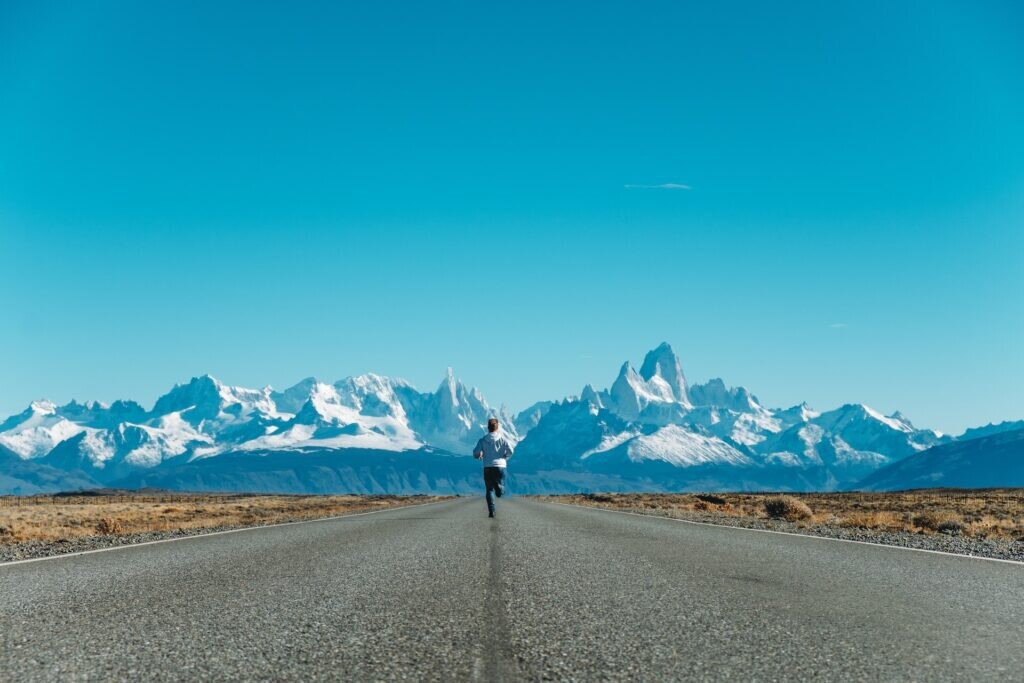
Coach and podcast host Jason Fitzgerald explains on Strengthrunning.com that runners should gradually increase mileage as they begin to build their base. While the amount of volume you add to your regular running will vary depending on your experience and goals, most runners will have one long run per week (or every second week) that they should build on.
Build structural tolerance and durability
Structural tolerance or integrity refers to the capacity of your tendons, ligaments and joints to withstand a progressive increase in physical training. The greater your structural tolerance, the longer your body can continue to resist fatigue and injury.
While your base training will include mostly easy mileage, you can start to build structural tolerance by taking some of those easy runs over rolling hills and varied terrain. Adding in some basic strength training and mobility exercises is another great way to build your structural tolerance, and you don’t need fancy gym equipment to get started.
Try this bodyweight-strength routine at home and stay injury-free (and fast) all season. You’ll make your entire body stronger and more resilient to injuries, which will allow you to train harder later on without getting injured.
(01/03/2023) ⚡AMPby Keeley Milne
British man completes 365 straight marathons, earning a well-deserved beer
On Saturday, Gary McKee completed his 365-day run streak of a marathon every day in his hometown of Cleator Moor, U.K. Thousands of supporters and media were on hand to help him celebrate his accomplishment of covering more than 9,500 miles (15,289 kilometers) while raising more than $2,000,000 for charity.
McKee’s marathon streak was not the only streak that ended. McKee went one year without drinking, and celebrated his huge run with a well-deserved cold one. The beer was a personalized craft IPA from Ennerdale Brewery in Cumbria, U.K., called “The Marathon Man 365 IPA”.

McKee ran the final stretch with his friends and family and immediately thanked everyone who came out for all their support during his challenge: “The reason I’m doing this is that I’m lucky enough to be able to take on a physical challenge of this scale, and every day I think about all the people going through cancer treatment who face their own physical and emotional challenges.”
McKee ran for Macmillan Cancer Support and Hospice in West Cumbria, which supported his father through a cancer diagnosis in 1997. His father recovered from cancer, but died from an unrelated illness in 2005.

McKee, who is himself a father of three, routinely woke up at 5 a.m. and headed out on his marathon before starting his work shift at 2 p.m.
Although McKee is considered to be the first British runner to run 365 consecutive marathons, Spanish ultrarunner Ricardo Abad Martinez holds the world record, with 607 marathons in 607 days between October 2010 and February 2012.
McKee told local news he will take a break from marathoning over the next couple of weeks to spend time with his family before planning his next challenge.
(01/03/2023) ⚡AMPby Running Magazine
Ugandans Joshua Cheptegei and Prisca Chesang reign in Madrid
Two-time world 10,000m champion Joshua Cheptegei and Ugandan compatriot Prisca Chesang were victorious at the San Silvestre Vallecana, a World Athletics Elite Label road race, in ideal conditions in Madrid on Saturday (31).
The men's 10km race had been billed as a thrilling encounter between world 10,000m record-holder Cheptegei and Spain's world 1500m bronze medalist Mohamed Katir. The Ugandan star, who hadn’t competed since the World Championships in Oregon, took command of the pacing duties right from the start and his swift early pace could only be followed by Katir, his compatriot Jesús Ramos and Italy's Ilias Aouani.

The first kilometer, which includes an uphill section of about 350 meters, was covered by the lead quartet in 2:41. The speed then increased over the second kilometer, covered in 2:36 for a 5:17 2km split, with Cheptegei always at the helm. During the third kilometer the two Spaniards briefly took the lead to reach 3km in 8:00, a pace which proved too fast for Aouani.
Over the following kilometers, Katir and Cheptegei ran absolutely even, none of them ahead of the other and the tandem went through halfway in a brisk 13:16, still with Ramos for company. Ramos began to fade about 200 meters later and the race became a fascinating clash between Cheptegei and Katir.
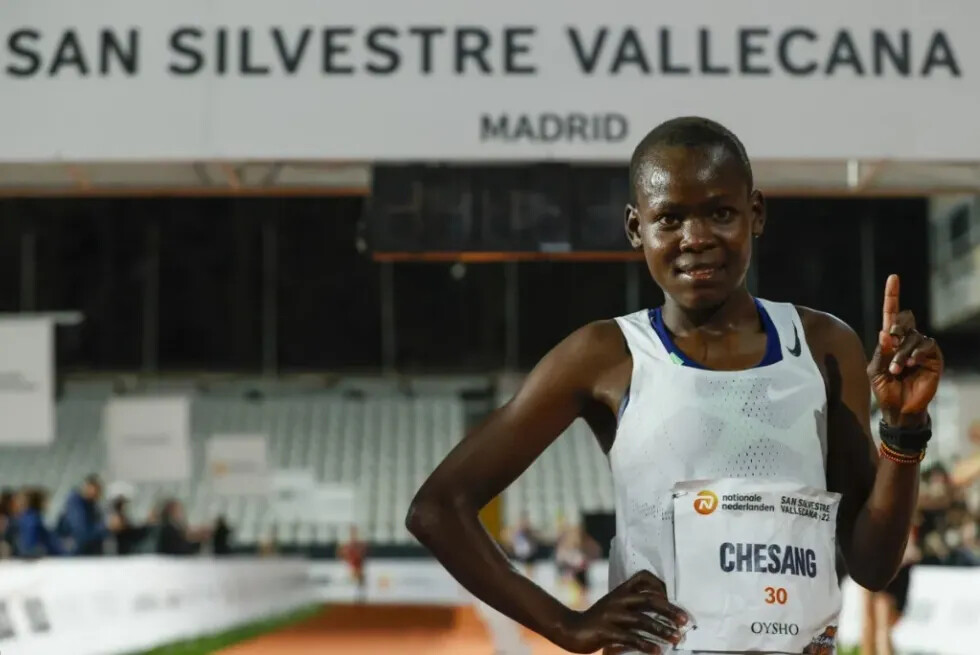
The Ugandan, who holds the second ever quickest 10km performance of all time (26:38), tried to get rid of Katir after reaching 7km in 18:35, but the 24-year-old Spaniard remained in close attendance. The key move came with the clock reading 20:45, shortly before the 8km checkpoint, when Cheptegei finally managed to open up a gap of a few seconds over the Spaniard.
The Kapchorwa native progressively extended his lead over the ninth kilometer – the toughest of the race – and then cruised home in 27:09, the fifth quickest performance in Madrid, to finish 10 seconds ahead of Katir while Ramos managed to keep his chasing Spaniards at bay to finish third in 27:52.
“I knew Katir was going to be a tough rival since he has improved a lot over the last few seasons,” said Cheptegei. “Today's race was my first competition in more than five months so my only target was to regain sensations. Of course I also wanted to win so I’m leaving Madrid delighted.”
Chepetegi confirmed that he plans to defend his world cross-country title in Bathurst on 18 February and that he’ll likely make his marathon debut after the Paris 2024 Olympic Games.
Following the last-minute withdrawal of pre-race favorite Tsehay Gemechu, the early stages of the women's race became a three-way battle between world U20 5000m bronze medalist Prisca Chesang, Burundi's Francine Niyonsaba and Kenya's world steeplechase record-holder Beatrice Chepkoech. That trio covered the opening kilometers at 2:56/km pace, reaching 3km in 8:44, then the Ugandan teenager broke away from her rivals. By midway (14:29) she was six seconds ahead of Chepkoech, herself another 11 seconds clear of Niyonsaba.
The leader maintained her rhythm over the following kilometers but her pursuers' pace decreased. With a quarter of the race to go, Chesang's advantage on Chepkoech had grown to 18 seconds.
At the tape, Chesang was timed at 30:19, the third quickest performance here, bettered only by Brigid Kosgei (29:54) and Hellen Obiri (29:59) in 2018. Further back, Niyonsaba overtook a fading Chepkpech on the last uphill section to take the runner-up place in 30:58 to Chepkoech's 31:06.
Leading results
Men
1 Joshua Cheptegei (UGA) 27:09
2 Mohamed Katir (ESP) 27:19
3 Jesús Ramos (ESP) 27:52
4 Sergio Paniagua (ESP) 28:00
5 Aaron Las Heras (ESP) 28:04
6 Carlos Mayo (ESP) 28:04
7 Ignacio Fontes (ESP) 28:06
8 Carlos Díaz (ESP) 28:08
9 Nassim Hassaous (ESP) 28:13
10 Juan Anronio Pérez (ESP) 28:18.
Women
1 Prisca Chesang (UGA) 30:19
2 Francine Niyonsaba (BDI) 30:58
3 Beatrice Chepkoech (KEN) 31:06
4 Mahelet Mulugeta (ETH) 31:57
5 Naima Ait Alibou (ESP) 32:36
6 Laura Priego (ESP) 32:49
7 Nina Chydenius (FIN) 32:51
8 Laura Luengo (ESP) 32:53
9 Laura Méndez (ESP) 33:06
10 Clara Viñarás (ESP) 33:54.
(01/03/2023) ⚡AMPby World Athletics
San Silvestre Vallecana
Every year on 31st December, since 1964, Madrid stages the most multitudinous athletics event in Spain.Sport and celebration come together in a 10-kilometre race in which fancy dress and artificial snow play a part. Keep an eye out for when registration opens because places run out fast! The event consists of two different competitions: a fun run (participants must be...
more...Ethiopian Ejgayehu Taye misses 5k world record by 2 seconds as she wins in Barcelona
Ejgayehu Taye came within two seconds of the world 5km record she set two years ago at the Cursa dels Nassos, while Adisu Girma made it an Ethiopian double at the World Athletics Label road event in Barcelona on Saturday (31).
Paced by Latvia's Dmitrijs Serjogins, 22-year-old Ethiopian Taye went through the opening kilometer in a swift 2:49, well on schedule to challenge her own world record of 14:19 she set exactly one year ago at the same venue. By then, Taye had Germany's Konstanze Klosterhalfen for company as the newly-minted European cross country silver medalist was aiming to break the European record of 14:44.

Taye, the world indoor 3000m bronze medalist, maintained her pace over the second kilometer which was reached in 5:39 and shortly afterwards that cadence proved to be too fast for Klosterhalfen who began to lose ground. Running always at the pacemaker's shoulder, Taye was timed at 7:04 at halfway, well inside the world record pace, and 8:33 at 3km while Klosterhalfen was 10 seconds in arrears by then. Surprisingly, Norway's European cross-country champion Karoline Grovdal was never a factor and passed 3km a further eight seconds behind Klosterhalfen.
Taye, who was fifth over 5000m at the Olympic Games, slowed slightly during the fourth kilometer to clock 11:29 at 4km and then desperately tried to find another gear in the final kilometer to revise her own world record. She crossed the line in 14:21, the second-fastest 5km performance in history and just two seconds off her world record.
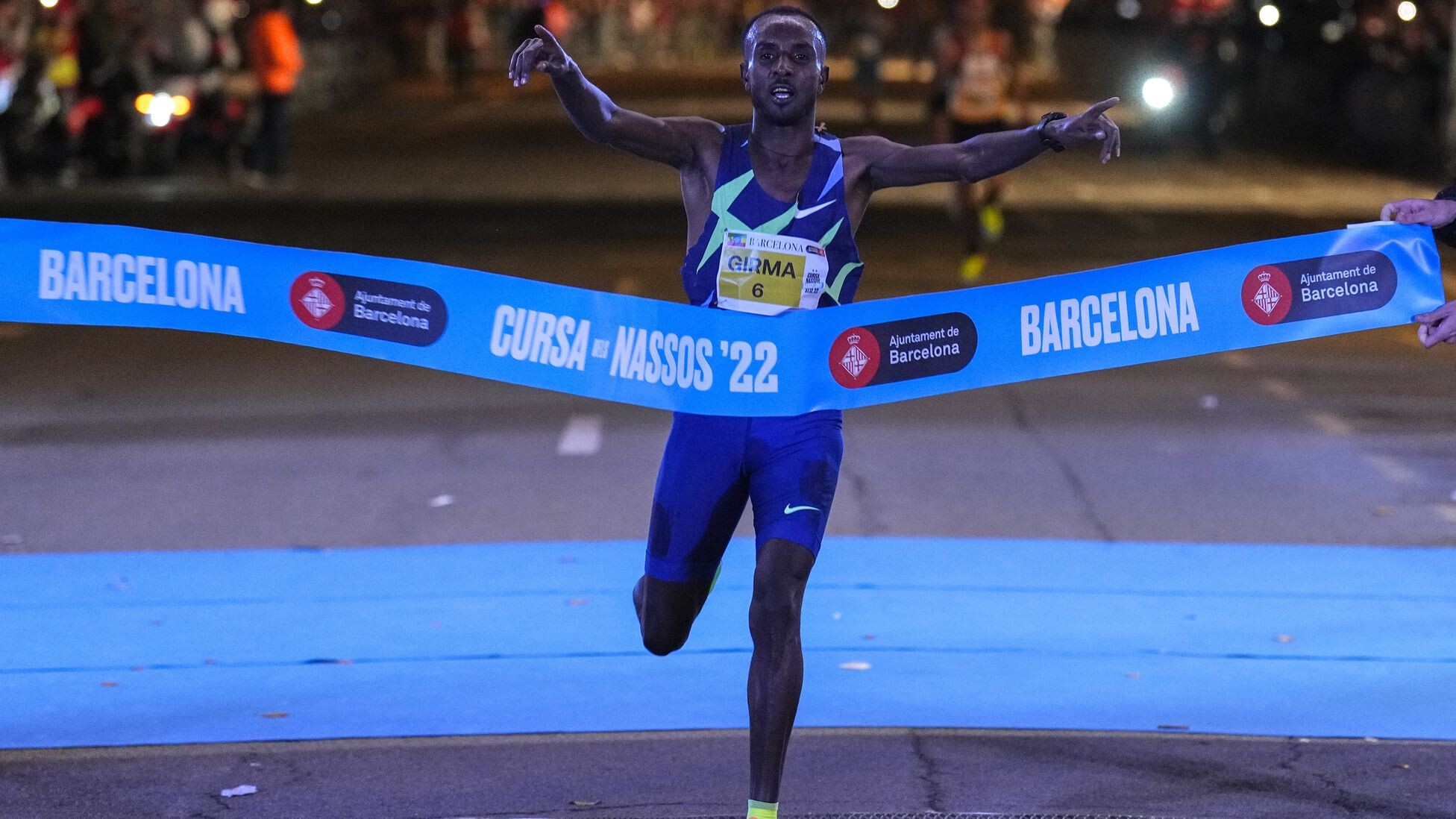
Klosterhalfen was a distant second, 31 seconds adrift in 14:52, eight seconds outside the European record but gaining revenge on third placed Groval, timed at 15:06.
“Maybe I went off too fast and I finally could not maintain the required pace to break the record but anyway I'm satisfied as it's a great performance,” said Taye, who has a 5000m track PB of 14:12.98 and who finished sixth over 10,000m at the World Championships in Oregon. “I'll run next in the Valencia 10K in a couple of weeks' time.”
World 5000m champion Jakob Ingebrigtsen had been due to compete in the men’s race in what would have been his first race on Spanish soil, but the Olympic 1500m champion was forced to withdraw on the eve of the race due to illness.
In his absence, attention turned to Ethiopia's Adisu Girma, a 3:35.81 1500m specialist, Spain's Abdessamad Oukhelfen, a creditable 10th at the recent European Cross Country Championships, Switzerland’s Jonas Raess, and Spain's 2016 European 5000m champion Ilias Fifa.
The leading group covered the opening two kilometers at 2:40/km pace, but the cadence decreased over the following couple of kilometers and the lead quartet reached 4km in 10:50. Fifa was the first to launch a serious finishing kick some 800 meters from home, but 23-year-old Ethiopian Girma responded with a devastating burst of speed to break away from the Spaniard with ease and cross the finish line in 13:25 to Fifa's 13:30 and Raess's 13:31.
Leading results
Women
1 Ejgayehu Taye (ETH) 14:21
2 Konstanze Klosterhalfen (GER) 14:52
3 Karoline Grovdal (NOR) 15:06
4 Miriam Chebet (KEN) 15:36
5 Agate Caune (LAT) 15:44
Men
1 Adisu Girma (ETH) 13:25
2 Ilias Fifa (ESP) 13:30
3 Jonas Raess (SWI) 13:31
4 Andessadam Oukhelfen (ESP) 13:37
5 Mohamed Al Garni (QAT) 13:41.
(01/03/2023) ⚡AMPby World Athletics
Cursa dels Nassos
Certain local traditions may strike you as funny, bizarre, or downright disturbing. You may know that the Catalans ring in the new year by eating one grape with each chime of the clock at midnight, but did you know about the man with many noses ('home dels nassos')? Folklore has it that there's a man who has as many noses...
more...Top 10 most popular running stories of 2022
Tt’s time to recap the most popular running stories. This year, the running community saw a lot of firsts and controversies. It was the first time we were made aware of a 6-year-old running a marathon; it was also the first time we saw a runner who chain-smoked during a marathon. As many of us returned to our favourite races and conquered new goals, we can’t ignore some of the mind-boggling stories.
Here is a countdown of the top 10 most popular running stories of the year.
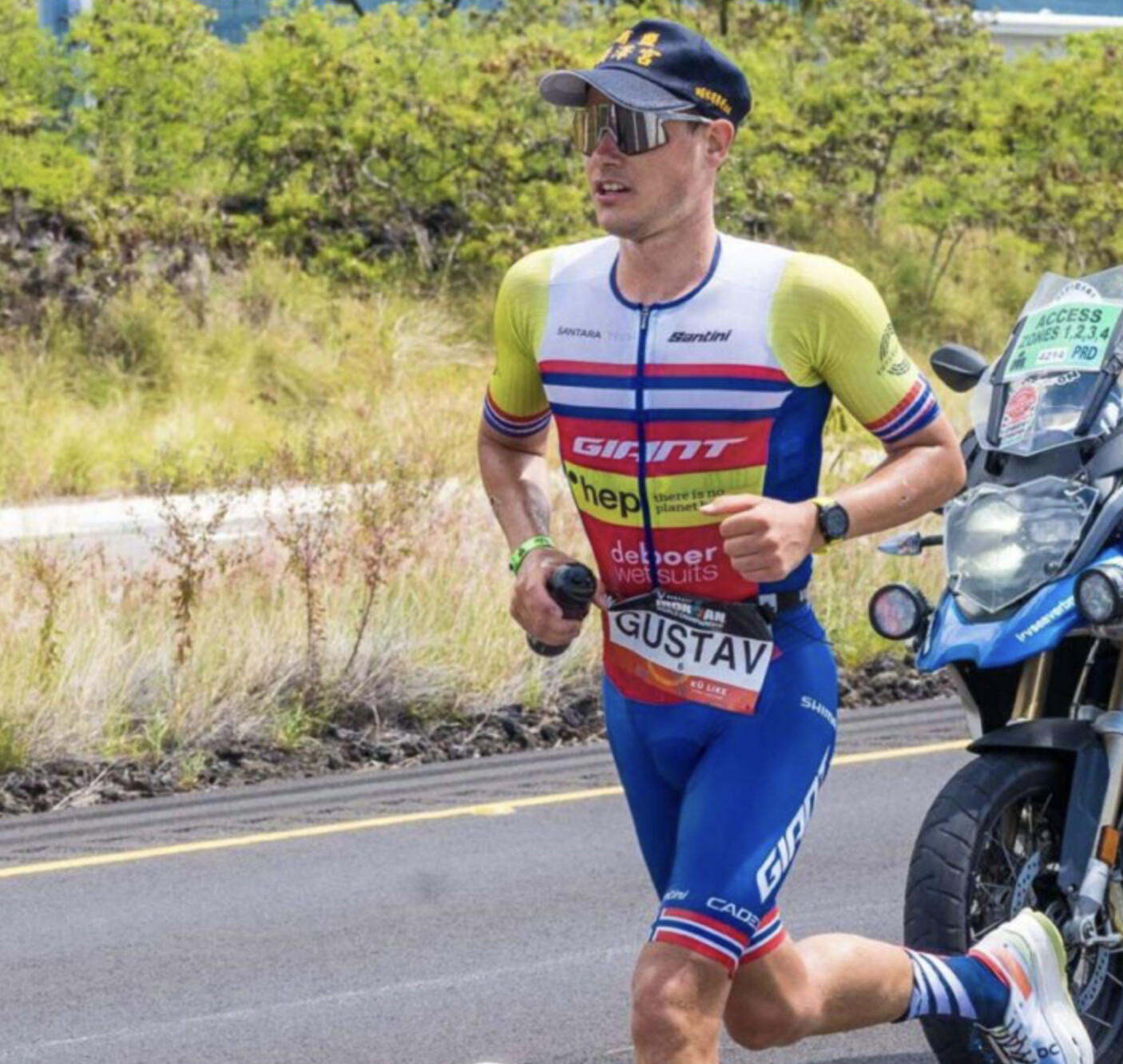

10) Ironman World Championship champion’s “chunky” shoes spark controversy
In October, Norway’s Gustav Iden made headlines as he ran a 2:36 marathon after a 180-kilometre bike and 3.8 km swim, earning his first Ironman world championships title. It wasn’t only his wild time that turned eyes, but the On Cloudboom Echo 3 carbon-plated running shoes that he wore, which have a reported stack height of 50 mm (legal for Ironman races).
9) Six-year-old’s marathon sparks controversy on social media
In May at the Flying Pig Marathon in Cincinnati, Ohio, a family of eight from Bellevue, Ky., all completed the 26.2-mile race together in eight hours and 35 minutes, including two children aged 12 and six. The family took on tons of criticism over the advisability of allowing a six-year-old to cover the marathon distance. Many experienced marathoners and coaches, including Lee Troop and Kara Goucher, have weighed in online, stating that six is too young for the marathon.
8) Turkey trot runner takes out his competitor at finish line
In November at a local 10K turkey trot, Xavier Salvador of Washington, D.C., impeded the line of Jack Huber of Delmar, N.Y., with 50 metres to go, after noticing Huber threatening to pass him on the right. Instead of checking if Huber was OK after the fall, Salvador made sure his GPS watch was stopped.
7) Barkley Marathons ends with no finishers (again)
In March, for the fifth straight year, the Barkley Marathons in Frozen Head State Park near Wartburg, Tenn., came to an end with zero finishers, after the only remaining two competitors, Karel Sabbe and Greig Hamilton, bowed out on their fourth loop (of five) of the 20-plus mile course. Sabbe’s fourth loop was one for the history books, as he was found off-course in another town, chatting with a garbage can who he thought was a person.
6) ‘Ultramarathon man’ Dean Karnazes attacked by coyote during 150-mile race
In August, acclaimed ultrarunner and author Dean Karnazes posted a video that he was attacked by a coyote during Headlands 150-mile Endurance Run, held outskirts of San Francisco. Karnazes said was OK, but that he had several cuts on his face and body from the attack.
5) “Poopgate” continues as Arizona high school bans track use
In February, human feces were found under the bleachers at the Red Rock High School track in Sedona, Ariz., which resulted in a ban on public use. In the aftermath, there was plenty of buzz and finger-pointing on social media about the ghost pooper’s possible identity, using the hashtag #poopgate. To this day, it is still a mystery who did the deed.
4) California man runs an ultramarathon in roundabout
In November, a runner from Healdsburg, Calif., was getting tired of his usual running routes, so he went out on a six-hour, 58-kilometre run around the local roundabout, never once switching directions. The best part is that, a week later, he did it again, in the opposite direction.
3) WATCH: Florida high school runner gets sucker punched mid-race
In March, we saw a candidate for “wildest video of the year” when a high school runner at a Florida track meet was sucker punched and knocked to the ground by another athlete during a 1,600m race.
2) Colorado runner wins all four races at Disney Marathon weekend
In January, Brittany Charboneau of Colorado climbed to the top of the podium on four occasions during the Disney Marathon Weekend in Orlando, Fla. She won the 5K, 10K, half-marathon and marathon over four days, while dressed as her favourite Disney characters. Simply amazing!
1) Chinese man runs a 3:28 marathon while chain-smoking
In November, we witnessed one of the wildest running stories ever, when Uncle Chen went viral for chainsmoking cigarettes during the Xin’anjiang Marathon in Jiande, China. It is well known that smoking cigarettes hinder running performance, but that didn’t seem to bother 50-year-old Uncle Chen, who clocked an impressive three hours and 28 minutes.
(01/02/2023) ⚡AMPby Running Magazine
Covid Completely Changed the Way We Stay Healthy—Here's How
Which hard-earned lessons about staying well have stuck.The height of the Covid pandemic was brutal. Three years after this all started, leading scientists tell us what hard-learned lessons have stuck when it comes to staying healthy now—and through whatever comes next.
Risk Management Is Huge

Before the pandemic, how often did you really think about defending yourself from respiratory bugs? “Most people were shrugging off the risk. Respiratory viruses weren’t that big of a thing,” says Amesh Adalja, M.D., an infectious-disease physician at the Johns Hopkins Center for Health Security. Covid forced us all to take viruses seriously on a daily basis, and it highlighted the power our personal habits—handwashing, masking, getting vaccinated, determining which indoor situations to take the risk on or not—can have over the likelihood of getting sick. Covid also made it clear that not managing risk had consequences beyond a tough stay in the hospital or, in mild cases, losing a few sick days. One 2022 study found that a person infected with Covid was 33 times as likely to suffer from a first-time arterial blood clot during the first week of infection as someone who had never had the disease. Respiratory viruses can trigger other real medical emergencies, and these compounding factors can damage major organs and raise your risk of autoimmune conditions. Even relatively mild Covid can cramp your breathing and gym stamina for months.
Vitamin D Is a Health Hero
Prepandemic, it was easy to think of vitamin D as a bone-building nutrient found in milk, and that was kind of it. But then Covid-era research showed a higher risk of testing positive for the disease among people with a vitamin D deficiency compared with people whose levels were fine. Experts suspected that optimal amounts of the vitamin may help shield you from Covid, as it does with other respiratory illnesses.
There’s no clear conclusion on that yet, says Eric Feigl-Ding, Sc.D., chief of the Covid-risk task force at the New England Complex Systems Institute. But doctors have long known that the nutrient plays a crucial role in immune health—and about one in three American adults is not getting enough.
Vitamin D helps your immune system “across the board,” says Feigl-Ding. It rallies parts of that system to get working against microbes, and it may also reduce inflammation—a process that plays a role in a huge number of health conditions, including cancer, heart disease, type 2 diabetes, Alzheimer’s, rheumatoid arthritis, and even depression.
If you already have enough vitamin D, extra won’t benefit you. (A blood test can tell you your level.) To stay at a healthy amount, aim for five to 30 minutes of midday, sunscreen-free sun exposure at least twice a week (your body uses it to make its own vitamin D) and eat D-rich foods. That’s salmon, trout, and fortified cow’s or plant milk. If you don’t eat these foods or get that much direct sunlight, consider taking a supplement as an “insurance policy” in the winter, Feigl-Ding advises.
Long Covid Is Helping Us Understand Other Illnesses
Even one of the pandemic’s most devastating and puzzling legacies, long Covid, may help drive up our understanding of health. This wide swath of troubles that linger for about half of people who’ve had symptomatic Covid—everything from joint pain to brain fog—may not end up being unique to this virus. And it’s creating a surge of interest in studying seemingly similar but often dismissed conditions like chronic fatigue syndrome (CFS) and post-treatment Lyme disease syndrome.
We’re still learning about long Covid, but among the theories about what causes these symptoms are organ damage, chronic inflammation (including of the central nervous system), and reservoirs of virus remaining in the body, Feigl-Ding says. These are some of the same factors scientists think may be involved in CFS.
Knowing more about long Covid could shed light on these other conditions, too, explains Dr. Adalja. What’s very clear, at least, is that “these illnesses are valid,” says William Schaffner, M.D., a professor of preventive medicine and infectious diseases at the Vanderbilt University School of Medicine.
The Basics Are a Big Deal
Health issues that develop over time, like stroke and type 2 diabetes, have been on the rise for years. About 60 percent of U. S. adults have at least one chronic illness, while four in ten have two or more. Yet until you’re diagnosed with one, the danger of chronic illness can feel far off.
Covid made it clear that people with chronic conditions were at a higher risk for severe illness, and it made people take an honest look at their health habits. Obesity, for instance, went from being “something I’ll get around to dealing with” to being a risk factor for complications from a scary new virus, says Dr. Schaffner. To clarify the synergy, Dr. Feigl-Ding tells people to “picture a glass.” Every risk factor—eating excess sugar, not exercising, not treating high blood pressure—adds water to the cup, while healthy habits decrease the water level. Covid can push the water over the rim and uh-oh.
The takeaway here is more of a reminder, really: You know what to do. You can prevent chronic illnesses by eating well, being active, avoiding tobacco, and being moderate with alcohol. Those small lifestyle habits may well save your life.
(01/02/2023) ⚡AMPby Men's Health
Adam Craig now setting sights on going the distance at 2024 Olympics
Borders athlete Adam Craig is setting his sights high but keeping his feet on the ground after completing his first competitive marathon.
Craig finished this month’s Valencia Marathon in two hours 13 minutes and 58 seconds and is now intent on improving on that to boost his hopes of qualifying for the 2024 Olympics in France.

“I’d love to be able to run at the Paris Olympics,” the 27-year-old told us. “Those sorts of races are the ones that I want to be in.”
UK Athletics requires athletes to achieve specified times to be considered for Olympic selection and to make it to the French capital, Craig reckons he will need to better his debut effort over 26 miles on the Spanish east coast by about five minutes, though target times have yet to be set for 2024.
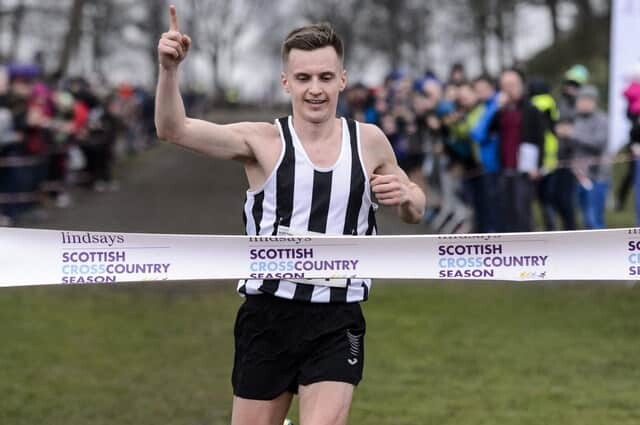
Craig remains focused on getting faster as 2023 goes on, however, and isn’t letting himself think about the Olympic Games too much just yet.
“Obviously to think about the Olympics is good to fuel the fire, but I’m also not putting everything on that just because very few people actually get to go to the Olympics and compete on that stage,” he said.
“It’s certainly something that’s on my mind but it’s not always to the forefront.”
Craig is planning to compete in two marathons in 2023 and how he fares in those races will determine whether he’s ready for the Olympics or not.
“If next year goes really well and I get another two marathons and can knock another couple of minutes off that time, then I’d probably go into 2024 thinking ‘right, let’s try and qualify for this’, but it could go really well or it could go the other way,” he said.
Whether they’re trying to qualify for the Olympics or just aiming to cover the distance, a runner’s first marathon is a step into the unknown, so in preparation for the Valencia Marathon – won by Kenyan Kelvin Kiptum in 2:01:53, the fastest debut ever over that distance – Craig asked peers and coaches for advice.
“Everyone that I spoke to kind of said the same thing, which is that I can give you my experience of a marathon but yours will be totally different,” he said.
"Everyone said you get to 20 miles and that’s when the race starts. I saw that 20 mile-sign and I thought ‘OK, yeah, I’m in a position now where I can switch that race head on and start looking to push on, even if it’s just a second or two per mile quicker’.”
Having got that race, held annually since 1981, under his belt, finishing 42nd out of almost 22,000 runners, Craig reckons he’s got plenty of room for improvement.
“In our build-up, me and my coach decided that we’d play it quite safe and leave a few stones to be turned over next time around, so we didn’t go away and use any kind of heat or altitude training or anything like that,” he said.
“There’s room for improvement, which is quite exciting.”
It’s often said by those running them that marathons are just as tough mentally as they are physically, the psychological aspect of keeping running for that long often being daunting even for seasoned athletes, and that’s something Craig agrees with now he’s got first-hand experience of going the distance.
He says he was forewarned and forearmed about the mental strength required before heading over to Spain and decided to break up the race into sections in his mind to give himself a sense of achievement along the way rather than just being faced with a distance close to that from his former home-town of Lauder to Edinburgh as a single sizeable challenge.
Even adopting that strategy, he admits he did have a wobble early on, however.
“About eight or nine kilometers in, I remember thinking ‘I’m not even a quarter of the way through this yet – there is a long way to go’,” he recalled.
“I definitely had dips in the race, but I had lots of little markers along the way, which helped me switch off and almost lose focus of where I was in the race or how far I had to go.”
Craig, currently racing for Team New Balance Manchester, has previously enjoyed success over shorter distances, competing for Great Britain over half-marathon and 10,000-meter distances, but is now looking to play a longer game.
(01/01/2023) ⚡AMPby Dan Challis
VALENCIA TRINIDAD ALFONSO
The Trinidad Alfonso EDP Valencia Marathon is held annually in the historic city of Valencia which, with its entirely flat circuit and perfect November temperature, averaging between 12-17 degrees, represents the ideal setting for hosting such a long-distance sporting challenge. This, coupled with the most incomparable of settings, makes the Valencia Marathon, Valencia, one of the most important events in...
more...How Trail Gear Became Streetwear
Earlier this year, the Gen Z icon Zendaya was photographed wearing a pair of the Swiss running brand On's Cloud Ultras. The Cloud Ultra is one of the cushiest and most rugged offerings in the On lineup, meant for "epic mountain mileage," according to the company's website. Yet Zendaya was not accruing mountain mileage at the time, or any mileage at all for that matter. She was on the street in Boston holding a green juice in one hand and her pet Schnauzer in the other.
Zendaya is not the first celebrity to take to trail runners. In a fashion shoot with Hypebeast, the rapper Pusha T called his Salomon XT-6s "the silhouette that's running the game." And Bill Murray, who seems to be every generation's icon, was spotted wearing a pair of On's Cloudventures at Cannes last year.

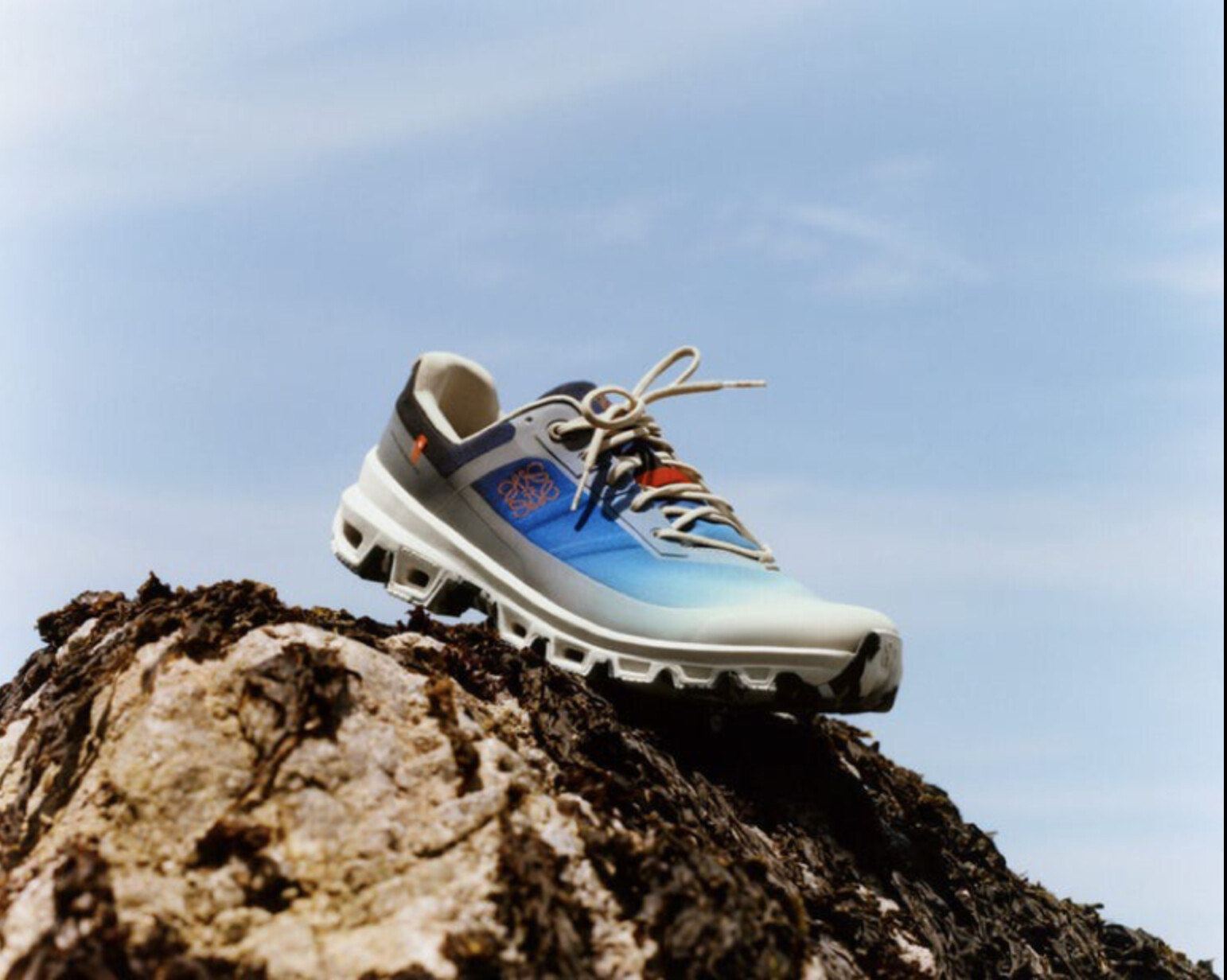
Of course, athletic apparel has a long tradition of finding its way from the courts, fields, and trails of competition to the closets of celebrities. "A Polo coat might be one of the most formal pieces of fashion menswear, but its origin story comes from a piece of functional clothing used for sport," explained Mike Belgue, the Brand Director for Reigning Champ, a performance brand that skillfully blurs the lines between fashion and function. The same brand that makes a super breathable Dot Air Running Pant also produces a $600 Handknit Varsity Sweater that has its roots in classic athletic wear. Like other boutique running brands, Reigning Champ seems to suggest that a company can be a one-stop-shop for looking your best and performing your best.
Where the Runway Meets Running Trails
What has been interesting, however, is the way running companies have responded to the recent surge of interest in the sport, both in terms of participation and influence, taking street style and incorporating it into their offerings. The inspiration now seems to be multi-directional. With the runway and running trails now sharing a surprising amount of DNA, high-performance and high-fashion have never been more aligned.
Take, for example, On's collaboration with the fashion brand Loewe. The product images from this collection do not feature people running but posed in various states of moodiness. The apparel on display is clearly designed to function as both a utilitarian piece of gear as well as a conversation piece. On's Active Jacket is an example of trail-ready streetwear with a nod to eye-catching design. Made of a lightweight and windproof ripstop nylon that folds down neatly into its own kangaroo pocket. I found it ideal for warm-ups, bike commutes, and cool jaunts. It also features an eye-catching angular neck-to-armpit zipper that sets it apart from purely performance-oriented windbreakers.
To Britt Olsen, the general manager of the Americas for On, such popularity beyond the trails isn't necessarily a surprise. "During the pandemic there was a clear signal that consumers were wanting casualization and comfort with style," she explained. "Performance will always be at the core of what we do, but as more people are wearing our pieces in a non-running environment, we are constantly exploring versatile and interesting new styles to fill those needs."
"Honestly, we used to be ashamed of our background in fashion," related Tom Daly, co-founder of the running and mindfulness brand District Vision. In their mid 20s, Daly and co-founder Max Vallot were working in the fashion industry in New York City and growing increasingly dissatisfied. They decided to start a brand that felt more in tune with their personal passions, but Daly now sees value in their fashion upbringing.
"Looking back, we can see a qualitative component to what we do that can be attributed to our backgrounds," said Daly, noting the care and attention they give to sourcing materials and creating products, steps too often overlooked in trying to achieve mass market appeal. "These things defy certain trends," he said. "And I suppose a background in fashion could give you the confidence to do that."
Authenticity Is Fashion and Function
When I asked Daly why trail running gear appears to the current zeitgeist, he alluded to the palpable passion running brands have for their products and communities. "Fashion yearns for authenticity, and there's something really authentic and respected about outdoor brands with beautiful values."
There is also something to be said about the overbuilt functionality of specialized gear. Belgue noted that "a shoe that one can run in for 20 kilometers in the mountains, in the rain, gives the user a sense of confidence and comfort when used out of the elements. It feels good to know that you have the gear on in case you need to run for the subway."
Ultimately, this sense of genuine joy might best summarize the unique union of street, trail, and fashion runway. "We love technical outdoor garments with hyper-specialized use cases," Daly explained. "We have a three-layer jacket with an external foraging pocket for fruits and vegetables and an internal waterproof compartment. This makes us happy."
It may just be that brands designing clothes that make them happy happens to be in vogue right now. The legendary costume designer Edith Head once said, "You can have anything in life if you dress for it." Perhaps what this marriage of trailwear and street style signals: what we want most right now, as we emerge into this post-pandemic cultural ecosystem, is one-part protection from the elements, one-part connection with the outdoors, and one-part joy in the guise of chunky mountain shoes, a swarthy zipper, or a foraging pocket.
It won't be long before big brands will start designing clothes meant to mimic this trend and the fashion cycle moves on in some ever-evolving Hegelian Dialectic that is style. The pop icon Zendaya will be photographed in something more polished, and trail shoes will be exclusively for trail runners again. In the meantime, let's all channel our inner Bill Murray and keep style, performance, and comfort synonymous for as long as possible.
(01/01/2023) ⚡AMPby Trail Runner Magazine
You Might Be Slower Soon After Getting a COVID Booster
New research finds a temporary decrease in a key aspect of fitness.
Everyone has that friend who got their COVID-19 vaccine and bounced back the next day, with little more than a sore arm. We’ve also heard (or told) stories of being in bed for multiple days after the first, second, third, and fourth shot.

While no one enjoys feeling unwell, runners have an added concern: How will a shot affect my upcoming training and racing?
A recent study offers some quantification to anecdotal evidence runners have been sharing for the past year and a half, where the new research found a small decline in aerobic capacity post-booster. Here’s how to incorporate that finding into your training plans.
Why Runners Care About VO2 Max
VO2max is often treated as the gold standard measurement of cardiovascular fitness. It represents the maximum amount of oxygen your body can use during exercise. This matters for runners because, all else equal, the more oxygen you can use, the harder you can work.
Given the significance of VO2 max to athletes, researchers in Belgium set out to test whether the COVID-19 booster affected it. They recruited 42 recreational endurance athletes (runners, cyclists, and swimmers) who were scheduled to receive their COVID booster—i.e., the third shot in the two-series Pfizer vaccine. Just before they got their shot, the athletes took a VO2 max test. This involved riding a stationary bike while wearing a device that measured oxygen consumption. As resistance on the bike went up, their oxygen consumption also went up until it eventually plateaued—indicating VO2max.
One week after receiving their booster, the athletes repeated the test. Compared to their performance pre-booster, their VO2max showed, on average, a 2.7 percent decrease.
Given that a decline in VO2 max reflects a decline in cardiovascular fitness, this finding is worth factoring into your training and racing plans. However, it’s worth noting that a 2.7 percent decrease in VO2 max does not necessarily mean a 2.7 percent decrease in speed. Here’s an example using Jack Daniels’s VDOT values (which are a proxy for VO2 max).
Let’s say a runner with a VDOT of 38 gets her COVID booster. This lowers her VO2 max (VDOT) by 2.7 percent, giving her a reduced VDOT value of 36.97. According to Daniels’s calculations, all else being equal, her previous 5K time of 25:12 would slow to about 25:45, or by 33 seconds—which is only 2.2 percent slower. If she’s fitter and has a half marathon time of 1:44:20 and a VDOT of 43? One week after the booster, her VDOT would be just below 42, and her half marathon time would increase from 1:44:20 to around 1:46:30, or by 2.1 percent.
VO2 Max Isn’t Everything
Admittedly, these calculations assume “all else being equal,” which is virtually impossible. Many other factors contribute to running performance, including running economy (how much oxygen you need to run a given pace), stride mechanics, and even perceived effort. Hielko Miljoen, a sports cardiologist at University of Antwerp and lead author on the paper, pointed out that in that respect, this study is only the beginning of an answer to how the booster affects performance.
“The next step in this investigation should be to do an endurance test, because VO2max is just one part of exercise capacity and athlete performance,” he says.
Additionally, the researchers only tested VO2 max one week out from the booster shot. While it’s unknown what effects may exist further out from the shot—the researchers did not retest the athletes at later intervals—it seems unlikely that the decline is permanent. “This study is by no means an answer,” says Miljoen. “It is trying to reassure people that the effects are not huge, probably not lasting.”
Weigh the Risks
Every medical decision is a personal one, and the reality is that getting the COVID-19 vaccine, including the booster, doesn’t come with a non-zero amount of risk.
“The entire field of medicine comes with statistics,” says Miljoen. “The benefit and harm of a certain medical procedure or intervention are only known on a population basis, so individuals must make up their own mind based on the data out there.”
While life-threatening risks of the vaccine are low, getting it or the booster may interrupt your training for a few days. A recent study of more than 1,000 elite Polish athletes found that the athletes lost an average of two and a half training days around getting the COVID vaccine. However, the same study found that athletes lost an average of eight training days due to COVID-19 infection. Given these and other research data, the authors concluded in favor of vaccination for athletes, writing that “the benefit–loss ratio strongly favors vaccination.”
Time Your Shot Strategically
While it doesn’t feel great to miss any amount of training, one advantage of vaccination and booster shots is that they can be timed to have minimal impact on a racing season—whereas COVID infection can’t.
Ben Rosario, executive director of Hoka NAZ Elite, recalls two of his athletes contracting what he believes was COVID in January 2020.
“I think it really affected them in the 2020 Olympic Trials marathon, because it was a real detriment to their training at that time,” he says. “They missed a really important 10 or so days of training.”
With the initial vaccines, he observed that athletes would feel unwell for seven to 10 days; consequently, they tried not to schedule their vaccination in the week or two leading up to a race. The results of the Belgian study suggest that similar scheduling may be warranted for the booster. While you may only feel the effects of the booster for a day or two, its less discernable effects—like suppressed VO2 max—can still affect your race if you schedule it too close to the shot.
Go Light Around Your Booster
Amy Yoder Begley, coach of the Atlanta Track Club, says that what her team found worked best was to ease off training for the few days surrounding their booster. Typically, the athletes would do a light day of training on the day of the booster and then go home, hydrate, and focus on moving their arm throughout the rest of the day. They’d take the next day off to let their body recover and then, depending how they felt, they’d slowly ease back into training.
“I just kept telling people: literally you’re talking two to five days to let the body do its thing to give you more protection down the road, if possible,” says Begley.
Rosario has a similar message: “My advice to all runners would be to be patient. What’s the harm in missing some training if you’re going to come back super healthy?”
(01/01/2023) ⚡AMPby Runner’s World
What Running a Mile Every Day for a Month Did to This Guy's Body
Fitness YouTuber Stan Browney tracked the impact on his weight and gains.
YouTuber and calisthenics enthusiast Stan Browney has taken on all kinds of fitness challenges before, usually revolving around churning out vast numbers of reps on bodyweight exercises like pushups and situps—but in his most recent video, he admits that he can be guilty of skipping cardio, so for his new month-long challenge he decides to run a mile every day for 30 days. Not only that, but with each run, he has to try and hit a mile in the fastest time possible. And if he misses a day for any reason, the next day he has to run double the distance.

"I hope I learn a lot about running, and I hope my form improves, but also my time," he says, and he ropes in his brother Jorg and "crazy fit" friend Arjen to join him.
On day one, Stan completes his first mile in 5:27. Jorg takes 7:12, while Arjen manages it in just 4:58. However, contrary to their belief that their performance will naturally improve with practice, by the time they get to day 15 the three guys actually all have worse times than when they started, possibly due to the cumulative fatigue of running every day. Even though it is a relatively short distance, they're not allowing their bodies sufficient rest or recovery time.
On day 30, all three have improved on their original times: Jorg can now run a 6:23 mile, Stan's new time is 5 minutes exactly, and Arjen hits a new PR of 4:53.
At the start of the challenge, Stan weighed 174.6 pounds, Jorg weighed 202.4 pounds, and Arjen weighed 162 pounds. After a month of running every single day, Jorg has lost 4 pounds and is now 198.4, while Stan has maintained his weight, and Arjen has actually gained a pound in the form of muscle. "That's interesting, because I thought the running would make you lose gains," he says.
(01/01/2023) ⚡AMPby Men’s Health
Tips for Running Alone
When running by yourself, it’s important to take safety precautions and to also have plenty of strategies for beating boredom. Here are some safety and motivation tips for running alone.
How to Stay Safe During Solo Runs
Common sense is key when running solo. Follow these essential tips to stay safe.
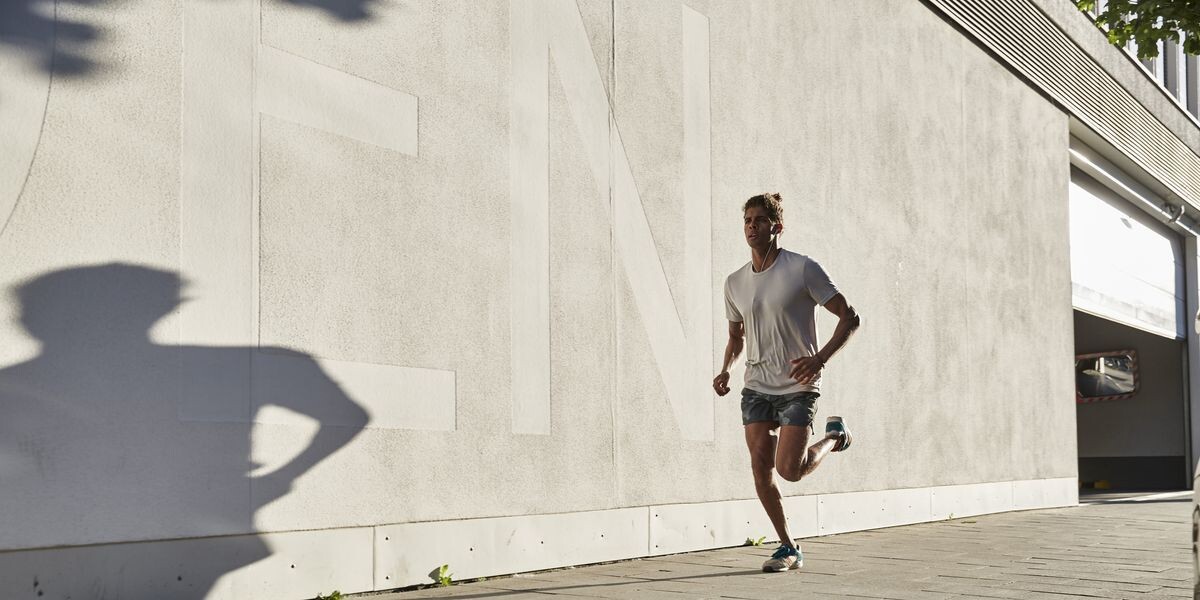
Let someone know where you’re running
Before you head out for your run, make sure you let someone else know where you’re running. Also tell them approximately how long you’ll be running for. If you’re not back when expected, they’ll know where to look for you.

Carry identification
Put your driver’s license and your medical insurance card (in case you get injured) in your pocket or wear an ID tag on your shoe. If you’re wearing an ID tag or bracelet, make sure it has an emergency contact number on it. Whenever possible, try to run with your cell phone, and save your ICE (In Case of Emergency) numbers.
Be visible
It’s best to run during daylight hours but, if you have to run in low-light conditions, make sure you’re visible. Wear white, yellow, or orange clothes if you’re running in the early morning or at night, even at dusk or in rainy weather.
Also, make sure you have reflective gear on. Although some items (running shoes, jackets) already have reflective pieces on them, it doesn’t hurt to add more.
Stick to familiar, populated routes
Running alone is not the time to try out a new, unfamiliar running route or an isolated trail. Stick to running routes in your neighborhood or local park that you know very well, so you don’t have to worry about getting lost or risk putting yourself in an unsafe situation. If you run in a park, run during peak exercise hours, so you know they’ll be lots of people around.
Limit your distractions
It can be tough to run without music, but cutting off your awareness and sense of hearing means you can’t hear oncoming cars, cyclists yelling to move, dogs, or other threats. If you really can’t run without music or something else to listen to, keep the volume low and one earbud out.
Be aware
Pay attention to your surroundings and what’s around you so you know where to go if you did need help. If you let your mind wander too much, you may find yourself running into an unsafe area.
How to Stay Motivated When Running Alone
Getting motivated to start and keep running can be harder when running by yourself. Here some ways to shake up your running routine and keep going.
Try some self-talk
If you’re running alone and struggling, give yourself a pep talk. Tell yourself that you’re not physically tired — you’re just mentally fatigued and you can push through it. Say to yourself things like, “I’ll have some water in five minutes — that will make me feel better.” You may want to keep repeating a running mantra, like, “Think strong! Be strong!”
If you’re doing your longest run ever, remind yourself how proud you’ll feel when you’re finished.
Use mental strategies and mind games
Arm yourself with different mental tricks and games to keep your mind occupied and help you stay motivated to continue running. Here’s a game to try: Pick out a specific article of clothing, such as black running shorts, to look for during your run. Then count how many runners you see wearing that piece of clothing.
Mix it up with a random interval workout
Try doing a fun interval workout. Pick a landmark in the distance, such as a tree or a stop sign, and pick up the pace until you get to it. After you recover at an easy pace for a minute or two, choose another landmark and then speed up again.
(12/31/2022) ⚡AMPby Christine Luff
Meniscus Tear? How To Get Back Out There
Strenuous exercise can tear the meniscus, a layer of cartilage in the knee — and certain gentle exercises may help with recovery.
Meniscus tears are fairly common; research suggests that around 61 in 100,000 Trusted Source people in the United States have this health issue.
Below, we look into this injury and describe nine exercises that may help strengthen and rebuild a torn meniscus. Be sure to consult a doctor before trying them.
What is a meniscus tear?

The meniscus is a layer of cartilage in the knee that has several important functionsTrusted Source. It helps:
the knee joint fit together correctly
absorb shock from walking and other activities
provide stability to the knee

A tear can occur due to too much strain, sometimes as a result of exercise. Common symptoms include:
pain
swelling
clicking
catching
locking
weakness
This injury is more common among military personnel on active duty and other people who are very active. The risk is generally higher among males over 40 years old.
Recovery times
Less severe meniscus tears can take 4–8 weeks to heal. Others may require surgery and take as long as 6 months.
8 exercises to try
For people with less severe tears, doctors may recommend gentle exercises.
It is normal for these exercises to cause a little discomfort. If any exercise causes pain, however, stop doing it.
1. Mini squats
Mini squats can help strengthen the quadriceps, large muscles at the front of the thigh, without putting too much pressure on the knees.
To perform mini squats:
Stand with the back, shoulders, and head against a wall.
The feet should be shoulder-width apart and about 1 foot away from the wall.
Slightly bend the knees, bringing the buttocks toward the ground.
At around 15 degrees of the bend, stop.
Hold the position for 10 seconds, then slowly bring the body back up to the starting position, keeping the back and shoulders against the wall.
Perform 2 sets of 8–10 repetitions. Rest for between 30 seconds and 1 minute between the sets.
Keeping the back and shoulders against the wall is key, as it reduces stress on the knees.
2. Quadriceps setting
This is isometric, meaning that it exercises the muscles by keeping the body in a static position.
To perform the quadriceps setting:
Sit or lie flat on the ground, with the legs extended away from the body.
Contract the quadriceps, using them to push the backs of the knees toward the floor.
Hold this position for 10–20 seconds.
Perform 2 sets of 10 contractions, resting for between 30 seconds to 1 minute between sets.
3. Straight leg raise
This exercise stretches the hamstrings and strengthens the quadriceps.
To perform straight leg raises:
Lie on the floor with the left foot flat and the right leg extended.
Keeping the back and pelvis in a neutral position, flex the right foot and tighten the right thigh muscles, slowly lifting the right leg off the floor.
After lifting the right leg to around 45 degrees, slowly lower it back to the floor.
Perform 2 sets of 10 repetitions before switching to the left leg.
4. Prone hang
This exercise works to increase the knee’s range of motion.
To perform the prone hang:
Lie facedown on a bed, with the legs extended over the edge.
Let gravity slowly pull the left knee down until it is fully extended.
Hold this position for 15–30 seconds, before bringing the left knee back up.
Repeat this three times, then do the same for the right knee.
5. Hamstring curls
This exercise strengthens the hamstrings, which are muscles at the backs of the thighs.
To perform hamstring curls:
Lie on the stomach, keeping the legs straight.
Slowly bend the right knee, lifting the right foot toward the buttocks.
Slowly lower the right foot.
Perform 2 sets of 8–10 repetitions, resting for around 30 seconds.
Repeat this with left leg.
6. Hamstring heel digs
This is another hamstring exercise, and it can help build strength in the abdominal muscles.
To perform hamstring heel digs:
Lie on the back, with the knees bent and the feet flat on the floor.
Flex the feet so that only the heels touch the floor.
Dig the heels into the ground, slowly sliding them about 5 inches from the body.
Slide the heels back, returning to the starting position.
Perform 2 sets of 8–10 repetitions, resting for between 30 seconds to 1 minute between sets.
7. Standing heel raises
This exercise is good for building strength in the calf muscles.
To perform standing heel raises:
Stand with the feet hip-width apart, with the hands resting on a heavy, solid piece of furniture for support.
Slowly lift the heels off the floor as far as is comfortable.
Pause in this position, then slowly lower the heels to the floor.
Perform 3 sets of 8–10 repetitions, resting for 30 seconds to 1 minute between sets.
8. Leg extensions
Leg extension exercises build strength in the thighs. A person can safely perform them multiple times a day.
To perform leg extensions:
Sit on a chair or bench with the feet flat on the floor.
Flex the right foot then lift it, straightening the right leg.
Slowly lower the right foot to the starting position.
Repeat this 10 times, then do the same with the left leg.
When to contact a doctor
Anyone with symptoms of a torn meniscus should seek the advice of a doctor, especially if the symptoms do not improve.
Only begin gentle exercises, such as those above, after consulting a doctor to make sure that it is safe.
(12/31/2022) ⚡AMPby Medical News Today
What You Need to Know About Running and Hearing Loss
How to handle—and prevent—this increasingly prevalent quality-of-life condition.
Last winter, I was one of eight people on a Sunday long run. We spent most of the run in four groups of two. When I got home and my wife asked about the run, I said I’d spent most of it beside Erin, an ob-gyn who loves to discuss books. My wife asked about Erin’s recent work and reading list. I said I didn’t really know, even though we’d just spent more than an hour talking with each other. That is, unfortunately, the norm for me on group runs. I have a form of severe hearing loss One manifestation is that it’s extraordinarily difficult for me to follow a conversation when there’s competing background noise. That includes restaurants and movies with music atop dialogue. But it also means something like that group long run, where Erin and I were sandwiched by lively conversations ahead of and behind us.

Hearing loss intrudes on nearly every aspect of my life. Some consequences are trivial (not hearing beeps from my running watch), some are moderately annoying (always seeking the quietest parts of public spaces), and some are depressing (regularly missing sounds and experiences that bring joy to others). There’s also the knowledge that my hearing is likely to continue to deteriorate, which puts me at risk for other conditions that could further erode my quality of life.
As the world gets increasingly louder, hearing loss is a growing problem. Here’s what it’s like to be a runner with hearing loss, what can be done about it, and, probably most importantly, how to lower your risk of winding up like me.
Running and Hearing Loss
Running’s health benefits are extensive and, in some cases, unexpected: Did you know that runners tend to have fewer cataracts and are less likely to develop glaucoma? Unfortunately, there’s no evidence that regular running helps lessen your chances of developing hearing loss. Indeed, as we’ll see, one key aspect of many runners’ routines can elevate their risk.
The most common type of hearing loss is sensorineural, in which there’s permanent damage to the inner ear or the nerve that connects the ear to the brain. Noise exposure and age are the two leading causes of sensorineural hearing loss. Between the din of much modern life and an aging population, it’s not surprising that 15 percent of Americans 18 and older report trouble hearing.
It’s also not surprising this is no longer just an older-person issue. “We’re seeing more kids high-school age with noise-induced hearing loss than in previous generations because it’s so prevalent to have things in your ears,” says Carissa McCauley, a runner and doctor of audiology at Rutland Regional Medical Center in Vermont. Research published last fall estimated that more than 1 billion people aged 12 to 34 are at risk of developing noise-induced hearing loss.
Hearing loss is inconvenient, for those with the condition and the people they try to communicate with, and, in some environments, unsafe. Untreated hearing loss increases your risk of cognitive and functional decline, social isolation, and depression, especially in middle age and beyond, according to Sarah Hill, a runner and audiologist who works for a hearing-aid manufacturer in Boston. McCauley adds that untreated hearing loss will likely get worse faster.
One tricky aspect of hearing loss is that it’s insidious. Without regular testing, you’re left with subjective experiences of poor communication: the restaurant’s music was cranked, it’s loud inside a car on the highway, your partner likes to conduct conversations from two rooms away. It’s easy to convince yourself the mishearing was a one-off rather than part of an increasing pattern. This is a different form of coming to grips than, say, realizing words on a page or screen are blurry enough that you need glasses.
The cause and progression of my hearing loss are fairly typical. As I teen, I played drums while wearing maxed-out headphones several hours a week. In my 20s and 30s, I saw hundreds of indie rock shows in bedroom-sized clubs. I often had tinnitus for a day or two after these exposures. (Tinnitus is usually defined as high-pitched ringing in the ears, which is an adequate description of mine, but it can present in many ways.) The tinnitus became permanent around 15 years ago. Then I had increasing difficulty following nearby conversations in loud environments. Also, being in such environments started to cause days-long spikes in the severity of my tinnitus. Finally, I found myself straining to understand my wife from even a few feet away in our quiet house.
Now, in my late 50s, I have profound loss at higher frequencies. This means not only that I miss out on things like bird songs and running watch beeps. I also struggle to distinguish certain higher-pitch consonants, such as “s,” “f,” and “h,” especially at the beginning of words. These problems compound when there’s a lot of background noise. It’s not that I can’t hear what others are saying as much as that I can’t quickly make out what’s being said. I guess at some words to see if they make sense in context. But by then people are on to the next sentence, and I’m still processing the previous one while trying to catch the gist of the current one and seeing if it’s reasonably linked to what I think the previous one was. It’s frustrating and exhausting. Sooner or later, I check out.
On runs, I often interject “uh huh” and “right” and “hmm” more in reaction to the tone of what others are saying than the content. If there’s reason to run single file, I scoot to the front to have any chance of following the conversation. If we’re running two abreast, I try to stay farther from traffic to lessen competing sound. If it’s just two or three of us, running with others can be my best hearing experience of the day. Rhythmic breathing tends to introduce pauses in conversation, giving me a better chance to process what’s being said. Large group runs are another matter. I’ve skipped many simply because I don’t feel like having to concentrate so hard just to follow along.
Are you on the road to hearing loss? McCauley and Hill agree that tinnitus is a major warning sign that you’ve been overexposed to noise. “That ringing is noise-induced damage, whether it goes away quickly or two days later,” Hill says. McCauley says that if you experience tinnitus after a given environment, “next time you need to wear hearing protection or avoid it if you can.”
Another warning sign is what’s known as a temporary threshold shift. “That means your hearing sensitivity has declined,” McCauley says. “Everything seems temporarily muffled. That’s another blaring red flag that you were doing something damaging and probably need to stop doing that.”
Constant tinnitus merits getting a hearing test from a licensed audiologist. “Most folks who have tinnitus have some degree of tinnitus,” Hill says. Other signs that you’re a good candidate for a hearing test include:
You frequently ask people to repeat themselves. (Or the people you talk with the most say you keep asking them to repeat themselves.)
You struggle to follow conversations when there’s background noise, such as other conversations, music, an air conditioner, or a television.
You have a harder time understanding children and women, who tend to have higher-pitched voices. Losing the ability to distinguish higher-frequency sounds is often where hearing loss starts.
You turn up the television volume but still can’t understand everything.
You feel like you hear better in one ear than the other.
You have issues with balance or dizziness.
Runners’ Risks of Hearing Loss
In a 2016 Runner’s World survey, 61 percent of respondents said they listen to music or other audio while running. That’s great, given the research showing the performance benefits of running with music. But that can also be problematic if you pump up the volume too much.
“If you have any ringing in your ears after running with music, it’s absolutely too loud,” Hill says. “Also, if you notice that, outside of being tired from running, you’re mentally fatigued in conversations or having trouble paying attention to somebody, it’s probably too loud. Those are signs that your brain is a little overstimulated.”
These recommendations, which are valid at all times, deserve a running tweak: Research presented at a 2014 conference on noise and public health looked at temporary threshold shifts after people listened to music while not exercising, exercised while not listening to music, and listened to music while exercising. The threshold shifts were significantly greater after listening to music while exercising, and included losses at high frequencies. The researchers speculate that decreased blood flow to the cochlea (part of the inner ear with a key role in hearing) during exercise can compound the problems associated with noise alone.
“My thought is, it should be a little lower than you want it to be,” McCauley says about the proper volume for on-the-run audio. “I tell my active patients to put the volume where you want it, and then turn it down at least a click.” This lower setting comes with a safety bonus of greater awareness of what’s going on around you.
Hill offers another solution: bone conduction headphones, which are worn outside your ears and transmit sound while avoiding potential damage to your inner ear. “It’s really hard to make those too loud,” she says. “They kind of max out naturally, so there’s much less of a risk of overexposure to noise.” Hill also appreciates how bone conduction headphones give her greater environmental awareness in busy Boston.
Hearing Aids for Runners
I haven’t been completely forthright so far in this article. The examples of struggling to hear are accurate—if I’m not wearing my hearing aids.
I had my first hearing test in 2007, after two intercontinental flights in three days made my tinnitus constant and more pronounced. The audiologist told me I had mild hearing loss at high frequencies and that it was likely I’d need to learn how to live with the tinnitus. I then waited 10 years for a follow-up. That visit resulted in a prescription for hearing aids.
This part of my story is also typical. Hill says that, when she was in private practice, everyone she recommended hearing aids for should have gotten them earlier, usually by a factor of several years. It’s estimated that at least 28 million Americans who could benefit from hearing aids don’t have them.
So why, as someone with hearing aids, did I struggle to hear my friend Erin during that large group run? Because I wasn’t in the habit of running with them at that point. The audiologist who fitted me with my first pair cautioned against getting them wet. When I told her I’m a ridiculously prolific sweater, she recommended not running with them. Over time, I wore them less and less in everyday life, because the inner ear portion made me feel like I was constantly being tickled by a Q-Tip.
This summer, I learned that, as with running shoes, a lot has changed with hearing aids in recent years. Water resistance is now a common feature. Smaller domes over the inner ear portion eliminate the tickling sensation. I’ve worn my new hearing aids on hours-long hikes and forgotten I had them in until I realized I was catching everything my wife said.
Most importantly, sound quality has improved dramatically. There was a metallic clang to what much of what I heard through my previous hearing aids. (Imagine water dripping on a taut piece of aluminum foil.) Now, I hear what I assume most people hear. Conversations are crisp. Music sounds full rather than compressed. I can sit on the patio and actually hear the birds and crickets that I know are just yards away. Restaurants are still annoyingly loud, but I can understand the people I’m with.
The hearing aids I have, the Phonak Audeo Fit, are also noteworthy in how they reflect two demographic trends—people are getting hearing aids at younger ages, and people are staying active later in life. The Audeo Fit tracks heart rate, daily steps, and time spent in different exercise-intensity zones.
Like most modern hearing aids, the Audeo Fit can connect to phones, televisions, and other gadgets, and it has Bluetooth connectivity. The latter is great, if that’s your thing. But I mostly value them for the human connectivity. Erin, the next time we run together, I promise I’ll really listen.
(12/31/2022) ⚡AMPby Runner’s World
Track star gets Google Doodle on her 118th birthday
Fanny “Bobbie” Rosenfeld of Barrie, Ont., was one of the Canadian stars of our nation’s most successful Olympics, in Amsterdam in 1928. That year, Canada won three gold, two silver and two bronze medals: Rosenfeld helped the squad win gold in the 4x100m relay, and also took silver in the 100m. Today would have been her 118th birthday, and to mark the occasion, Google Canada has honoured Rosenfeld with a Google Doodle–the daily illustration on Google’s main page, with a link to their story.
Rosenfeld, nicknamed “Bobbie” because of her short, bobbed hairstyle, was a well-rounded athlete, excelling also in hockey, softball, basketball, tennis and lacrosse. She was born in Russia in 1904, and died in Toronto in 1969, at age 65. At 18, her family moved from Barrie to Toronto, where she attended Harbord Collegiate Institute. When her competitive career was over, she became a sportswriter for the Globe and Mail and an advocate for women’s sports.

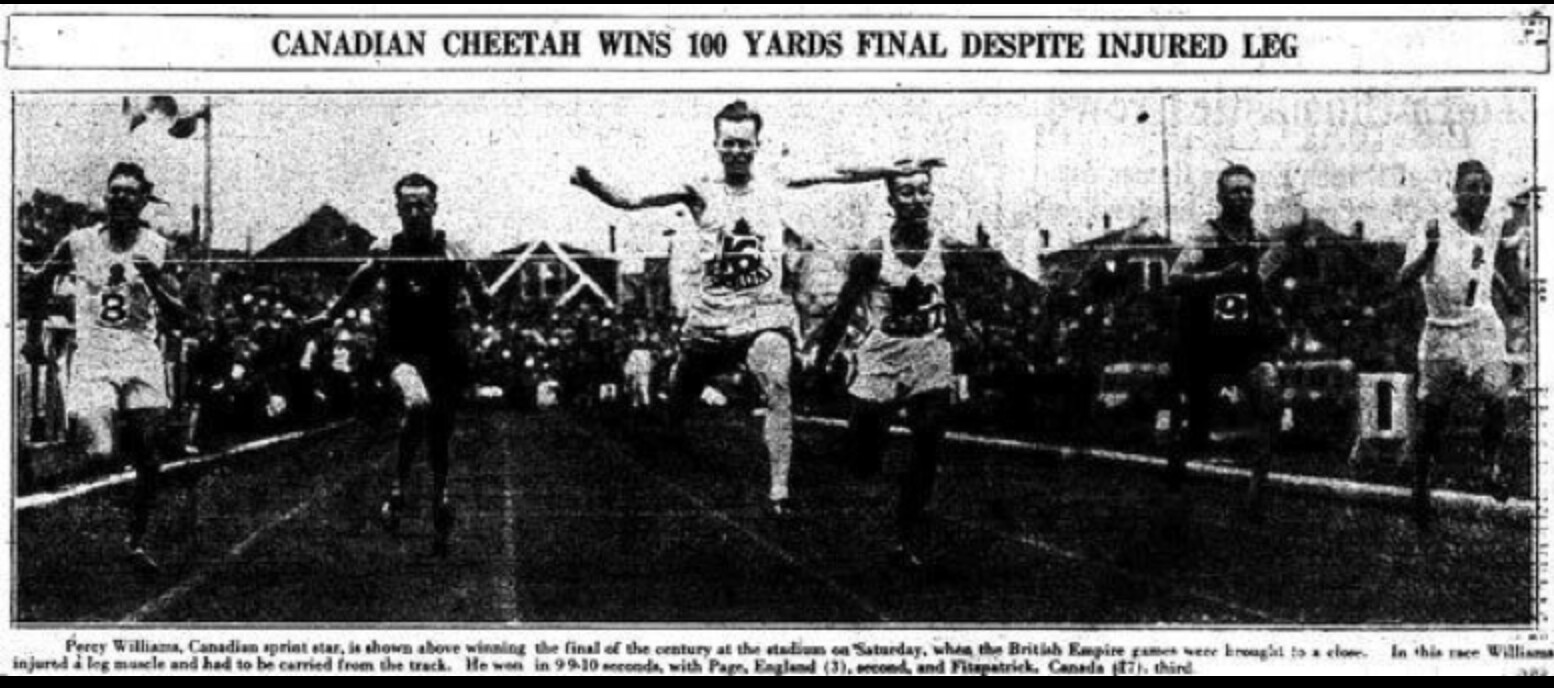
1928 was the first year that women were allowed to run in Olympic track and field events, and the Canadian women took more medals than any other nation. Rosenfeld’s teammates in the relay were Smith, Jane Bell and Myrtle Cook. In addition to Rosenfeld and the women’s relay team, these Canadians earned medals: Percy Williams (gold in the 100m and 200m), James Ball (silver, 400m), Ethel Smith (bronze, 100m) and the men’s 4x400m relay (bronze for Ball, Phil Edwards, Stanley Glover and Alexander Wilson). In addition, Ethel Catherwood of Regina won gold in the high jump, in a world record.
In his 2022 book Running Through Time: the Greatest Running Stories Ever Told, author Roger Robinson recounts the appalling story of the women’s 800m, which also included Rosenfeld (who finished fifth; the race was won by Germany’s Lina Radke in 2:16; Jean Thomson of Penetanguishene, Ont., was fourth).
The 800m is widely considered one of the most difficult track events. With two full laps of the track at top speed, the 800m is not a true sprint, but neither is it a pure middle-distance race, but something in between. Athletes must conserve just enough energy after the first lap and a half to sprint hard for the final 200m; if they miscalculate and surge too early, they risk being swallowed up by the pack and finishing dead last.
As new as it was for the women competing in Amsterdam, several collapsed at the finish line, having given it everything they had. But the spectacle of young women lying on the track after the very first Olympic 800m race was too much for spectators and officials, who, after the Games were done, successfully had the event banned from future Games. It didn’t return until 1960. Worst of all, Canada itself was one of the 12 nations that voted for the ban; in fact, Canada voted to ban women from all track and field events (but was outvoted).
In the book, Robinson says: “The stories of mass collapse and distress, amazingly consistent across many international news reports, were fake news, hugely exaggerated, often grossly inaccurate … None failed to finish. Four or five fell to the grass at the finish, yes, but they had just run massive personal bests; two were sprinters racing their first big 800.
“The litany of lies concealed the truth that the race was a great leap forward in women’s running. The first three broke the recent world record, and the first seven (yes, seven) ran faster than the officially ratified world mark at that date, including two Canadians. That race deserves a revised place in history, not as evidence of women’s weakness, but as a major breakthrough in elite athletic performance.”
(12/31/2022) ⚡AMPby Running Magazine
Ratified: world records for Yehualaw, Knighton, Nugent and Mokoka
Women’s world 10km record (mixed race)29:14 Yalemzerf Yehualaw (ETH) Castellon 27 February 2022
Men’s world U20 200m record19.69 Erriyon Knighton (USA) Eugene 26 June 2022
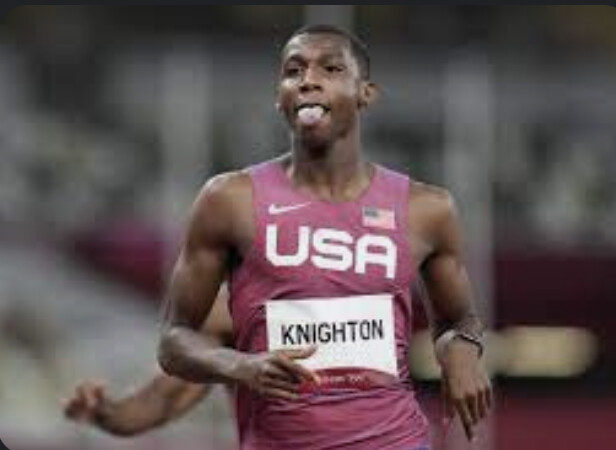

Women’s world U20 indoor 60m hurdles record7.92 Ackera Nugent (JAM) Fayetteville 13 March 2021
Men’s world 50km record2:40:13 Stephen Mokoka (RSA) Gqeberha 6 March 2022
The world 10km record of 29:14 set by Yalemzerf Yehualaw in Castellon on 27 February has been ratified.
The world U20 marks by Erriyon Knighton in the 200m and Ackera Nugent in the 60m hurdles are also now officially in the record books, as is the world 50km record set by Stephen Mokoka.
In Castellon, Yehualaw became the first woman in history to dip under the 29:30 and 29:20 barriers on the roads, running 29:14 to improve the ratified record of 29:43 set by Joyciline Jepkosgei in Prague on 9 September 2017 and the mark of 29:38 achieved on 3 October 2021 by Bahrain’s Kalkidan Gezahegne in Geneva.
In a race held under ideal weather conditions, and with pacing assistance from Dutch distance runner Richard Douma, Yehualaw set off at a swift pace. They covered the opening kilometre in 2:51 and by 3km, reached in 8:36, Yehualaw was on target for a sub-29-minute finish.She went through halfway in 14:28 – one of the fastest 5km clockings in history – and was still inside 29-minute pace. The Ethiopian slowed a bit during the second half, but a final kilometre of 2:52 (and a second half of 14:46) was enough to carry her to a 29:14 finish.
“I knew I had the world record in my legs and wanted to produce a challenging performance for any athletes who may attempt the record in the near future,” she said.
Knighton achieved his world U20 200m record at the US Championships on 26 June, running 19.69 to improve on his own previous ratified record of 19.84, also set at Hayward Field in Eugene on 27 June 2021. Knighton had opened his season with a time of 19.49 in Baton Rouge, but that mark could not be ratified as a world U20 record because specific anti-doping testing requirements were not met.
Nugent, meanwhile, achieved her world U20 indoor 60m hurdles record when winning at the NCAA Indoor Championships in Fayetteville on 13 March 2021. Other performances that were faster than the previous ratified world record of 8.00 set by Klaudia Siciarz in Torun on 18 February 2017 – including Nugent’s own 7.91 earlier in 2021 – did not fulfil all the criteria for ratification. Nugent’s 7.92 does meet the criteria, so becomes the world U20 record.
In March this year, Mokoka ran 2:40:13 at the Nedbank Runified 50km in Gqeberha to improve on the inaugural world 50km record of 2:42:07 that had been set by Ethiopia’s Ketema Negasa at the same event last year.
Mokoka is now the official world 50km record-holder, although CJ Albertson clocked 2:38:43 in San Francisco on 8 October, and that performance has also been submitted for record ratification.
(12/31/2022) ⚡AMPby World Athletics
Hundreds of runners collapse in wild start line video, Who could have seen this coming?
Start lines at a race can be intimidating, especially if, only 10 meters in, there is a big tree that you and hundreds of runners have to go around. In this bizarre race video from a 10K in Paris last week, hundreds of elite and sub-elite runners fell in perhaps the most chaotic start line we’ve seen this year.
The Corrida de Houilles is one of the most popular 10K road races in France, due to its fast course and deep field. The race has a strict entry standard of sub-44 minutes for women and sub-37 minutes for men, which attracts top domestic and international talent.
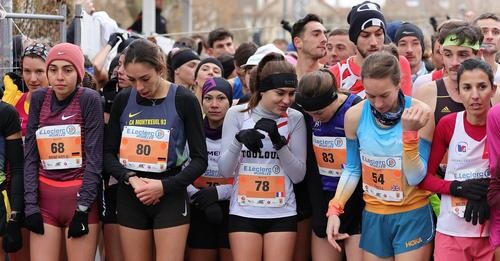
The giant tree a few metres from the start line isn’t the only obstacle runners have to avoid—street lamps and curbs make it almost impossible to avoid falling. Once one person goes down, there is a domino effect, as you see in the video.
The race had 63 men who finished under 30 minutes, with Ethiopia’s Halie Bekele taking the win in 27:29, one second ahead of Vincent Kibet of Kenya. Bekele was fourth in the men’s 5,000m at the 2019 World Championships in Doha. Jimmy Gressier of France finished third in a European-leading time of 27:43.

In the women’s race, Kenya’s Mercy Cherono won with a time of 30:55 seconds. Cherono won silver in the 5,000m at the 2013 World Championships in Moscow.
Welsh marathoner Josh Griffiths, who starred in the iconic airport half-marathon video, said the start was a disaster. Many other elites are calling on the organization committee to move the start line past the tree in 2023. “It was complete carnage,” one runner said.
Changing any part of the course would require the race organizers to obtain a new certification from World Athletics. The race is currently listed as an Elite Label race on the World Athletics calendar.
(12/30/2022) ⚡AMPby Marley Dickinson
Corrida de Houilles
It is one of the most prestigious races and undeniably one of the most beautiful 10 km road races in the world.Corrida international pedestrian Houilles combines festive atmosphere and high level sport. In 2013 the event receives the international label IAAF "and offers in the heart of town a popular 10 km and a 10 km" Elite "on 3 laps....
more...Andre De Grasse switches coaches, heading into 2024 Olympics
After a season of highs and lows, Canada’s reigning 200m Olympic champion, Andre De Grasse, has switched things up for 2023. The six-time Olympic medalist, along with his partner, 2016 Olympic medalist Nia Ali, has moved to Orlando, Fla., to work with Irish sprint coach John Coghlan, leaving his controversial coach Rana Reider, with whom he spent three seasons.
De Grasse says he wanted to stay in North America, and became interested in Coghlan’s coaching success through 100mH Olympic champion Jasmine Camacho-Quinn, who went on to win the 100 hurdles for Puerto Rico at the Tokyo Olympics, and his agent Paul Doyle.

The Canadian 200m record holder told the CBC that his mindset and motivations have changed since the last Olympic cycle. “I’m getting older, so I was just trying to do something different this time around,” said De Grasse. “I believe having a smaller crew will benefit me.”
De Grasse’s partner, Ali, won gold in the women’s 100mH at the 2019 World Championships in Qatar and has her eyes on a Team U.S.A. spot for the 2024 Games.

The 28-year-old told CBC the move was more about a fresh start heading into the 2024 Paris Olympics than controversy around his former coach and his Tumbleweed Track Club in Jacksonville, Fla. “I just wanted to try something different,” said De Grasse. “I liked the idea of Orlando, and we thought it would be a good spot for our kids as well.”
In 2022 Reider, who has guided numerous athletes to Olympic and world championship medals, was under investigation by U.S. Center for SafeSport for alleged sexual misconduct. Reider was also the coach of Nigerian sprinter Blessing Okagbare, who was suspended during the 2020 Olympic Games after a positive test for steroids; earlier this year, she was handed an 11-year suspension by the Athletics Integrity Unit (AIU) for multiple anti-doping offenses, on top of the original offense.
In November 2021, Athletics Canada withdrew its funding of Canadian athletes being coached by Reider, including De Grasse, due to the ongoing investigation.
At the 2022 World Championships in Eugene, Ore., where De Grasse helped Canada’s 4×100-meter relay team win gold, Reider was seen trying to enter the athlete warmup area after his coaching accreditation was revoked by World Athletics, due to his ongoing investigation, and he was removed from the premises.
The Olympic 200m champion struggled to find his fitness at the beginning of the 2022 season and was sidelined due to COVID-19 three weeks before the world championships, where he bowed out of the 100m in the semis and was listed as a DNS in the 200m heats.
With three major championships on the calendar over the next three years, De Grasse stressed that he wants to improve. “I felt like I wanted a little bit more attention to detail and stuff like that going into my next Olympics,” De Grasse told CBC.
(12/30/2022) ⚡AMPby Running Magazine
Paris 2024 Olympic Games
For this historic event, the City of Light is thinking big! Visitors will be able to watch events at top sporting venues in Paris and the Paris region, as well as at emblematic monuments in the capital visited by several millions of tourists each year. The promise of exceptional moments to experience in an exceptional setting! A great way to...
more...British man Gary McKee to make history for most marathons in one year
Some people’s New Year’s resolution is to quit drinking. For others, it’s to run a marathon. But for Gary McKee of Cleator Moor, in northwestern England, his resolution was to quit drinking and run a marathon–every single day for a year. McKee is two days away from completing his unbelievable challenge of running 365 consecutive marathons.
McKee, who has gained the nickname The Marathon Man, has covered more than 9,500 miles (15,289 kilometers) in 363 days while raising more than $2,000,000 for charity. His distance covered is equivalent to running across Canada three and half times. McKee’s challenge will come to an end on New Year’s Eve.

McKee, 53, told The Guardian, that he intends to have one celebratory beer to celebrate his efforts and year-long drought.
The father of three routinely wakes up at 5 a.m. and heads out on his marathon before starting his work shift at a nearby power plant at 2 p.m.

McKee has completed most of his marathons between three and a half and four hours. In 2021, McKee completed 110 marathons in a row.
McKee is running for Macmillan Cancer Support and Hospice in West Cumbria, which supported his father through a cancer diagnosis in 1997. His father fully recovered from cancer but died from an unrelated illness in 2005.
You can follow McKee’s 365 challenge on his Strava or Twitter page.
(12/30/2022) ⚡AMPby Marley Dickinson
Detroit Free Press Marathon introduces new anti-doping policy for 2023
On Dec. 29, one of the most popular U.S. destination races for Canadian marathoners, the Detroit Free Press Marathon, announced a new anti-doping policy to prevent substance abuse among participants to level the playing field. In October, the race received some slack online after Mary (Akor) Beasley won the marathon, seven years after she served a two-year doping ban under her previous name, Mary Akor.
Akor frequently runs marathons across North America that do not test podium finishers that offer a large amount of prize money. In October, she took home USD $6,000 as the top female finisher in Detriot. Although Akor came out and explained her positive test in a Detroit Free Press article, the race received comments on social media about testing podium finishers and not allowing elites who have previously received a doping sanction to compete.
The Detroit Free Press Marathon is implementing a new anti-doping policy as it opens registration for the 2023 marathon in October. “The change is made to establish structure and to prevent substance abuse among participants at our annual race,” said Aaron Velthoven, vice president of the marathon. “This new policy will help our organizers uphold the event’s key values.”

“This was a priority for us in our offseason—to ensure fairness and integrity at the top of our race,” Velthoven said to the Detroit Free Press.
Winners will have to meet several requirements to be eligible for the prize money under the new policy:

Not currently serving a suspension for use of a prohibited substance by the USADA or WADA (the U.S. Anti-Doping Agency and World Anti-Doping Agency).
Not have ever been suspended for use of a prohibited substance by the USADA or WADA.
Not be represented by a coach who has had two or more athletes that have received such suspensions in the previous four years (from the date of the current race) by USADA or WADA.
Consent to random drug testing according to the standards and procedures of USATF, USADA, and WADA.
All elite and open registrants will be asked to acknowledge and agree to the new policy during registration.
“We felt that there were too many questions for some previous prize winners with our large-scale race, and we needed a proper anti-doping policy in place to deter the wrong type of athlete from coming to our race,” said Velthoven. The new policy means Akor will not be welcome at the 2023 marathon.
Velthoven expects an increase in participants for the 2023 marathon as the event plans to ease the COVID-19 restrictions. The 46th annual Free Press Marathon will take place on Oct. 15, 2023.
(12/29/2022) ⚡AMPby Running Magazine
Detroit Free Press Marathon
Our marathon course offers international appeal, traversing both downtown Detroit and Windsor, Ontario, crossing the border at both the Ambassador Bridge and Detroit-Windsor Tunnel. You will run through historic neighborhoods, around beautiful Belle Isle, and along the spectacular RiverWalk. ...
more...World ultrarunning champion Camille Herron parts ways with Hoka
The women’s 100-mile world record holder, Camille Herron, announced on social media today that she is parting ways with her longtime sponsor, Hoka, and beginning a partnership with a major brand new to the ultra-trail community in 2023.
“The end of 2022 marks the end of my journey representing Hoka. Thank you for all the wonderful support,” Herron wrote on her Instagram. “My time with the brand has been some of the best years of my career, and it is a testament to the harmony and happiness I have felt while representing Hoka.”

The 2022 season was eventful for the 41-year-old ultrarunner from Norman, Okla. She set 12-hour and 100-mile world records on the track and road and became the 117th runner and the youngest female ever to reach the 100,000 Lifetime Miles club.
She is also the first and only woman to run under 13 hours for 100 miles, exceed 150 km for 12 hours and reach 270 km over 24 hours.
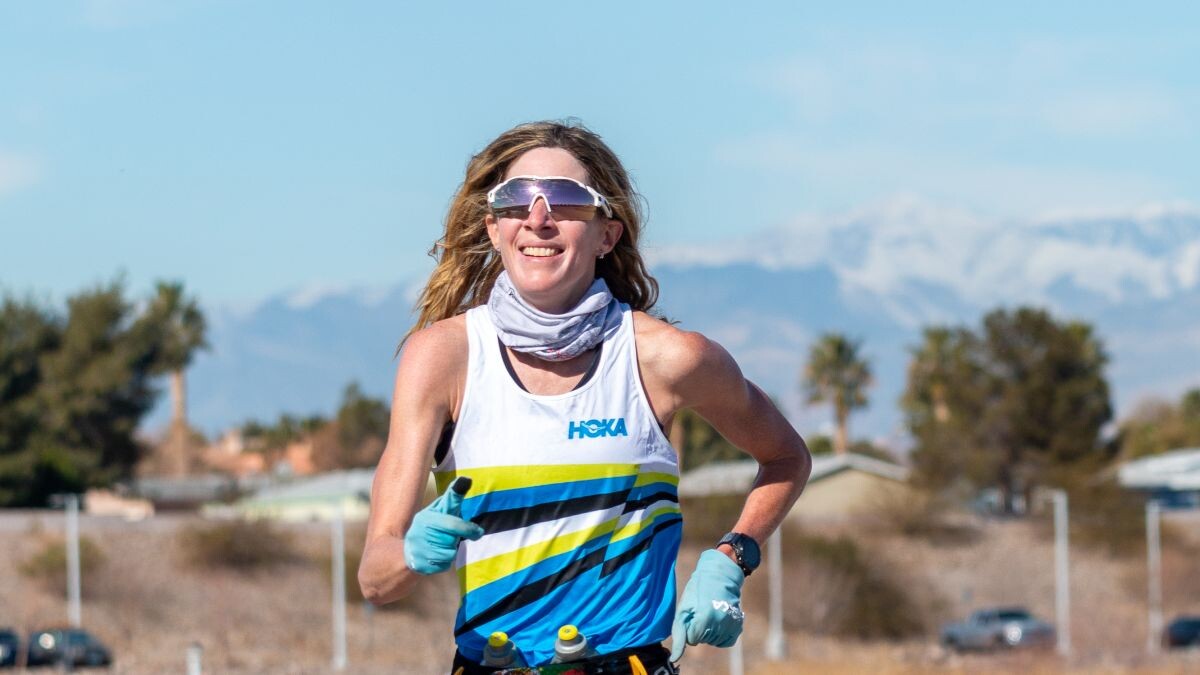
Herron plans to announce her new sponsor in mid-January, but she gave her fans a hint, stating that she was presented with a dream opportunity to partner with a major brand that will be new to the ultra-trail community. “Right now is the time for brands to get behind, support and elevate women in a significant way, and I am excited about all the possibilities to come from this new collaboration,” Herron wrote.
Many major running brands, such as Nike, New Balance and Adidas, have already dipped into the ultra-trail scene. Two running brands with strong records of empowering women in sport are Puma and Lululemon, neither of which has really dipped into the ultra-trail scene yet.
Herron said on her Instagram that the news will come in a few weeks.
(12/29/2022) ⚡AMPby Marley Dickinson
Christian Coleman, Noah Lyles and Ronnie Baker to Clash in Epic 60m at 2023 Millrose Games
The 115th Millrose Games, the world’s most historic indoor track & field event is only six weeks away. The Men’s 60m will surely be one of the most anticipated races of the entire meet, as Christian Coleman, Noah Lyles, and Ronnie Baker, three of the best sprinters in the world, will be taking their talents to the infield straightaway at the iconic New Balance Track & Field Center at The Armory.
The 115th Millrose Games is scheduled for Saturday, February 11th.

Coleman is the defending Millrose Games champion, World Record holder, and 2018 World Indoor Champion in the 60m. His lightning-quick starting ability makes him nearly unstoppable over this short distance, and he set the current world record of 6.34 seconds in 2018. Outdoors, he has two World Championship gold medals and three silver medals in the 100m and 4x100m relay.
Lyles is the reigning back-to-back World Champion, American Record holder, and the third-fastest man ever in the 200m. He also claimed the Olympic bronze medal in Tokyo. Lyles, the 2022 USATF Male Athlete of the Year, has been open about his pursuit of the world records held by Usain Bolt, and by dropping down in distance to challenge the short-sprint specialists, he hopes to continue improving his start and putting the pieces together for another year of dominance.

Baker is the third-fastest 60m runner in history, and one of the most consistent sprinters competing on the circuit. He is an Olympic finalist, World Indoor bronze medalist, and two-time NCAA champion. Baker is no stranger to the Millrose Games stage, winning the 60m in both 2018 and 2020.
Other athletes in the field include:
–Josephus Lyles, Noah’s younger brother. Lyles is a former World Junior Champion, and he placed fifth in the 200m final at this year’s USATF Outdoor Championships.
–Ackeem Blake of Jamaica, NACAC 100m Champion, and semifinalist at the World Championships.
–Miles Lewis, the 60m national record holder for Puerto Rico.
As always, the Millrose Games will feature the absolute best athletes in the sport, including dozens of Olympians and world champions. Some of the big names already announced include Alicia Monson, Konstanze Klosterhalfen, Abby Steiner, Jenna Prandini, Geordie Beamish, Cooper Teare, Josh Kerr, Katie Nageotte, Sandi Morris, Katerina Stefanidi, Ryan Crouser, and Joe Kovacs, with many more still to come.
The Millrose Games is a World Athletics Indoor Tour Gold meet. With the highest-level competition at the youth, high school, collegiate, club, and professional levels, there is truly something for everyone at the Millrose Games.
(12/29/2022) ⚡AMPby Letsrun
NYRR Millrose Games
The NYRR Millrose Games,which began in 1908 as a small event sponsored by a local track club, has grown to become the most prestigious indoor track and field event in the United States. The NYRR Millrose Games meet is held in Manhattan’s Washington Heights at the New Balance Track & Field Center at the Armony, which boasts a state-of-the-art six-lane,...
more...Chepkoech is set to compete at San Silvestre Vallecana 10k road race
World 3000m steeplechase record holder Beatrice Chepkoech will be lining up against a competitive field at the San Silvestre Vallecana, a New Year’s Eve 10 km road race in Madrid, Spain.
Chepkoech temporarily leaves the track to compete at the world's best 10K and victory will be another milestones in her many achievements. Besides her 2019 World Championships gold, she is also a nine-time Diamond League winner.

However, the iconic race has also attracted other elite athletes including Africa 10,000m champion Tsehay Gemechu from Ethiopia and Francine Niyonsaba, the 2016 and 2018 World 800m indoor champion.
Brigid Kosgei holds the women's course record with 29:54 from 2019. She set the milestone just a few months before achieving her unbelievable and still-standing world marathon record of 2:14:04.

Gemechu comes to the race to extend the Ethiopian winning streak after Yalemzerf Yehualaw and Degitu Azimeraw won the previous two editions. She placed fourth in the 5,000m at the 2019 World Championships and finished sixth at the 2019 World Cross Country Championships.
Niyonsaba, who has been enjoying road race and cross-country success, will also be looking to shine in Madrid. Most recently, Niyonsaba won the Banos International Sales Cross Country. She holds a very fast 5, 000m personal best at 14:25.34 from last year.
The women's elite field will also have Prisca Chesang, the 19-year-old Olympian from Uganda who won the U20 world bronze medal at 5,000m this year, and Mahlet Mulugeta, the Ethiopian.
(12/29/2022) ⚡AMPby Abigael Wuafula
San Silvestre Vallecana
Every year on 31st December, since 1964, Madrid stages the most multitudinous athletics event in Spain.Sport and celebration come together in a 10-kilometre race in which fancy dress and artificial snow play a part. Keep an eye out for when registration opens because places run out fast! The event consists of two different competitions: a fun run (participants must be...
more...2023 Ooredoo Doha Marathon is set to take place in january
This year’s edition is set to attract thousands of runners from 80 countries.
Ooredoo Doha Marathon, which is widely regarded as one of the most popular events on Doha’s sporting calendar, is set to take place on 20 January, 2023.
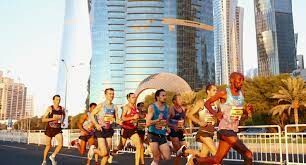
The 11th iteration of the competition, which is listed on the World Athletics calendar, is being put together in collaboration with the Qatar Athletic Federation and Ooredoo, a longstanding promoter of sporting events.
This year’s event is expected to draw thousands of runners from 80 countries or more, including some of the world’s top athletes.

Confirmed so far are Mohcin Outalha from Morocco as well as Yohans Mekasha, Hiribo Shano and Abiyote Abinet from Ethiopia, along with Desi Jisa Mokonin from Bahrain and Ebsite Tilahun from Ethiopia in the women’s race.
The world class athletes will be joined by keen runners of all levels from Qatar’s sporting community, as well as families looking for an active day out.
The Ooredoo Doha Marathon 2023 features a variety of distances, ranging from a 1km children’s race to the full 42km marathon, as well as the Al-Adaam category for Qatari runners, which includes prizes for winning competitors.
The total prize money for all categories amounts to more than 500,000 QAR.
An upgraded route will take runners past some of Doha’s most famous landmarks while avoiding excessive laps.
Participants with disabilities will be able to run all distances up to and including 21.1km, with roads being closed for the duration of the event.
A dedicated race village in Al Bidda Park will provide plenty of activities for families.
A key upgrade for this year’s event will be integration with Nojoom, Ooredoo’s award-winning loyalty programme. Nojoom members can redeem Nojoom Points for entry to the event.
People with disabilities can register for free and runners who register as a group get a 20% discount.
The Marathon, which was first held in 2013 to encourage Qatari citizens and residents to embrace a healthy and active lifestyle, has become one of the most anticipated sporting events in Qatar, with over 18,000 runners taking part over the years.
The event draws large crowds of spectators who line the streets to cheer on the runners and enjoy the electric atmosphere and lively entertainment.
Participants can register for the Ooredoo Doha Marathon 2023 at https://www.ooredoo.qa/web/en/marathon/
(12/28/2022) ⚡AMPby Doha News Team
Ooredoo Doha Marathon
We started the Ooredoo Doha Marathon as a way to bring people together, encourage them to live healthier lifestyles and give back to the community. Funds raised by entry fees to the Ooredoo Doha Marathon will be donated to a range of worthy charities in Qatar. The marathon features four courses for all abilities of runners including a full marathon,...
more...The 10K Valencia Ibercaja hopes to have more world class times this year
The 10K Valencia Ibercaja is finalizing the details to offer again a great show in what will be its 15th edition. The race, which is currently approaching 11,000 registered participants, will feature a hundred elite athletes of 15 different nationalities in search of their best times in the city of running.
The fastest 10K in the world continues to set the bar high and, after the World Record still in force achieved in 2020 by Rhonex Kipruto (26:24), on January 15, 2023 will seek to break other records. In fact, the recordwoman Yalemzerf Yehualaw, who achieved the women's world record this year 2022 in Castellón (29:14), will be at the starting line of the 10K Valencia Ibercaja and will try to beat it.

The Ethiopian will not be alone in this feat, as she will be accompanied by her compatriot Ejgayehu Taye Haylu, who holds the 5K world record (14:19, Barcelona 2021). Also, Norwegian athlete Karoline Grøvdal, who holds her country's national 5,000ml record and was recently proclaimed European Cross Country Champion, will try to achieve the European 10K record.
The fact that the two fastest women in the world in 10 and 5 kilometers on the road participate in the 10K Valencia Ibercaja is the result of the work done for many months led by the Sports Director of the event, José Enrique Muñoz Acuña.
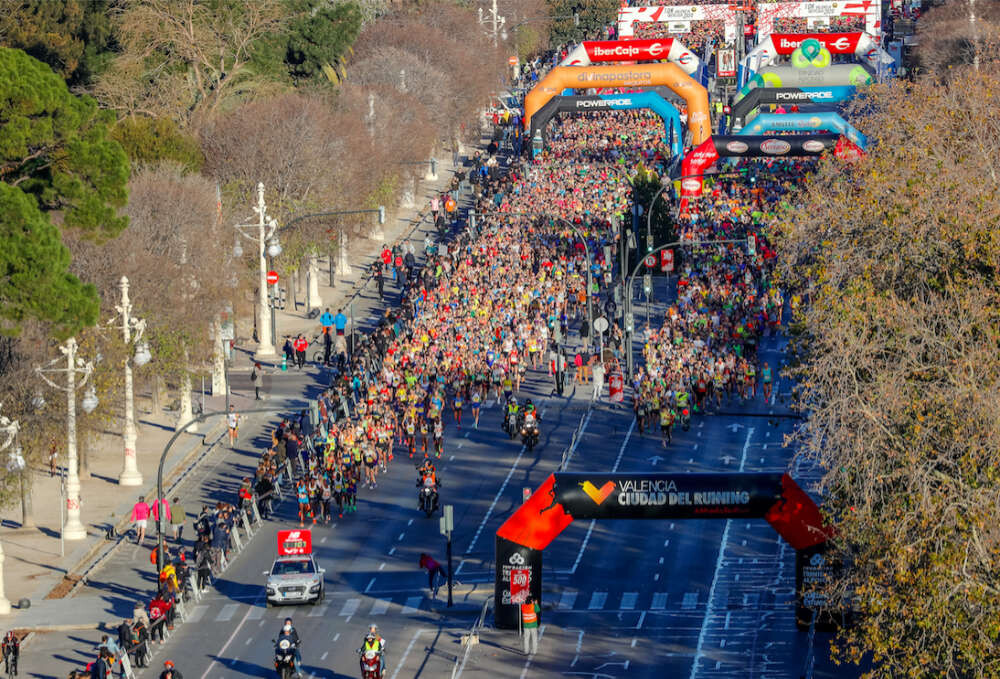
"It is a great pride to have the two athletes who hold the world record in 10K and 5K," said Acuña, who has advanced that the women's lineup continues to dazzle with other athletes who also have very important marks such as the national record of 10K (Meraf Bahta) and Half Marathon (Sarah Lahti) of Sweden or the 3,000m steeplechase of Germany (Kristina Hendel). "In women, we will have a total of eight U31 athletes, ten U32 athletes and nine U33 athletes," he explains.
International men's elite
As for the participation of elite male athletes, he highlights that the race will have four U27 runners led by the Ethiopian Hagos Gebrhiwet Berhe, who achieved the mark of 26:48 in Hengelo (2019). "We will have - adds Acuña - five U27 athletes, more than 20 U28 athletes, about 40 U29 athletes and around 100 U30 athletes."
In addition, up to six runners who hold national records in 5K, 10K or Marathon distances in their country, such as the French athlete Jimmy Gressier or the Burundian athlete Rodrigue Kwizera will also take the start in the Paseo de la Alameda, along with the Kenyan Jacob Krop, who won bronze in the last World Championship in 5000ml, or the athlete who achieved the Ethiopian national record in 3000mlm Getnet Wale.
"We want, in men, to approach the European record and, with the African armada, to look for sub 27 records and even approach the World Record, without being a specific objective of this edition". Thus, the 2023 edition "will be the most competitive of all editions. The best European athletes want to run the 10K Valencia Ibercaja, and we have been working for months in that direction".
"The goal of the race is to become more international year after year and reach more and more countries. We are a world reference for the distance and the best athletes want to run in Valencia," Acuña explains. The presence of athletes of up to fifteen different nationalities stands out. Among the most represented countries are Ethiopia, Kenya, France, Great Britain, Holland and Sweden.
Acuña has indicated that in the 10K Valencia Ibercaja "we will continue working to maintain the high level achieved in the 2020 edition when Rhonex Kipruto got the World Record (26:24), Julien Wanders the European Record (27:13) and Sheila Chepkirui the best female time of the circuit (29:46)".
(12/28/2022) ⚡AMP10k Valencia Trinidad Alfonso
Around the corner we have one more edition of the 10K Valencia Ibercaja, organized one more year by the C. 10K VALENCIA Athletics premiering the running season in Valencia. It is a massive urban race with more than 3,000 registered annually of 10 kilometers, where the maximum duration of the test will be 1 hour 40 minutes (100 minutes). The...
more...Five reasons your running Performance is not improving
Can’t seem to improve your running speed?
Why are you stalling?
What should you do to take your running performance to the next level?
If you’re looking for answers to these questions, then today you’re in the right place.

Here’s the PAINFUL TRUTH.
Even the most driven runners can see their running performance hit rock bottom.
Many things can trigger such a decline—most of them are fixable, but some more serious.
Knowing which is which—that’s where the challenge lies.

But fret no more.
Lets look at some of the main reasons you’re losing running performance as well as what to do to amend your situation—or prevent it altogether.
Sounds great?
Let’s lace up and dig in.
Note—Get checked by a medical professional to rule out any serious conditions such as heart, blood, thyroid, or other health issues as the culprit behind the decline in your running performance.
I’m not a doctor, nor do I play one on the internet.
1. Overtraining
The law of diminishing returns is a universal decree that applies to most aspects of life—training is no exception.
Assuming that you’re in good health and don’t have any underlying issues, the most likely reason you’re losing the spring in your step could be overtraining.
The Fix
To help prevent overtraining, alternate between hard and easy training days and take one day off a week.
On day one, you run hard, feel sore the next day then go easy for as many days as it takes for the soreness to subside.
For example, on Monday, Wednesday, and Saturday, do high-quality sessions, such as intervals, hill reps, and tempo workouts.
On Tuesdays, Thursdays, and Fridays, feel free to cross-train or run easy. Then, take a full rest day on Sunday.
You should also keep tabs on overtraining symptoms.
You’re likely in an overtrained state if you’re experiencing more than a couple of the following:
Elevated heart rate
Depressed mood and irritability
Loss of appetite
Chronic aches and pains
Fatigue
Poor sleep
Unwanted weight loss
Altered sleep patterns
Colds and the flu.
2. Not Eating Enough
Food plays a critical role in running performance.
Skimping on calories means mediocre performance and slower times.
That’s why when you’re logging serious miles, you’d need to make sure that your overall calorie intake fits your exercise level and body needs.
Just keep in mind that proper fueling before, during, and after running requires experimentation.
There’s no such thing as a universal rule that applies to everyone.
The Fix
It’s simple.
Eat more.
As a runner, your daily fuel needs exceed those of the average sedentary person.
It’s not uncommon for serious runners to have calorie needs exceeding 2,400-3000 calories per day.
What’s more?
Consume the right proportions of carbohydrates, protein, and fats (50%/30%/20% is a good guideline to follow).
As a rule, get your carbs from good sources such as veggies, fruits, and whole grains instead of processed foods.
You should also shoot for more protein after a hard run to help with recovery.
And don’t shy away from healthy sources of fat—they’re good for you.
Your pre-run choices also matter.
If you’re running hard or for more than 45 or so minutes, it helps to have something in the tank first before braving the outdoors.
I’d recommend any of these snacks.
What else?
Keeping your body well-hydrated is also key.
Proper hydration helps carry nutrients to your cells and flush out your organs.
Shoot for 60 to 90 ounces of water per day, depending on your training intensity, sweat rate, training duration, etc.
3. Respect The Weather
The weather has a great impact on your running performance.
Heat is, in particular, problematic as it impacts your athletic performance by raising your heart rate and making you prone to dehydration—which slows you down drastically.
Try running in 92 degrees heat with lots of humidity, and your chest will feel like it’s being compressed by an invisible vise a couple of miles in.
While it’s not as challenging as summer running, running in the cold is also tricky.
Snow, ice, wind, slippery surfaces, muddy trails, and freezing temperatures can wear on you and slow you down.
In other words, you simply can’t run as fast when the weather isn’t on your side.
The Fix
Running in weather extremes is the ideal opportunity to work on the skill of running by feel.
Instead of adhering to your typical pace targets, run by effort and time instead of pace and distance.
Focus on your breathing and how you feel.
Then re-adjust your pace accordingly—toss your GPS watch to the side.
4. You’re Doing The Same Runs
A common mistake many runners make is doing most of their training at the same pace.
But the truth is: if you want to push the pace, you need to run fast.
Different types of training trigger different types of physiological adaptation.
Low to moderate effort runs are key for building an endurance base, strengthening key muscles, and improving overall health.
The Fix
If you want to reach your running potential, you don’t want to repeat the same run every day.
During the course of a week, your running schedule should include a variety of running workouts from easy recovery runs to challenging race-pace intervals.
Easy, mild, and intense runs all have their benefits.
Each run has to have a purpose.
Don’t push too hard when your run is supposed to be easy, but when you have an interval session on schedule, give it your all.
Schedule at least one to two faster-paced workouts per week, like a simple fartlek session.
You can also perform strides to at the end of your easy runs a few times per week.
5. You’re Not Sleeping Enough
Your performance improves when your body recovers from and adapts to the training stimulus—a process that requires sleep, and lots of it.
Sleep can’t be overlooked, yet a lot of runners disregard it.
Your performance doesn’t improve when you’re cranking out hard reps during a track workout or going for a long run.
In fact, sleep time is your body’s prime time for repair.
Research has revealed that sleep-deprived athlete reports reaching a point of exhaustion about 10 percent faster than well-rested athletes.
What’s more?
Research has also shown that inadequate sleep can also result in increased fatigue, hormone irregularity, low energy, poor focus, mood swings, etc.
The Fix
Aim to sleep at seven to nine hours during the night’s time.
Do the following to improve your sleep.
Go to bed and wake up at consistent times.
Cultivate a cool-down and window routine before you go to sleep.
Avoid heavy dinners or stimulants in the two to three hours before going to bed.
Reduce blue light exposure in the evening.
Avoid consuming caffeine late in the evening
Conclusion
There you have it.
The above covers some of the most reasons why you’re losing your running performance as well as what to do about it.
The rest is just a matter of implementation.
(12/28/2022) ⚡AMPby Runner´s Blueprint
Michael Biwott place third at Hamilton Boxing Day Run
Michael Biwott and Ruth Cheboi of Karibu Sports Club settled for third places in their respective races in the 100th edition of the Hamilton Boxing Day Run in Ontario, Canada.
In the 10-mile men's category, Biwott, who was suffering from a hamstring injury and battling unfavorable weather conditions, against all odds obliterated the strong field to cross the finish line in 54:56.

In the women’s four-mile category, Ella Heiss of Canada took the honors in the highly contested race in 38:04. USA’s Heather Kennedy placed second in 38:22 as Cheboi was forced to settle for third place in 38:57.
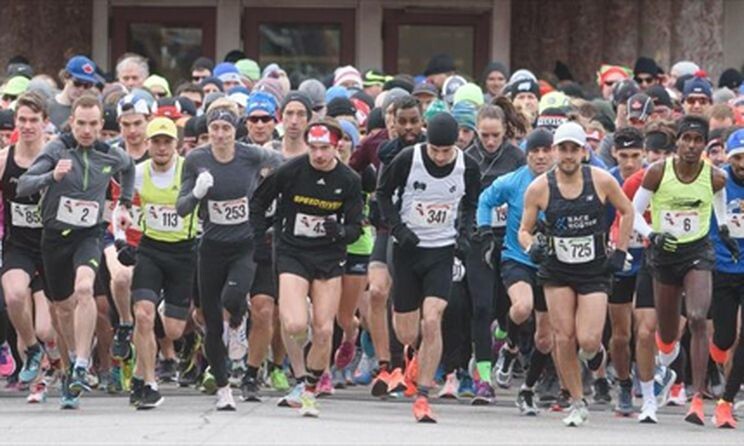
by Abigael Wuafula
Boxing Day 10 Miler
Come run our 100th event (2021). The course is both scenic and challenging, taking runners through Hamilton in Ontario. Snowman medal for all finishers (Gold Snowman medals for the very fast). Indoor registration, refreshments and awards. Spectators are welcome in the gymnasium. Change rooms with showers for entrants. All entrants will receive embroidered cotton baseball cap at bib pickup. At...
more...Run to redemption: Austin marathoner Mitch Ammons has won the race of life, too
When Austin’s Mitch Ammons qualified for the 2024 Olympic Marathon Trials at the California International Marathon on Dec. 4 in Sacramento people asked him what college he had run for. His answer was, “I didn’t.”
“Qualifying for the Olympic trials marathon without a collegiate running background? Almost unheard of,” said Ammons' coach, Jeff Cunningham.

Ammons, 33, played football and ran track as a high school freshman at Dallas Bishop Lynch, even popping a speedy 4-minute, 50-second mile. But then he quit sports. He pretty much quit everything.
“That’s when drugs kicked in,” said Ammons. “I was hanging out with the wrong crowd.”
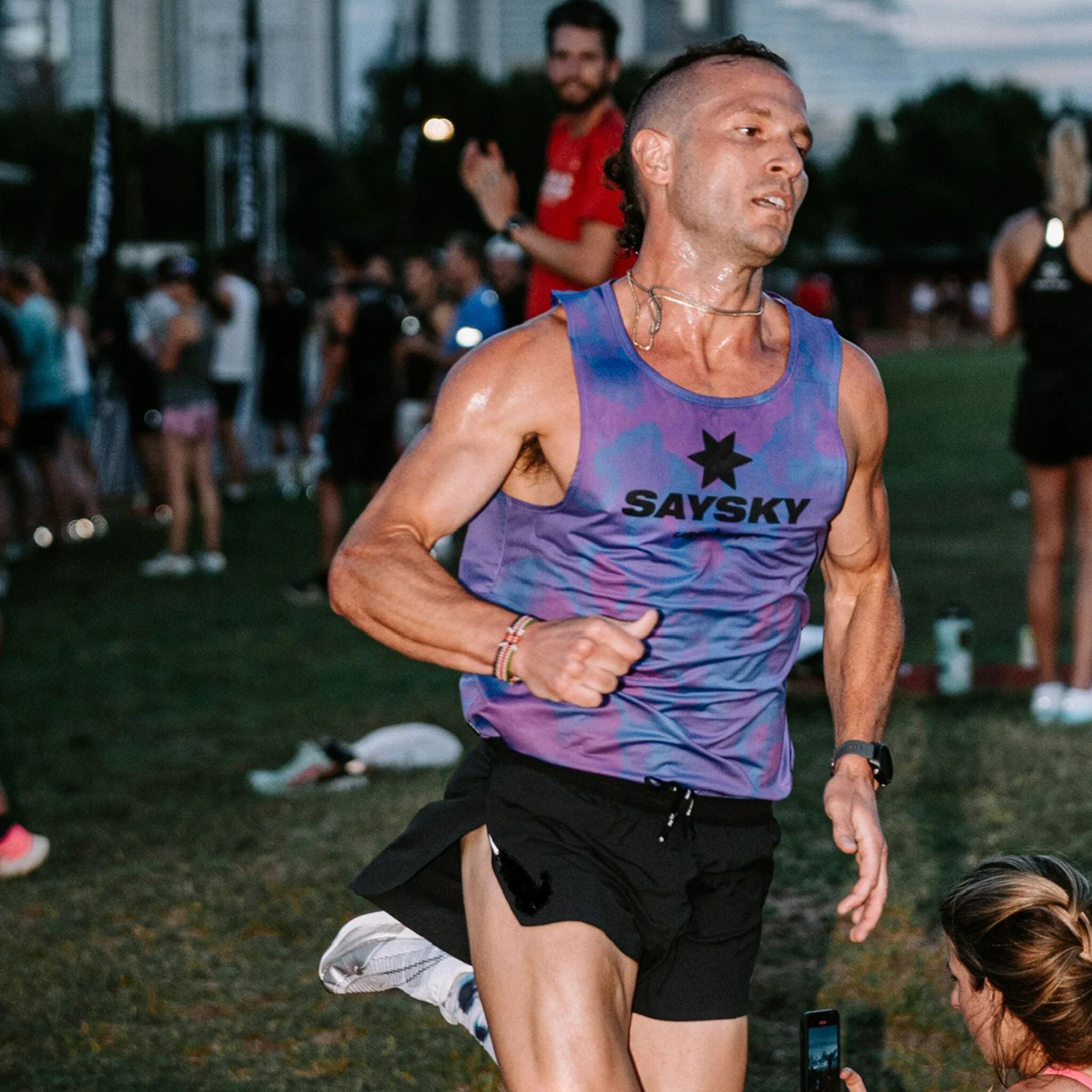
Ironically, Ammons went on to attend the University of Arkansas in the fall of 2008, an NCAA Division I distance running powerhouse. But he never thought about making the track or cross-country team, not even as a walk-on. Instead he partied, he said, escalating his marijuana habit to opioids.
“It was a slow progression,” Ammons said. “I went to the University of Arkansas to party. I started using Oxycontin my freshman year there and I loved it. It quickly became an addiction.
“I clearly remember the first time I had withdrawals,” he said. “I thought I had the flu, and of course took more Oxycontin and that fixed it. At that point I understood I was addicted. Oxycontin turned to heroin along with meth, because heroin was cheaper. I switched from pills and smoking it and started shooting up as a sophomore.”
Like many addicts, Ammons was in out and out of rehab — in his case, six times. He’d always relapse, sometimes the same day he got out. “I’d even try to smuggle drugs in to rehab,” Ammons said. “It’s amazing how much it takes over the survival part of the brain.”
But something finally clicked that sixth time at a rehab center in Kerrville, and when Ammons moved to Austin in 2015, that marked the beginning of his sobriety. Still, he wasn’t exactly in good shape. “I was a two-pack a day smoker and ate junk food and didn’t exercise at all,” he said.
But in January 2018, he joined Gilbert’s Gazelles, a local running program coached by nationally renowned Gilbert Tuhabonye. The long-lost spark of a budding high school miler — all but extinguished — caught fire. His path to redemption was clear.
“That was the beginning of my running journey,” said Ammons, who is an Austin real estate agent. “Gilbert said, ‘I don’t think you realize how good you are.’ He believed in me.”
Ammons got serious about his running a year later, and sought out Cunningham, who coaches a group of top-tier runners in Austin. It didn’t take long before he began hitting notable times, starting with a time of 1 hour, 7 minutes, 38 seconds at the 2019 Garry Bjorklund Half Marathon in Duluth, Minn.
“You can measure an athlete’s metrics in a lab and make predictions regarding their potential. But that does not tell the whole story,” Cunningham said. “Mitch has the ability to work through discomfort and to endure pain — the essence of distance running. He’s as tough as they come.”
In Oct. 2021 Ammons ran the Bank of America Chicago Marathon in 2:23:56 — placing 24th in a world major race. He followed that with a win at the 2021 BMW Dallas Half Marathon in 1:06:42 and lowered his half-marathon time still further a few months later, posting a 1:05:28 at the Aramco Houston Half Marathon in January of this year.
“That showed me I could probably break 2:20 (in the marathon),” said Ammons, who by then had his eye on an Olympic marathon qualifying time.
“It turned out Mitch had a fever during the Aramco Half,” Cunningham said. “He had appendicitis, and a few days later was in the hospital having an emergency appendectomy. That epitomizes everything he is as a competitor. His ability to endure pain is off the charts. I was concerned about his health but impressed nonetheless.”
Under the watchful eye of Cunningham, Ammons built up to running 110 miles a week, training with top area runners David Fuentes and Ronan O’Shea. The 2024 Olympic marathon trials qualifying time is 2:18:00 or better, a one-minute drop from the 2020 standard of 2:19:00. But Ammons was ready.
“As a runner you don’t really know your potential until a race clicks, and then the confidence starts to compound,” said Fuentes, a two-time Olympic marathon trials runner and the 2022 Statesman Capitol 10,000 champ. “Mitch has been training with some of the best runners in Austin, and he’s flourished as a result. It’s been a remarkable progression.”
“My coach gave me a very different buildup from previous ones, focusing on tempo runs,” Ammons said. “I nailed every workout. On one 21-mile training run, I averaged 5:08 per mile for the second half of it. Headed into CIM, I was confident I could run a good race.”
At the California International Marathon, Ammons made it through the halfway mark in 1:08.30 and then he said he picked it up. "It hurt, but I tired to get every bit out of my legs that I could," he said.
And that’s exactly what he did. Seven years after going sober, Ammons crossed the finish line at CIM in 2:16:48, qualifying for the Olympic trials in Orlando that are scheduled for Feb. 3, 2024. To date, only 106 men have met the standard, including another area runner Will Nation, former Cedar Park High School runner Parker Stinson and former Vista Ridge High runner Zachary Ornelas.
“It took a couple of days for it to really sink in," Ammons said. "It was pretty emotional to think of where I was seven years ago and where I am now. I’m living a life beyond my wildest dreams. I never, ever thought I’d be where I am today.
"I attribute running to all the positive changes in my life: my friends, my job, everything," he continued. “Running has taught me so much. You could say I wasted a large amount of my young adult life. But I have no regrets. I probably wouldn’t be who I am today without those struggles.”
(12/27/2022) ⚡AMPby Brom Hoban
California International Marathon
The California International Marathon (CIM) is a marathon organized by runners, for runners! CIM was founded in 1983 by the Sacramento Running Association (SRA), a 501(c)(3) non-profit organization. The SRA Board of Directors is comprised of runners with a combined total of 150+ years of service to the CIM. The same route SRA management created for the 1983 inaugural CIM...
more...These super simple exercises to become a better runner
There comes the point where it is not enough to go running 5 or 10 kilometers and try to make it faster than the previous time, you are looking to become a better runner.
If you want to become a better runner, make sure you acquire a reliable technique and do the proper training before you start adding kilometers to your training routine. Set a schedule and look for different ways to motivate yourself to maintain consistency, rain, shine or sunshine.
Last but not least, you will have to practice to improve your endurance and your speed, using techniques such as uphill slope races, continuous races, and athletic track training. Regardless of the level you have, you can be a better runner if you make training a priority.
1.- Single-leg squat

As a runner, you need to have strong and healthy legs to be able to run many kilometers more efficiently.
Squats are one of the best ways to strengthen your legs. And although sometimes it can be hard to stop running for a day for strength training, the benefits of these exercises are well worth it.
The squat is a multi-joint exercise that strengthens the hamstrings, hips, quadriceps, and glutes. It is a simple exercise to do. However, it is essential to know the proper technique of this exercise to make it as effective as possible, especially in this case, it will be with only one leg.
The method of single-leg squats
During this exercise, as its name says, you must do it with one foot. You can start with the one you want, you can place the foot that will be in “rest” it in front of your body, as in the image below.
Keep in mind not to bend your back: it has to be straight. Pull out the chest with the shoulders back.
Unlike a squat with both legs, in this case, your leg should be at a mid-point for balance, the leg that “rests” also helps maintain stability.
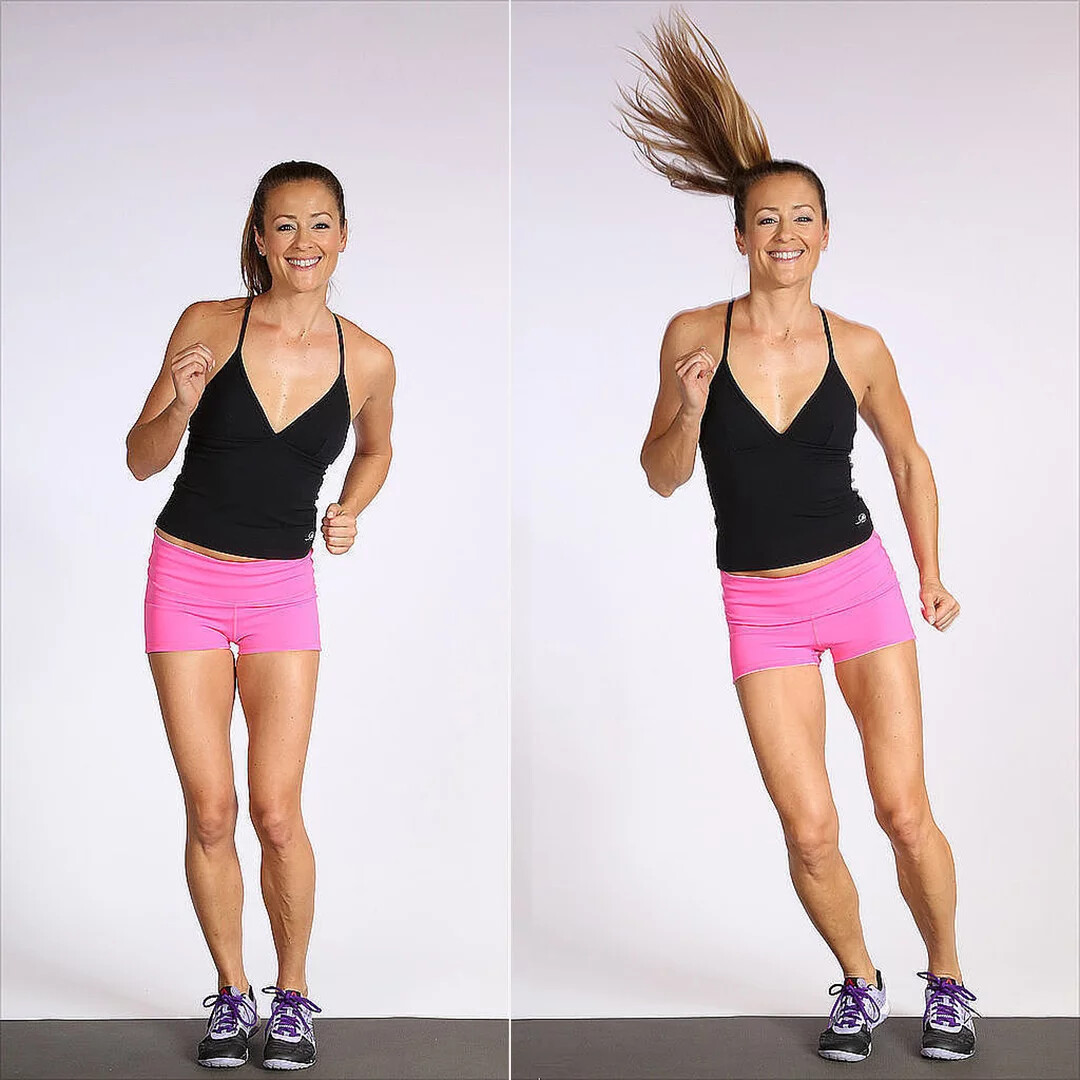
Keep your back as straight as possible, bend the knee until you are seated: the buttocks go backwards. The back is slightly inclined forward, and the knee does not have to pass the length of the foot.
Once in this position, you should feel that your glutes and thighs are working. The most important thing is to keep the body firm and not loose balance.
To return to your initial position, anchor your feet on the floor to avoid any imbalance and push up with your legs. You can contract the buttocks during the rise to make the exercise more effective.
In the beginning, it can be complicated, mainly to go down, for not having the balance and strength necessary, but do not worry, you will improve with practice. As you progress, you can add discs or dumbbells to add difficulty.
5 reasons why you SHOULD include them in your routines
1. To help with the strength of your hip.
The hip plays a super important role in your runner body since it prevents your body from “moving” while you run. But by working your hip, you can direct your movements more effectively.
2. To improve your posture.
Now you know! The posture of a runner is everything, and squats help your trunk stay straight while you run.
By having an adequate posture, your performance will improve. Checked.
3. To gain strength in your glutes.
Did you hear that the squats are perfect for your glutes? It is accurate, and the physical work that you can develop in that part of your body is essential to improve your running technique.
4. To improve strength in your legs.
Who does not want strong legs? Especially when running, they are our biggest asset as runners, and with squats, you can strengthen them, and improve your coordination to develop a more efficient stride.
5. To help improve your stride.
Yes, according to what the previous point says, performing squats allows your legs to assimilate the effort to take a more efficient stride, and if you develop these exercises with slurs, your benefit will be better.
How often to do squats?
Three to five series, of 5 to 10 repetitions twice a week.
2.- Heel raise
The exercise of elevation of heels aims to train the calves, which are an essential part of the leg’s muscle group. It is a little forgotten part of the body, as far as the time dedicated in training, but indispensable for the proper functioning of the inferior trunk.
To execute this exercise correctly, some kind of step is necessary. A resistant platform of at least 6 inches that allows you to do the exercise comfortably. It is a movement that must be carried out slowly and concentrating the effort in this area of the body.
One important aspect must be taken into account before performing the exercise. Correctly doing the movement requires balance and practice. We recommend, in the first sessions, to execute it with your own weight, without dumbbells. It is easy to lose balance and work both legs equally. We usually tend to make more effort with one of the two legs, you should avoid it.
Undoubtedly the calves are one of the most involved muscles in the race. The heel elevation is an exercise that enhances the stride but also protects the runner from many injuries.
In your weekly routine, you must not miss a heel raise exercise in one of its variants.
When we hit the ground with the foot, the ankle maintains its stability thanks in large part to the calves. They prevent the footfall from sinking and help to perform a more effective and explosive impulse phase.
Stronger calves will allow us a better technique, something fundamental to improve the training. Another aspect of working the calves is their protective effect against sprains of the ankle or possible inflammations or lesions of the Achilles tendon. A running workout involves thousands of impacts on the ground, something that can affect the joints in the Achilles tendon. Strengthening calves with this exercise will minimize injuries that may affect the area.
The method of the heel raise
Standing on a raised platform, support the metatarsal, leaving the heel protruding and falling slightly.
If we want to increase the intensity, we can put a bar on the shoulders, although I advise you to hold dumbbells with your hands.
Maintain a straight position and begin to raise the calves little by little, extending the ankle. Try not to lose balance and control the movement at all times.
Safety tips when performing heel raises:
It is very common to suffer a small rupture of the calf by overloading it with this exercise. At first, it will be enough to do it without weight, paying attention to the technique and marking the rise and fall correctly. Nor should rebounds be made when we get down.
When you put your feet on the elevated platform, try not to be too close to the edge, because you are going to overload the area of the fingers and the exercise will not be so effective for the calves. The feet should be half in and half out.
Main benefits of heel raise to become a better runner
Strengthens the calve’s musculature: as we have said before, this exercise focuses mainly on working the calves. Thanks to the heel raise, the calves will be strengthened, which will generate better balance in the legs.
Ideal for runners: it is an exercise that enhances the momentum of the stride, in addition to protecting the runner from many other injuries. For this reason, it is an essential movement for runners. You will gain resistance and explosiveness.
With this exercise, you will tone the lower extremities and gain strength in the calves. Also, it is an ideal movement to recover after an injury in the ankle joint.
How often to do heel raises?
Three to five series of 5 to 10 repetitions twice a week.
3.- Three-dimensional hops
You can’t deny that at some point in your childhood you jumped just for fun. It was a pretty fun game that you could share with your friends. At some point in life, we stop practicing it, without realizing that now, as runners, we can benefit from it more than we imagine.
Jumping burns approximately 10 calories per minute and is an excellent activity to finish a running session, or even to relieve stress. What are you waiting for to start doing it! Go back to that time of your childhood and exercise.
This type of jump is based on increasing calf strength, as well as adding explosiveness. In general, jumping and other plyometric activities make the tendons more efficient to absorb and transmit energy.
The impact of the jump also stimulates bone growth and should protect against stress fractures.
The calf is a kind of spring when we talk about running or jumping. The three-dimensional jump is an exercise that offers a different way of exercising and strengthening the muscle and tendons since the movement is made to the sides and not only upwards as a typical leap. This increases endurance, it also builds movement ability and general agility.
Three-dimensional jumps are made with both feet, they are of low intensity, and it is a safe exercise that does not cause injuries.
The method of Three-dimensional hops
These are short, low and fast jumps, to all sides, forward, back, sides, and in a rotating motion.
Basically, it is about jumping and landing in each of the directions as specified in the previous paragraph. You can do it with both feet, which is equal to two contacts. If you do it with one foot equals one contact, so you do half for each leg.
Jump from side to side, as if there was an imaginary line.
You should not bend your knees to take more momentum, remember that they are short jumps, try to make them fast.
In the case of jumps with rotation, your chest should always remain static.
Benefits to become a better runner
1. It will help improve your cadence and stride.
2. You will burn calories.
You can burn up to 300 calories per 30-minute session.
3. Tone your body.
It is a very effective exercise since it works your whole body and also strengthens it. That is the reason boxers do it all the time.
4. Help with your concentration.
Jumping, even for experienced runners, is not easy, so it will allow you to have a demanding level of concentration, while you begin to master it.
5. It gives you muscular resistance.
As it is a continuous exercise, your resistance will improve considerably, while you gain strength.
6. Improve your aerobic conditioning.
At first, it will be challenging to hold the jump, but you will see how little by little your breathing improves and you will stand more time, and you will even get to do it faster.
7. Increase your power.
By working your legs, you will improve your stride, and with it, your power and speed.
8. It is a super practical exercise.
You can basically jump anywhere.
9. It allows you to work your entire body in one exercise.
Legs, torso, shoulders, arms, abdomen, are the parts of the body that you can exercise.
10. It’s fun.
We assure you that in addition to working your body, you will have fun as in the old days.
How often do Three-dimensional hops?
Unlike the previous exercises, the series and repetitions are different.
Beginner: 80-100 standing contacts
Intermediate: 100-120 standing contacts
Advanced: 120-140 standing contacts
You must jump quickly and keep your feet on the ground the shortest time possible.
Do this 2-3 times per week.
Finally, improving your cadence for running is a great way to improve.
(12/27/2022) ⚡AMPby Runners On Fire
12th Jerusalem Marathon set for March 17, 2023
The International Jerusalem Winner Marathon will be held on Friday, March 17, 2023 for the 12th time, and will mark its “Bat Mitzvah” year with the participation of tens of thousands of runners from all over Israel and around the world.The Jerusalem Marathon is part of a distinguished list of international marathons and is considered one of the most beautiful and challenging in the world.
The uniqueness of the marathon stems from a track that includes important and historical landmarks in Jerusalem, alongside spectacular and breathtaking views, among them: the Supreme Court of Israel, the Israel Museum, the President’s Residence, the walls of Jerusalem surrounding the Old City and the Armenian Quarter, the Tower of David, the Khan Theater and the Sultan’s Pool.

The event is a celebration for the city of Jerusalem, when tens of thousands of visitors visit the city and the local businesses during the marathon weekend, with local businesses and hotels offering discounts, special travel packages, and more.
“We are excited to announce the opening of the Jerusalem Winner Marathon events and celebrate 12 years of activity, in which hundreds of thousands of runners from Israel and around the world participated,” said Jerusalem Mayor Moshe Lion. “Jerusalem invites professional athletes and sports enthusiasts to register and take part in one of the most remarkable sports events in Israel, while enjoying an unforgettable running experience that includes getting to know significant landmarks in the history of Jerusalem.”
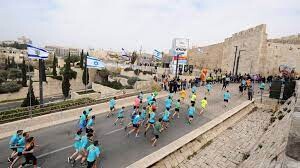
More than sports
Not only a sports event, the Jerusalem Marathon is considered a special social and community happening, in which dozens of associations take part in the community race (0.8 km), among them: Chaiyanu, Isha L’Isha (Woman to Woman), Shalva, Runners Without Borders, Bat Melech, Keren Gefen and Home Base.
Registration for the marathon is open and includes six races: Full marathon (42.2 km); Half marathon (21.1 km); 10 km race; 5 km race; Family race (1.7 km); and Communities race (0.8 km).
The International Jerusalem “Winner” Marathon is headed by the Municipality of Jerusalem, in cooperation with the Jerusalem Development Authority, with the support and assistance of the Minister of Jerusalem Affairs and Heritage, the Ministry of Culture and Sports and the Ministry of Tourism, primarily sponsored by Toto-Winner.
The runners registered for the marathon will receive a package including; an official SAUCONY Dri-FIT race shirt, a personal competition number, a disposable timing chip, as well as other benefits. Additional sponsors for the marathon: Mey Eden, Hapoel Sport Association, Eldan, Cinema City, Reidman International College and Bezeq Business. The marathon is produced by Electra Target.
(12/27/2022) ⚡AMPJerusalem Marathon
First held in 2011, the Jerusalem International Winner Marathon has become a major event with 30,000 participants, of which hundreds are elite competitors and runners from abroad. The course was especially selected to recount Jerusalem's 3,000-year historical narrative since the beginning of its existence. The race challenges runners while exposing them to magnificent views, exquisite landscapes and fascinating historical sites...
more...Adidas joins Dubai Marathon 2023 as key partner
Adidas launches three community training programs for participants to run their best marathon: adidas Runners Marathon, Women’s First 10K Program and Speed Squad.
The Dubai Marathon is back on February 12, 2023, with adidas chosen as a key partner and lead sponsor for the much-awaited sporting event in the region.

The 22nd edition of the Dubai Marathon is expected to attract more than 30,000 resident and international participants who will be descending on the Emirate to run across three races - the full marathon, the popular 10km road race and the 4km Fun Run. Named one of the world’s fastest marathons, the route will take runners through the popular Umm Suqeim, Jumeirah Beach and Al Sufouh roads, with iconic landmarks of Burj Al Arab, Madinat Jumeirah and The Westin Dubai Seyahi in the backdrop.
As part of this year’s marathon, adidas has launched three programs to give runners a leg up and achieve their personal bests. The initiative also aims to strengthen the running culture in the UAE with a focus on race prep, panels and discussions, nutrition and recovery, and exclusive experiences.

The adidas Runners community 12-week Marathon Training Program, led by the adidas coach teams, has three sessions a week to help enhance runners’ foundational sport and running performance. The program focuses on the full holistic approach that includes Mobility, Strength, Mindset, Nutrition, recovery and running. The program will be complimented by panel talks, discussions focusing on race prep, running gear and many other topics covered by the adidas Runners coaching team to support all runner to be ready for the big day.
The Women’s First 10K Program is aimed at female runners in the MENA region who want to conquer their first 10KM race. The program aims to give 100 first time female runners an inclusive, judgment free and supportive safe space within the adidas Runners Womens Squad to help them achieve their goals.
The Speed squad has been designed for Dubai runners who are chasing the ultimate marathon goal (sub3:15 for Women and sub3 for men – completing the marathon under 3 hours) giving a group of amateur runners an elite bespoke training experience. 12 candidates (6 men and 6 women) were selected from over 60 applications to this unique program. adidas will highlight the journey of these athletes on social media with a range of informational content as they work towards their goal.
(12/27/2022) ⚡AMPDubai Marathon
In its relatively brief history (the race was first held in 2000), the Dubai Marathon has become one of the fastest, most respected and the most lucrative marathon in the world in terms of prize money. Each year thousands of runners take to the roads in this beautiful city in the United Arab Emirates (UAE) for this extraordinary race starting...
more...Three Pre-Race and Race Day Myths
Runners put a lot of thought and planning into their training schedule, and rightfully so. The right combination of recovery, hard workouts, mileage and long runs are the main factors to running a new personal best.
However, an often overlooked, yet critical component to running fast is executing in the final days and hours leading up to the race.
Unfortunately, even small mistakes in this tiny window before a race can spell disaster no matter how fit you are.
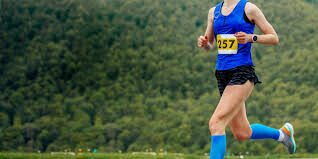
To help you get the most out of your training and to maximize your chances of success on race day, let’s look at three of the most common pre-race and race day myths. More importantly, you’ll learn why and how to avoid making these same mistakes at your next race.
1.- Warming Up Will Make You Tired For The Race Itself.

Many beginner runners devalue the importance of warming-up before a race. Not only will it help prevent injury by ensuring that your muscles are primed for hard running, but it will dramatically increase performance.
When I’ve polled runners about why they don’t warm-up, even when they know it’s beneficial, the number one reason is that they’re worried it will make them tired before the race.
Don’t feel ashamed if you’ve made this mistake, we all have.
I remember thinking my high school coach was crazy when he told me to jog for 15 minutes before the start of my race. “Uh coach, running makes me tired and I’ve got this big race to run you know.”
Luckily for my competitors at the time, I couldn’t have been more wrong.
Here’s the deal:
If you’ve put in the necessary training to prepare for your goal race, running 10 to 15 minutes easily before a race will absolutely not fatigue you in any way. You won’t burn significant glycogen (energy) and your muscles won’t get tired – guaranteed. It is even important to warm up for a marathon.
Warming up will slightly increase your core body temperature, which speeds oxygen throughout the body, primes the muscles for hard running, and triggers the neural pathways between your brain and your muscles to improve muscle contraction and power.
It gets better:
By warming-up before your races, you’ll toe the line ready for optimal performance, as opposed to needing the first few miles to get into a rhythm.
2.- Taking A Rest Day Before The Race Will Keep Your Legs Fresh.
The day before a race is an important day and full of decisions that can affect your performance – both positively and negatively. You’ve got to fuel properly and prepare your body and mind for optimal performance the next day. It’s not surprising then that one of the most common mistakes runners make is resting the day before the race.
Like the myth of not wanting to warm-up for fear of getting tired, many runners think that running the day before a race will only make their legs tired for the next day.
Unfortunately, not only will running the day before not make you tired, but it could dramatically improve your performance.
It doesn’t matter what race distance you’re training for, a 15 to 20-minute run is going to be considered nothing more than a shakeout.
If you’re recovery runs (probably longer than 15-minutes) during the hardest portion of your training cycle have enabled you to adequately recover between hard workouts, what would change the day before your race?
Nothing changes.
The run doesn’t tire you out and only serves to prepare your legs, body, and mind to perform optimally the following day.
The benefits
Ok, so we know now that running the day before won’t make you tired, but what are the benefits?
Like the warm-up, a run the day before a race helps improve blood flow to the muscles, which allows them to loosen up and delivers the nutrients and oxygen they will need for the intense running the next day.
For longer races like the half marathon and marathon, running the day before will even help your muscles store extra glycogen.
You’ll also stimulate the central nervous system, which responds quickly to new stimuli because the growth and recovery cycle is very short.
Want to know the best part?
You can make small improvements to your neuromuscular coordination in less than a day. Conversely, degradation of the neuromuscular system can occur in a day or two, which means if you don’t run the day before the race, your neuromuscular system isn’t performing at it’s optimal level.
This is the reason runners often feel lethargic and stiff when they don’t run for a day or two.
3.- Thinking “I’ve Got The Perfect Race Plan.”
A race will never go as planned.
It doesn’t matter how well-trained you are, or how much time you spent plotting the perfect strategy, something is going to happen that you didn’t expect.
Veteran runners have enough race experience that they’ve seen just about everything and are generally more prepared for any circumstance. Unfortunately, most beginner runners can be thrown off their target much easier and thus must practice and prepare to adapt.
The best way to prepare mentally for something going wrong in a race is to use visualization techniques in the weeks and days leading up to the race.
Visualize as many different scenarios you can think of and then imagine how you’ll feel and prepare a plan of attack in your mind. By conjuring up these emotions, sights, and sounds, you can prepare yourself to remain calm, collected, and execute in a chaotic environment. If any of your scenarios happen during the race, you’ll know exactly what to do and it won’t throw you off your game.
Have you fallen victim to one of these three common myths? Don’t be embarrassed, every runner does, especially when they first start racing. Keep this article in mind in the days leading up to your big race this spring and watch as your race performance improves without changing a thing in training.
(12/26/2022) ⚡AMPby Coach Jeff
Kipchoge wished the sporting fraternity God’s blessings during the holidays
World marathon record holder Eliud Kipchoge spent his Christmas Day with his family at his rural home in Kapsisiywa in Nandi County.
“I’m getting re-energised for the next season which has already started and my focus will be on the Boston Marathon where I’m debuting. I believe I will be able to do well just like the previous races,” said Kipchoge.

This year, Kipchoge ran a new world record of 2:01:09 in Berlin Marathon, lowering his previous record of 2:01:39.
Kipchoge will come up against defending champion Evans Chebet and 2021 winner Benson Kipruto in Boston.
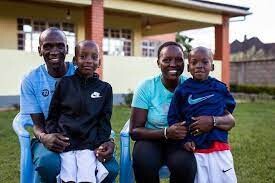
Chicago Marathon champion Benson Kipruto is also at his home in Kapsabet, Nandi County.
Kipruto is looking forward to a better season.
“I took a short break from training. I want to wish everybody a good festive season full of God’s blessings as we look forward to a busy season,” said Kipruto, who trains under the 2Running Athletics Club.
World 10,000m bronze medallist Margaret Chelimo is also in Kapsabet for the festivities but her eyes are fixated on winning gold over the distance in Budapest next year.
“We are celebrating Christmas but my training has been good since I resumed. I will be competing in various races just to prepare for the World Championships,” said Chelimo.
Athletes representative Milcah Chemos urged athletes to stay focused ahead of the new season and strive to run clean.
"We have a lot of competitions coming up this season. We have been fighting the doping menace for some time now and it is time the athletes reward Kenyans by avoiding use of banned substances,” said Chemos.
(12/26/2022) ⚡AMPby Bernard Rotich
Jakob Ingebrigtsen racing the Race of the Cursa dels Nassos
Definitely committed to the end of the year, the Cursa dels Nassos (Barcelona's San Silvestre) aims to get people talking about it almost as much as we talk about the San Silvestre Vallecana (Madrid) or the San Silvestre in São Paulo, which is the most popular in the world.
Definitely committed to the end of the year, the Cursa dels Nassos (Barcelona's San Silvestre) aims to get people talking about it almost as much as we talk about the San Silvestre Vallecana (Madrid) or the San Silvestre in São Paulo, which is the most popular in the world.

So bet big.
And bet on insurance.
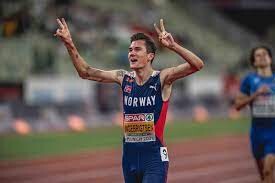
Or perhaps Jakob Ingebrigtsen is not a guarantee of quality?
Olympic champion of the 1,500, world champion of the 5,000, multiple European champion of both distances, the Norwegian talent (22) has confirmed his presence in the short distance of the Nassos, the 5K, a race that will be held at 7:00 p.m. on the 31st of December and in which we could witness a European record: Ingebrigtsen will look for the 13m14s of the Italian Yemane Crippa, an objective that is within his reach, since the Norwegian has come to sign 12m48s45 in the 5,000m, record of the track test.
The organizers assure that Jakob Ingebrigtsen will not run alone, but rather escorted by his older brothers, Henrik (31) and Filip (29), European champions of the 1,500 in 2012 and 2016, a magnificent display of Norwegian athletics that includes Karoline Grovdal (32), European cross country gold in the last two editions, including the most recent, just a week and a half ago, in Turin.
Grovdal will run in the same distance, the 5K, where the Ethiopian Ejegayehu Taye (22), world record holder (14m19s from last year right here, in Barcelona), and the sharp German Konstanze Klosterhalfen await her.
The 10K will have been held earlier, starting at 5:15 p.m.
(12/26/2022) ⚡AMP
Cursa dels Nassos
Certain local traditions may strike you as funny, bizarre, or downright disturbing. You may know that the Catalans ring in the new year by eating one grape with each chime of the clock at midnight, but did you know about the man with many noses ('home dels nassos')? Folklore has it that there's a man who has as many noses...
more...Mohamed Katir will defend his win at San Silvestre Vallecana
Spanish athlete Mohamed Katir will try to repeat his victory at the Nationale-Nederlanden San Silvestre Vallecana which will take place on December 31 through the streets of Madrid.
One of Mola became last year First national athlete to win the traditional test In men since the guy from madrid did it Chima Martinez in 2003after clearly outperforming its competitors, with the best Spanish brand in history (27:45), and came in second place with Burundian Rodrigue Kwezira.
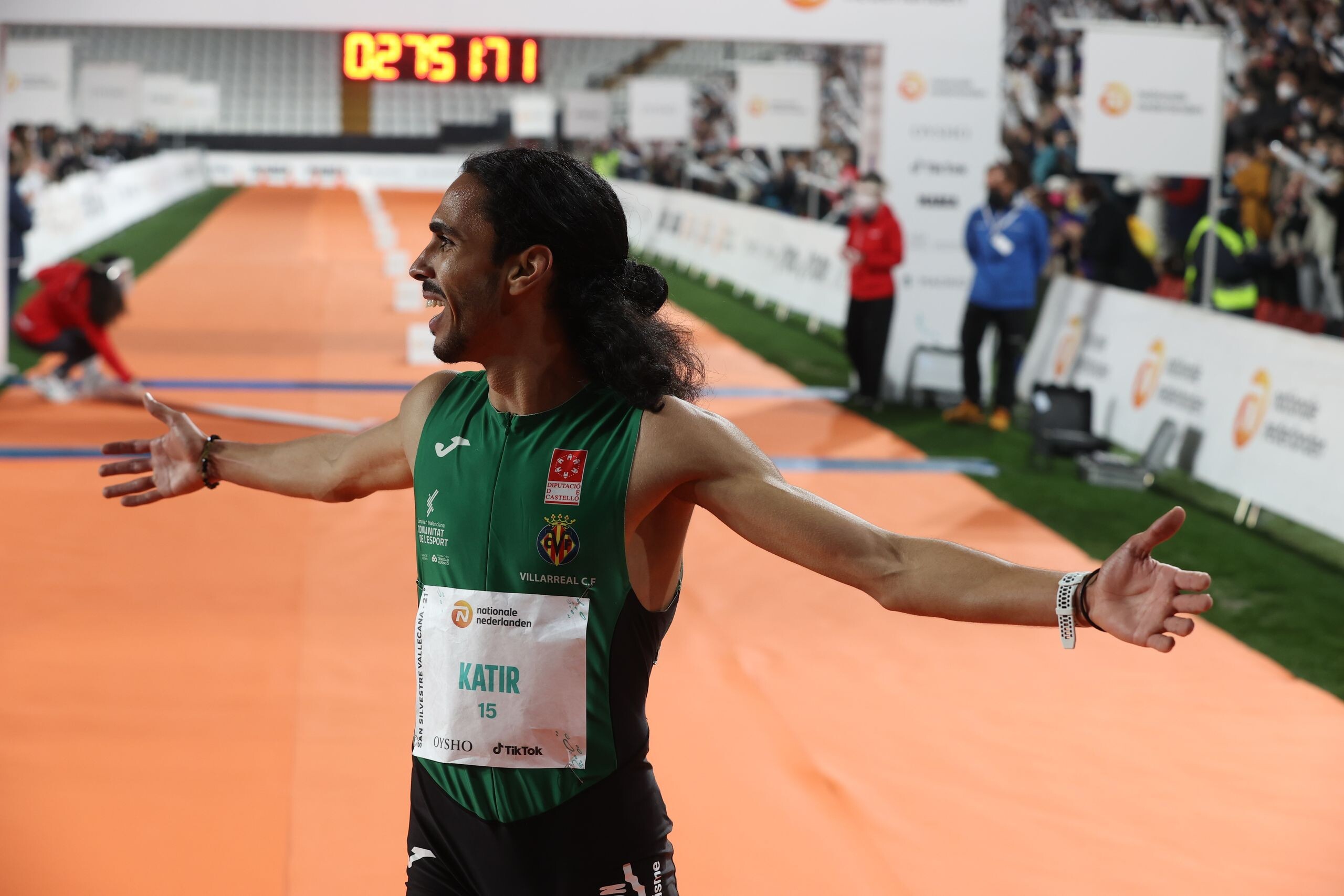
Now the challenge for Cater will be even greater. Since then, in addition to trying to repeat his victory, something that has not happened in the men’s category since 2015 when Kenyan Mike Kegen repeated, he will have to fight Uganda’s Joshua Cheptegei, Olympic champion in the 5,000-meter race meters.
Long distance runner He will try to bid farewell to the year 2022 with a new success After a season in which he finished second in Europe in the 5000m and won the bronze medal in the 1500m World Cup trials in Eugene (USA). On the other hand, Carlos Mayo, one of the top national specialists in the 10 km events, will also compete, as confirmed by the organization.
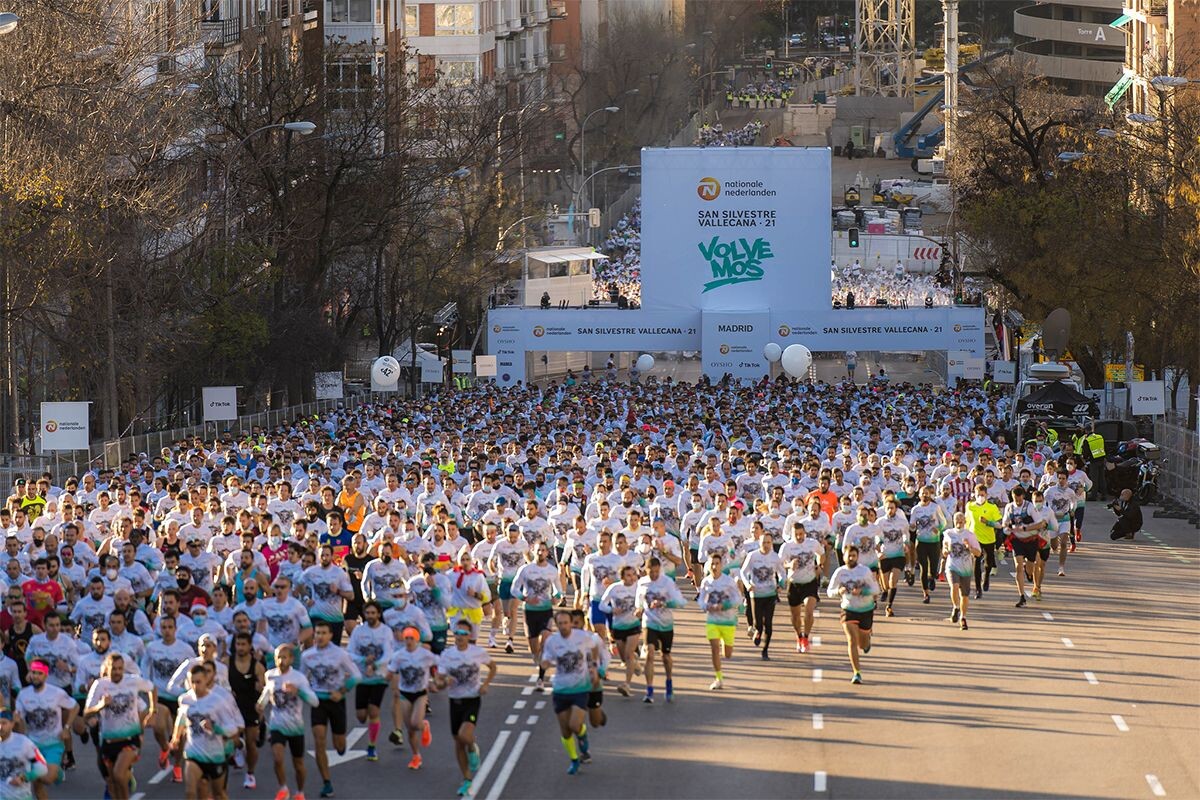
The Aragonese long-distance runner will for the first time take the traditional test through the streets of Madrid as he bids farewell to the year where he hopes to shine, buoyed by being the best. The current Spanish champion in the 10,000m race And the thirteenth in Tokyo 2020 and at the last World Cup in Eugene (USA).
(12/26/2022) ⚡AMPSan Silvestre Vallecana
Every year on 31st December, since 1964, Madrid stages the most multitudinous athletics event in Spain.Sport and celebration come together in a 10-kilometre race in which fancy dress and artificial snow play a part. Keep an eye out for when registration opens because places run out fast! The event consists of two different competitions: a fun run (participants must be...
more...Strava's Year in Sport: Canada is top running destination
Last week, Strava, the leading social media platform for endurance athletes, released the 2022 edition of its annual Year In Sport data report and listed Canada as the top running destination for U.S. runners.
What makes Canada the go-to destination for runners? Its amazing trails and hiking destinations! Sulphur Mountain Trail in Banff, Alta., the Sea to Sky Trail in Squamish, B.C., and Montreal’s Mont Royal (complete) were three of the most popular segments for U.S. runners visiting Canada.


Other trends from 2022 show that the number of runners completing marathons doubled over 2021. This is evidence that pandemic-era runners have continued to run and are motivated to race together.
he Year in Sport review is an annual report from Strava revealing global trends in sports and active transportation, celebrating athletes’ achievements and memorializing stories from the community.
International travel is also back to its pre-pandemic numbers, with over 101 per cent growth in activities uploaded outside athletes’ home countries over the past year. There were seven billion activities uploaded to Strava in 2022 across all 195 countries, with almost 10 billion kudos exchanged between athletes.
(12/25/2022) ⚡AMPThis Musician Runs the Streets of New York City to Enhance His Creativity
Running is both energizing and calming for Jesse Malin.
Name: Jesse Malin Age: 55 Hometown: New York, New York Occupation: Musician Time Running: 25+ years Reason for Running: I run to feel energized, but running also calms me and gives me time to think and be creative.

I started running officially in my late 20s. I was always a hyper kid growing up, and running seemed a natural way to get rid of some energy. My nervous energy and anxiety seemed to subside when I was on a run and afterward. I felt cleansed.
In the 90s, I was playing with the band D Generation and I started to notice that if I was running regularly leading up to a tour, I had more energy and could withstand high-energy performances on stage. I just felt better.
About 20 years ago, I was training for my first New York City Marathon and also promoting a show I was doing with my new band. I was putting up flyers with Scotch tape around the city—which is illegal—and the police picked me up. Because it was a Friday, I subsequently landed in jail for two nights, and I missed that marathon. I got out of jail that Monday and they dropped the charge, but I was so disappointed and angry at the city and the police for taking it to that level. Still, I didn’t give up on running.
My buddy and I ran Central Park the next day and he said it was the fastest he had ever seen me run. I still wonder if it was the training or being locked up with all that emotion for two days that gave me the extra speed—a combo, probably.
Today, when I’m not touring, I run anywhere from three to five miles regularly, usually around New York City. One of my favorite runs is the “three bridges” run, which goes from near my Lower East Side house into other boroughs. I love seeing the river on my side and the tall bridges above me. It’s not very crowded. Once I am out there, I feel I have to stay and complete the run to the last bridge and back. There aren’t always a lot of cabs or trains to get me home, so I have to finish.
As a musician, I’ve found that running is the best cure for writer’s block. Running really helps to wake up my creative juices and get the blood flowing. It’s a time for me to work on my own lyrics. Who knows, maybe it will help me live longer, too.
Running is also a great time for me to listen to other artist’s music. I love fast songs from bands such as Motorhead, The Ramones, and Bad Brains. I also like to listen to new things I am writing or working on, too. It’s a good way to sort out what’s working and what isn’t.
On the flip side, running is also a quiet meditative time for me. Sometimes no music is great—and it’s a good time to hear what’s in my head. A lot of times I prefer to have a conversation with myself and work things out.
I’ve gone out running on the coldest and even hottest days in New York City, and always feel motivated when I see other people running. I also enjoy running with friends on occasion. Having someone to push you is motivating.
I’ve also found running helps me sleep better. I’m a fan of natural living as much as possible, and if I wake up with anxiety or have some thoughts, I need to work out. I always know going for a run can help me see a bigger perspective.
The rock/punk rock music industry is associated with a lot of drug use, and being destructive and unhealthy at times. It’s that whole mentality of live fast and die young, but I’ve always been about positivity—you can be wild and free and have something to say about society, but you don’t need drugs to do that.
When I’m on the road, I enjoy getting out of the hotel and exploring whatever city I’m in. It keeps me together, calms me down, and just centers me before a show. Because I’ve found that the audience relates when you have something to say about their city, it’s a good way to get to know a place.
I enjoy running around London—to me, it’s a lot like New York—and has good parks for running, including Hyde, Regents, and Greenwich. I wouldn’t be brave enough to run in the streets because I would have to dodge the traffic coming from the opposite way!
Also, when I’ve been touring, I’ve woken up at weird hours because of the time changes, and show schedules, so always being able to go for a run resets me while on the road. Sometimes it means a treadmill, but as long as it can crank up to the speed I want, I’m happy with it. Still, I always prefer running outside.
Once I got into running and it became part of my life, I felt like I had a special remedy in my back pocket; a special thing that I could bring with me anywhere, at any time. Running offers me a freedom and kind of a medicine, but more than that, a place of peace that I can tap into when I need it.
I always like to remember how powerful a new day can be. Each morning when the sun bursts up, if I can jump out of bed and if I can get a run in, I feel so much better. It’s that forward motion that keeps me going, inspired, and happy.
Until I really started running, I was unaware of how great and helpful forward motion is for creativity. I have so much going on in my head and in my life that standing still doesn’t always open new channels of inspiration. I crave the energy, but also the motion. It is somehow easier to write new things and see the world clearer with a different perspective than when you are at a desk or on a couch, or, for that matter, a studio or practice room. I like the positive vibes and the blood flow waking you up.
I think no run is too short. Like so many wonderful things in life, if you just do it, it will become easier to do more. Take the pressure off yourself and start with short distances, a mile or so. You will find yourself feeling so good that you will end up doing more and surprising yourself. Like the good folks in the band Parliament Funkadelic have said, “Free your ass and your mind will follow.”
These tips have made my running journey a success:
1. Don’t compare yourself to others
Go at whatever pace feels good to you.
2. Stay hydrated
Drink lots of water or organic juices, like coconut.
3. Bring some music or an audiobook on long runs
It helps pass the time and can be motivating.
Jesse’s Must-Have Gear
→ Adidas Track Suit: Like Run DMC, I like this because it’s light and easy to wear when you get up to those long fast miles and the burn is on.
→ Nike Air Zoom Pegasus: They feel smooth, light and unobtrusive. You forget you have them on in a good way, but yet I still feel secure and protected on the crazy city streets.
→ Bad Brains: This band, who play so tight and precise, makes me want to do my best out there. Their music gives me focus and a power like I am on a mission to get down those miles. They’re lyrical message of PMA—Positive Mental Attitude—in songs like “Attitude” and “Rock for Light” lets me know I am not alone on this journey and that the struggles are part of the ride.
(12/25/2022) ⚡AMPby Runner’s World
Do Runners Drink Too Much Alcohol?
A growing body of research says that no amount of alcohol is good for our fitness and health. It’s time to rethink our relationship with booze.
Pro ultrarunner Coree Woltering doesn’t do anything halfway. “If I’m going to do it, I want to do like 120 percent, no matter what it is,” he says. When he brings that attitude to his running and racing, the results speak for themselves—like setting a new fastest known time on the 1,000-plus-mile Ice Age Trail across Wisconsin in 2020.

However, Woltering also brought that attitude to the bar. “It wasn’t just a ‘let’s have two beers and be done’ thing,” says the 32-year-old from Dalton, Georgia. Two beers at his house would lead to four more at the bar. “Six a night would be normal.” The results were noteworthy—but in all the wrong ways. His training became inconsistent. After long nights out, he’d sometimes skip sessions. When he did get out to run, he found his focus and mental fortitude lacking. Woltering doesn’t take over-the-counter pain management medications like Tylenol or ibuprofen. Instead, he’d slam a beer or two late in a race, hoping to hush the screaming of his feet and legs.
This approach is not unusual, says David Wyrick, PhD, a public health education professor and the director of the Institute to Promote Athlete Health & Wellness at the University of North Carolina, Greensboro. Wyrick studies alcohol use among student-athletes. Pain control is one of three primary reasons athletes report using alcohol (along with stress management and as a way to celebrate). Though, when it comes to pain, “there’s no evidence that alcohol has medicinal benefits,” says Wyrick.
Almost all the benefits Americans attribute to alcohol—that it is good for the heart, helps you sleep, eases pain—are false, says George F. Koob, PhD, director of the National Institute on Alcohol Abuse and Alcoholism. “The truth is, there’s no safe amount of alcohol, not even one drink a day,” he says.
And yet: Running culture—which is otherwise populated by protein-shake-drinking, heart-rate-tracking, health-obsessed fitness nuts—is enmeshed with drinking. From brewery-based runs to the infamous beer mile to groups with the motto “a drinking club with a running problem,” alcohol is as much a part of the fabric of our sport as energy gels. But the fact is, alcohol destroys lives and families. Running culture that glibly celebrates it is feeding that destruction.
Pulling them apart doesn’t mean eliminating alcohol. Koob has spent the last eight years working on issues around alcohol abuse, yet he describes his own approach to alcohol as “one eye open.” A glass of beer or wine every now and then? That’s fine for most runners. But blithely telling yourself beer is a recovery drink because it has carbs and your Tuesday night run ends at a bar? Not so much.
It’s time to take a good look at what we know—and don’t know—about alcohol’s relationship to our health, running performance, and mental well-being.
Booze and Sleep Don’t Mix

Three years ago, journalist Lisa Slade, a 38-year-old recreational marathoner, purchased a Whoop wearable device. Each morning, Whoop prompted her to input data about what she did before bed. Questions included: Did you eat a big meal? Are you under a lot of stress? Did you consume alcohol last night?
At the end of the first month, Slade got a summary of her data. “Pretty much the only thing I noticed that negatively impacted me to an alarming amount was alcohol,” she says. Slade had considered herself a light drinker—maybe a beer while making dinner, or two cocktails if she was out with friends. Even that low dose, though, was affecting her recovery times and sleep quality by as much as 20 percent. “I could tell that I was having a harder time recovering from it,” she says. After “just one or two drinks, I’d wake up and wouldn’t feel so good, like I hadn’t slept super well.”
Emily Capidolupo, senior vice president of data science and research at Whoop, says Slade’s revelation is common among new Whoop users. She adds that many cut back on drinking after a few months of using the wearable, which uses biometric data like heart rate, heart-rate variability, respiration rate, and sleep quality to score a user’s overall recovery. Alcohol “is one of those things we know is bad for us, but we don’t realize quite how bad,” she says. When Whoop presents the data in a tidy end-of-month report, it’s clear for many users that alcohol is a poison. “It’s a fun poison,” says Capidolupo. “But it’s poison.”
When you head out for beers after an evening run, you put an extra task on your body’s to-do list. In addition to recovering, it now must divert energy to breaking down the alcohol entering your bloodstream, inhibiting crucial functions like repairing exercise-induced muscle damage. Alcohol also impacts your immune system, blocking inflammatory responses vital to this process. For chronic drinkers, the negative effect on immunity can lead to more illness and fewer training days.
Compounding the issue, though, is that the most popular time to imbibe is in the hours before bed. Alcohol wrecks sleep quality, says Christopher Winter, MD, a Charlottesville, Virginia–based sleep specialist and host of the Sleep Unplugged podcast. If this seems counterintuitive, and a single beer makes you drowsy, you’re not alone. Alcohol is the most popular sleep aid in the country, he says, but that’s because most people don’t understand the difference between being sedated and being asleep.
Alcohol suppresses your central nervous system. That is not high-quality rest. Since alcohol relaxes a lot of the muscles involved with breathing, you may breathe less deeply as you sleep, lowering your oxygen saturation levels, says Winter. When you’re not getting enough oxygen, your body’s natural response is to wake you up. Alcohol also suppresses deep sleep, which is when your body makes growth hormone.
“If you’re grinding out the miles and trying to recover before a race or your next training session, alcohol impairs your ability to do that,” he says. It may also interfere with the secretion of melatonin, a hormone associated with sleep, which can mess with your shut-eye schedule causing daytime drowsiness and nighttime restlessness—so you reach for another beer. If you do plan to drink, drink less and do it very early, says Winter. “There really is no way to sidestep its negative properties.”
Not being able to fall asleep can cause extreme anxiety, especially as you count the minutes wide awake until the alarm says it’s time to get up. Many people turn to alcohol to dull anxiety, though it’s neither good nor effective, says Winter. It may mask the issue for a night, but it won’t give you the rest you need. If you’re struggling to get to sleep at night, first clean up your sleep hygiene by logging off devices and stress-inducing news sources at least an hour before bed. Consider meditation or quiet journaling, which can help you unwind, says Winter. And if you’re still worried about your sleep quality, take the issue to a sleep specialist.
The Pandemic Didn’t Help
J.R. Jamison, a 43-year-old Indiana-based author and NPR host, took up running 10 years ago and eventually lost 80 pounds. He was healthy and fit and loved how running got him out into the world. But when the pandemic hit, he found it difficult to differentiate between weekends and weekdays.
Jamison admits his weekend drinking habits had always been on the heavy side. But when Tuesday night started to feel just like a Friday night and no one was going anywhere, weekend drinking became everyday drinking. Next thing he knew, the running habit that had changed his life had fallen by the wayside. “There’s no doubt that substance use disorders have skyrocketed since the pandemic,” says Dave Rabin, MD, PhD, a San Francisco–based psychiatrist. A CDC report from August of 2020 found that 13 percent of Americans started or increased their use of substances like alcohol during the first six months of 2020.
Rabin says that, at its core, substance use stems from a human desire to avoid discomfort like stress, anxiety, or lack of control. And if we haven’t learned healthy, long-term strategies for managing discomfort, we look for something to alleviate that discomfort. Alcohol often produces the desired numbing effect.
As Jamison found himself drinking more, he had less energy and motivation. He’d wake up with brain fog and struggle through a day of work. With no impetus to run, and little accomplished professionally, he’d reach for a drink each night.
What’s so insidious about alcohol and other sedatives, says Rabin, is that these drugs numb our frontal-cortex activity, decreasing our insight and judgment. As a result, we unwittingly train ourselves to embrace a casual attitude toward self-reflection—and wind up oblivious to our problematic behavior, he says.
Running, however, does the opposite. It results in a neurochemical response in the brain, with endogenous pleasure molecules, endogenous opioid molecules, and endogenous cannabinoid molecules, plus dopamine and serotonin, all releasing on cue like one glorious feel-good chorus. This is why addiction specialists often recommend it as a coping mechanism for those struggling with alcohol use disorder, says Rabin.
But running won’t help if you can’t summon the motivation to do it. It took Jamison more than a year to rediscover his enthusiasm. As 2021 came to a close, he committed to Dry January. “I didn’t have a drop to drink throughout January, and I started to notice that I wasn’t waking up anymore with headaches,” he says. He started running again. “I liked the way I felt. I was happier. I just decided not to drink again, and I haven’t.”
The Myth of Healthy Drinking
Not long after Lisa Slade saw the effect of alcohol on her Whoop data, she clicked around the Internet looking for more info on why the impact was so dramatic. “We’ve been told our whole lives that a beer or a glass of wine is heart-healthy,” says Slade, who has since cut back her drinking. “But I was reading studies about the effects of alcohol and it turns out that maybe it’s not good for you at all.”
Alcohol is a known carcinogen, a substance that can cause cancer, says Tim Rebbeck, MD, a professor of cancer prevention at Harvard University. When you drink, your body relies on two enzymes to break alcohol molecules into pieces small enough for removal from the body. That breakdown process creates a byproduct called acetaldehyde. Laboratory, animal, and human studies have all shown that acetaldehyde causes DNA damage to cells, and this damage can lead to cancerous tumors. “We are sure that alcohol is a causative factor in some cancers, and it’s supported by lots of different lines of evidence,” says Rebbeck.
Getting the word out that alcohol—like tobacco—is a carcinogen has been difficult for several reasons. For one thing, alcohol is socially acceptable and even socially encouraged. Furthermore, the relationship between alcohol and cancer is more complicated than smoking’s direct link to lung cancer. Head, neck, liver, and breast cancer all have strong links to alcohol, says Rebbeck. But, of course, some people who never drank a drop will still get breast cancer and vice versa. “It’s a complex story, and people have a hard time digesting complex stories,” he says. And how much of a role alcohol played in any one person’s cancer development is an impossible equation to tease out.
As for a glass of wine being heart-healthy, recent research has debunked that advice, says Koob. The early studies concluding that it helps your heart were based on the resveratrol in red wine, but the amount you’d have to drink to get the benefits of the compound would tear your liver up, he says. A 2019 study published in the Journal of The American Heart Association confirms this, finding that heavy drinking is a risk factor for cardiovascular disease.
Even studies that find some benefit to drinking may not hold up under scrutiny. Over the years, a handful of meta-analyses of all-cause mortality among drinkers versus nondrinkers found a “J-shaped curve” between the two. Basically, mortality was slightly higher for nondrinkers, but dipped for moderate drinkers, and then rose sharply for heavy drinkers, forming a J. This would appear to make the “glass of wine for heart health” statement true. But in 2015, researchers took a closer look at these studies. When they teased out exactly why many abstainers did so, they found a confounding variable: These people were eschewing alcohol because of existing health concerns. In other words, they were less healthy than the moderate-drinking group to begin with. When researchers adjusted the data to account for abstainers with outstanding health concerns, the initial hump on the J flattened out.
Studying alcohol use and health effects is difficult, in part because people often don’t remember how much they consumed or because they aren’t being honest about it, says Rebbeck. That makes giving recommendations on how much and how often to drink difficult, too.
Interestingly, not a single expert interviewed for this story told us to stop drinking. Several mentioned that they occasionally enjoy wine and beer. “‘Don’t ever do anything that might harm you’ is not useful messaging,” says Rebbeck. Life is full of things that can harm us. Overly charred toast. Processed meats. The flame retardant on our couches. Uneven sidewalks waiting for unsuspecting runners.
A better approach is to consider your personal risk factors, your tolerance for risk, and the joy that alcohol—in moderation—brings you. If you have a family history of breast cancer, or head and neck cancers, you may decide the risk isn’t worth it. If you don’t, drinking in moderation may be a risk you’re willing to take. However, “limiting your exposure to alcohol is the bottom-line answer,” Rebbeck says. “You are consuming a carcinogen. How much of that do you really want?”
The Longest Race: Sobriety
For Coree Woltering, that amount was zero. On November 1, 2021, Woltering got sober. In past years, he’d taken time away from drinking and seen an improvement in his training. But then he’d go back to drinking—and plunge off the deep end. There wasn’t a happy medium where he just had one beer every other night. “It wasn’t just like I drank to get drunk,” he says. “I really enjoyed the taste of certain wines, certain beers. But that’s part of the problem, I enjoyed it to 150 percent.”
A week of sobriety passed. Then another. He jumped in to crew a friend through an ultra and got offered a shot of Fireball at an aid station. When he turned it down, everyone was surprised. “They’re like, ‘Oh, are you not feeling well?’ I’m like, ‘No, I feel great. I’m just not drinking.’ And everyone’s like, ‘Oh, are you sick?’ ‘No, I’m not sick. I’m just literally not drinking.’” That drinking culture and running culture knot is tight.
In the first month, Woltering focused on consistency. He set a goal to run every day in December and hit 30 of the 31 days. Over time, the awkwardness with friends abated, and Woltering found a community of similarly sober athletes. But his performance wasn’t doing the about-face he’d hoped for.
The second month was the rough one. “It was like, ‘Oh, now I feel every little pain in my body,’” he remembers. And then there was the FOMO. “It’s like, for the rest of my life, am I missing out on all these beers and wine that I haven’t tasted yet?”
It would take Woltering six months to get back to a place where he felt good. Yet he wasn’t seeing the times he’d hit in previous training peaks. That was frustrating. Giving up alcohol was supposed to be this golden ticket to better health.
Finally, eight months into sobriety, things started to click. His times began to improve. Those better numbers bolstered his commitment to the sober path. And then, in October of 2022, three weeks before hitting a year of sobriety, Woltering won the Blue Ridge Ultra 50K. It was his first ultra victory since 2019. He celebrated with cake and ice cream.
(12/25/2022) ⚡AMPby Runner’s World
John Babington, Who Coached Bronze Medalist Lynn Jennings, Banned by SafeSport
The prominent coach, who worked in the Boston area from the 1970s to 2013, is accused of sexual misconduct with a minor and physical misconduct.
John Babington, the longtime coach of 1992 Olympic bronze medalist Lynn Jennings and an assistant coach for the 1996 U.S. Olympic team, has been banned by the U.S. Center for Safe Sport.
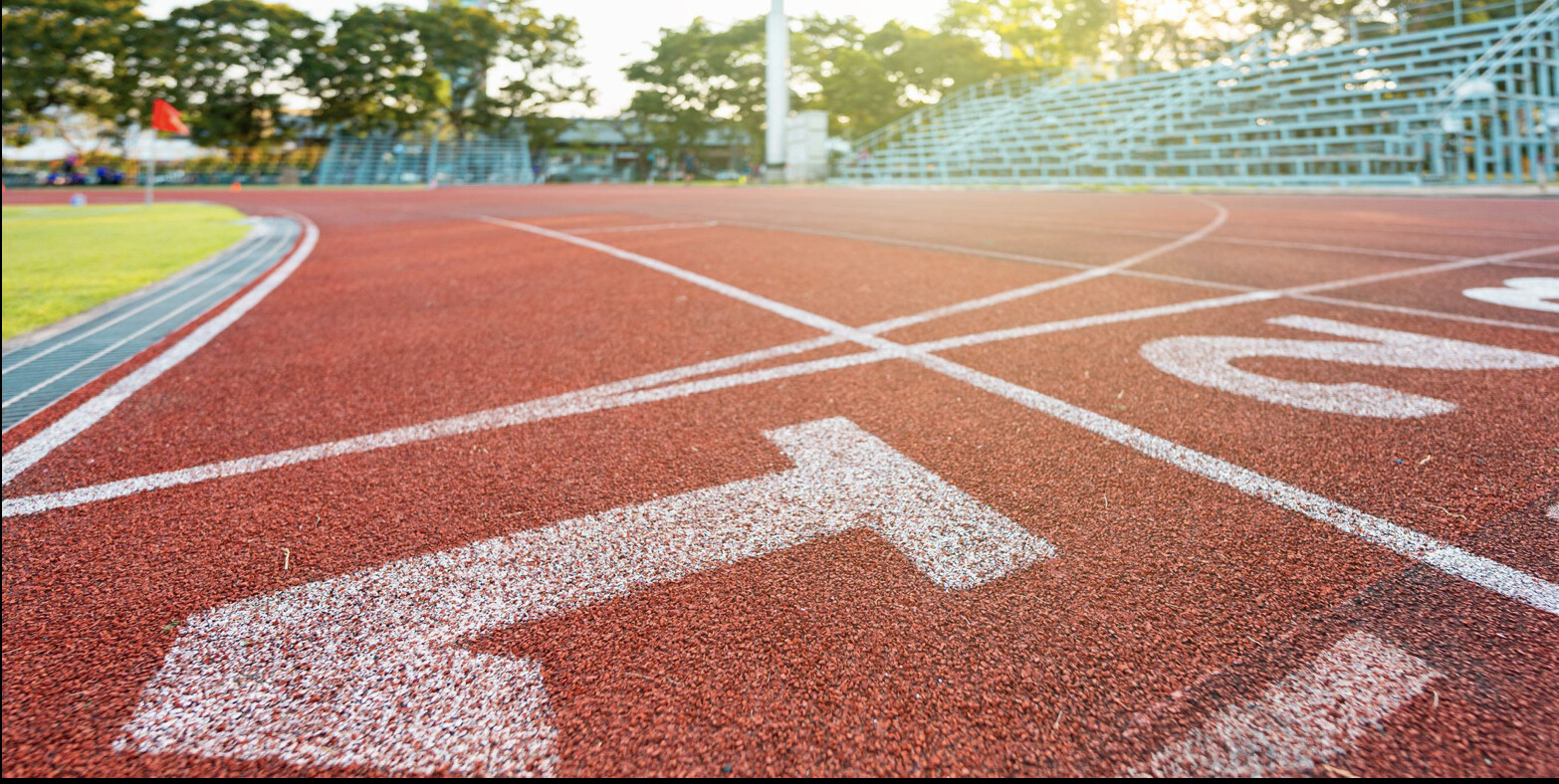
Babington is listed in the SafeSport database with “permanent ineligibility” next to his name. The misconduct is described as “sexual misconduct involving a minor” and “physical misconduct.”
His ban is subject to appeal.
A spokesman for the U.S. Center for SafeSport wrote in an email to Runner’s World that the center does not comment on disciplinary actions “to protect the integrity of its investigative process.” The database will be updated when the period to file an appeal lapses or when a final outcome of arbitration is determined.
It is not known whether Babington, 77, currently does any coaching. He did not respond to a call and message from Runner’s World.
Babington was a coach of the women’s Liberty Athletic Club in Boston during the 1970s, and he was also the coach of cross country and track & field for 26 years at Wellesley College, from 1987 until 2013.
An article by the Boston Globe reported that SafeSport’s investigation concluded that Babington engaged in sexual misconduct with two minor girls and unwanted physical misconduct with a female collegiate athlete he coached. The incidents occurred from the mid-1970s to the 1990s.
“I have acknowledged some merit in some of the allegations in this case and have expressed my regrets that anything occurred,” Babington told the Globe.
Jennings worked with Babington starting in her teen years. In 1978, as a 17-year-old, she ran the Boston Marathon without a number, defying Babington’s wishes. According to a 2012 Runner’s World article about Babington’s coaching accomplishments, after that Boston Marathon, Jennings and Babington stopped working together for a decade.
They reunited in the late 1980s. Jennings went on to win three world cross-country titles and the bronze medal in the 10,000 meters at the 1992 Games in Barcelona, where she ran 31:19.89.
Efforts by Runner’s World to reach Jennings were unsuccessful.
In an email, a Wellesley College spokesperson wrote, “Wellesley was unaware of this decision until this inquiry and does not know if Wellesley students were part of the complaint. We were aware that SafeSport was investigating John Babington, who retired from coaching at the College in 2013.”
(12/25/2022) ⚡AMPby Runner’s World
How To Run Short-Rest Strides To Improve Sustainable Speed
When we interviewed Adam Peterman in November, he described doing strides twice per week. That's interesting, but expected. Strides are a near-universal element of road runner training, where the margins separating the best athletes are paper thin. So it makes sense that trail runners would be doing strides too.
Adam described 8 x 20 second strides with just 40 seconds of easy running recovery. That's a pretty narrow recovery window! The men that Missy Elliott does not want last longer than 40 seconds. It's definitely not enough time to completely recover from a full-gas stride. Are we seeing a one-off phenomenon, or something with general takeaways for all runners?

I think that Adam's approach to strides demonstrates a cool training wrinkle that I have somehow never written about after all of these years. What a perfect excuse to dig into a fascinating training element! Let's get spicy, safely.
Training Theory Context of Strides
Mention short-rest strides to any training theory sicko, and the first thing they'll think about will probably be "diagonals." Common in many training camps in East Africa, diagonals consist of fast strides from one corner of an endzone to the opposite corner, with easy jog recoveries along the goal-line between each. Athletes will sometimes do diagonals for 30+ minutes, having it be a secondary workout focusing on speed endurance that has limited recovery cost.
Here's where it gets wild and a bit creepy. Reports from the camps often say that the diagonals take just under 20 seconds, and the recoveries take just over 40 seconds. My co-coach Megan used diagonals as one of her primary workouts to win multiple trail national championships. Similarly, track pros who do fast straights with turn recoveries often approximate the 20:40 second ratio. Who does that remind you of? My god is that Adam Peterman music?!
In running and cycling, 30/30s have overlap too. The Uphill Athlete coaches describe introducing intensity via up to 30 minutes of 30/30s for advanced athletes, saying that "the 30 seconds is just long enough for the athlete to accelerate up to a high speed, hold it for 15-20 seconds, and then decelerate into the rest." They say it improves high-end speed without significant metabolic cost, and cite that 30/30s are used by Kilian Jornet. I'd start fueling my runs with ivermectin if it was used by Kilian Jornet.
Physiologist Veronique Billat theorized that 30/30s maximize adaptations for velocity at VO2 max in runners, pioneered in a 2000 study in the European Journal of Applied Physiology. Theoretically, the session harnesses the principle that athletes stay at VO2 max for a few seconds after they stop running at VO2 max, so short-rest intervals optimize time spent at both fast speed and high aerobic demand. Cycling has adopted 30/30s, with top pros posting videos of these types of sessions.
They may even share some evolutionary lineage with "Tabatas," 20:10 second ratio intervals popularized after a 1996 study showed they had outsized benefits for some athletes (though see this article I wrote last year for an explanation of the time-horizon with Tabata intervals).
(12/25/2022) ⚡AMP
by Trail Runner Magazine
Want to Run Faster? Here’s How to Do It, increasing your speed and endurance with these tips
There’s no doubt about it: Running can be hard. But it doesn’t have to be!
“The goal of running faster,” says professional marathoner Stephanie Rothstein-Bruce, “is to run more economically and use the least amount of energy that you can.”
This becomes particularly important in long-distance running. After you’ve run 20 miles, the last thing you want to do is expend any extra energy — you don’t have much of it left! With a few smart tweaks to your routine, you can run much more efficiently with the energy you have — without having to pop an extra gel.

5 Tips to Run Faster, Starting Now
1. Roll Out.
You may foam roll after your workouts, but if you’re not foam rolling before, your body may not be ready for the workload you’re about to subject it to, says Daniel Viera, USA Triathlon Full Throttle Endurance coach. “Most of the time, the muscles can handle it,” he says, “but you want to make sure the tendons, ligaments and joints are ready.” Be sure to hit the glutes, hamstrings, quads, hips, calves and IT bands, spending 30 to 60 seconds on each muscle group before launching into your dynamic warm-up.

2. Drill, baby, drill!
Running fast isn’t about just running forward in a straight line. Drills such as butt kicks, high knees and Russian kicks (resting on one leg and kicking the other) increase proprioception (one’s perception of his or her body and the strength of effort being used in movement) and coordination, says Viera. He recommends beginning the drills slowly and increasing speed and velocity as you get comfortable with them. The payoff: Your body will learn to fire the correct muscles at the proper time.
3. Mix up the pace.
Running your fastest speed at every workout isn’t the key to getting faster, says Viera. As counterintuitive as it sounds, running slower can actually help you get faster! He suggests mixing things up with a slow endurance run, a tempo run and some speed work at a track at least once a week. “Working on your heart, lungs and muscles is the key to becoming a more efficient runner.”
4. Make your form work for you.
Guilty of swinging your arms across your body when you run? “The side to side motion is wasted energy for your arms as it forces your hips to counter the motion instead of powering you in a forward motion,” says Rothstein-Bruce (who runs a 2:29 marathon, so she knows a thing or two about running efficiently). She recommends practicing seated arm drills by sitting with the legs at 90 degrees and swinging your arms back like you’re beating a drum. And when it comes to “running tall,” imagine someone is pulling you up by your hair while maintaining a slight forward lean.
5. Get new sneakers!
Often, pounding the pavement in old sneakers can lead to injury, says Viera, and injured muscles are certainly not as efficient. Make sure to get fitted for new sneakers every 300 to 500 miles. And be sure to properly break them in by walking for a few miles before lacing up for a long run.
(12/24/2022) ⚡AMPby Theodora Blanchfield
Daniel Mateiko sets sights on World Championships
The 2022 Istanbul Half Marathon's runner-up Daniel Mateiko is targeting a podium finish at next year’s World Championships in Budapest, Hungary.
This is after skipping Athletics Kenya's national trials for next year's World Cross-country Championships.
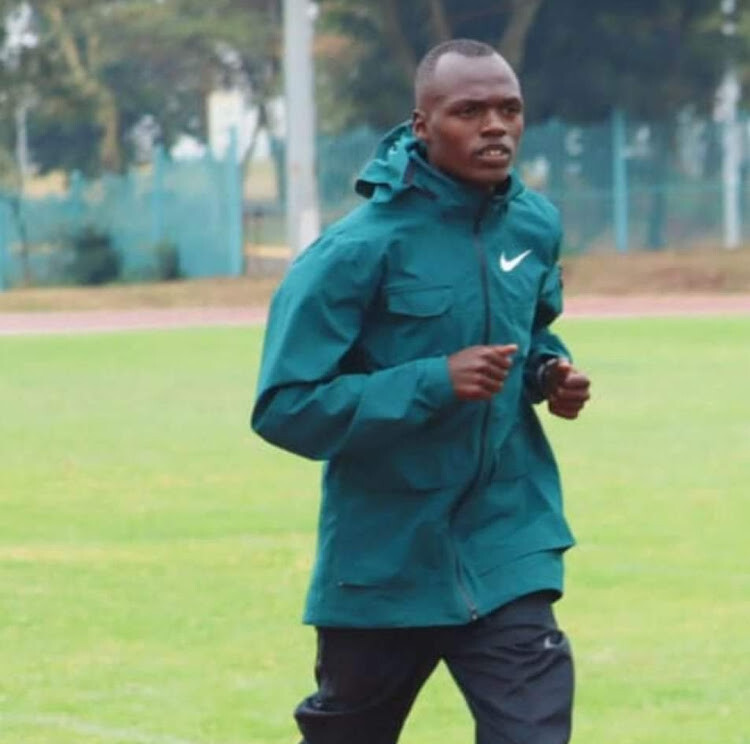
Mateiko, who finished eighth (27:33.57) in the 10,000m during this year’s trials, said his main focus now is to qualify for the World Championships.
“My primary focus is on the World Championships, where I intend to finish among the top three athletes. I had really wanted to participate in the Word Cross-country Championships but the trials caught me off guard…I had not trained well,” Mateiko said.
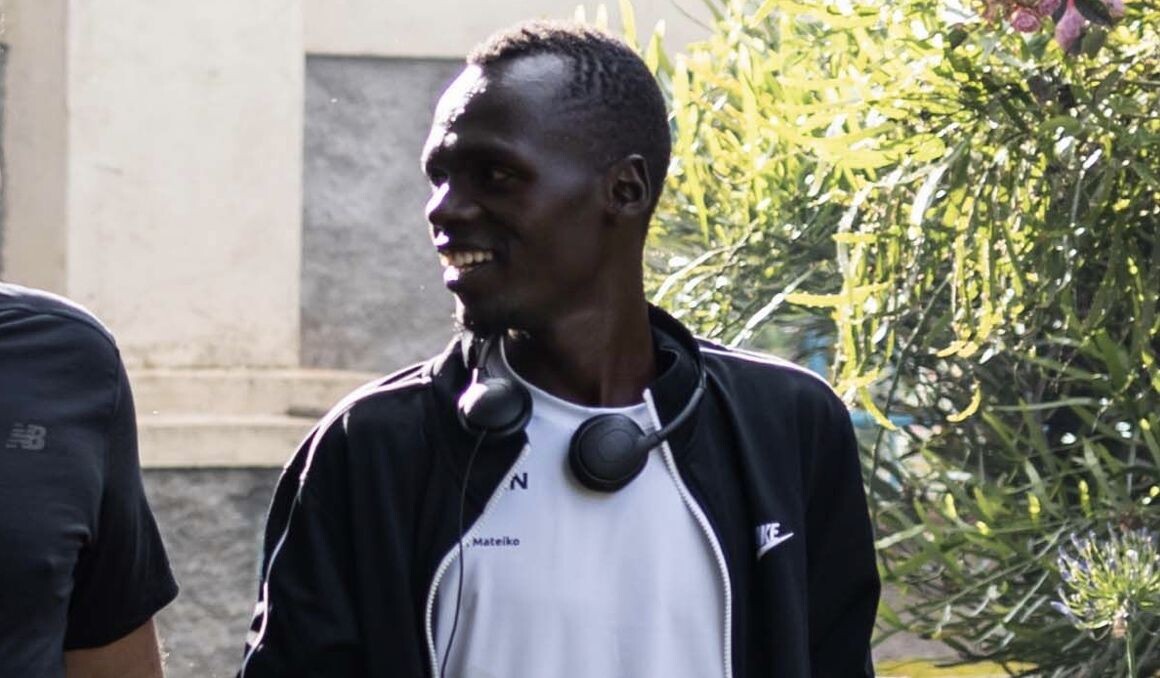
He revealed he will not also participate in February’s Sirikwa Classic Cross Country meeting as he will be preparing for a half marathon race which will serve as a build-up for the global show.
He added that he had been battling an injury before competing at the Valencia Half Marathon, where he placed third in 58:40. “In Valencia, I did not perform to my expectations due to an injury which stalled my training process,” he said.
“At the moment, I am getting ready for a half marathon in February, where I intend to lower my personal best time.”
His personal best time in the half marathon currently stands at 58:26.
At the moment, Mateiko revealed he is attending gym sessions with an aim of improving his endurance. “From January, I intend to start working on my speed,” he added.
Mateiko also said he is looking forward to making his debut at the Paris Olympics in 2024.
“When I come back from the World Championships, I will have identified some of my weaknesses which I will work on ahead of the 2024 Olympics. Participating in such a big stage will be a dream come true,” he concluded.
(12/24/2022) ⚡AMPby Abigael Wuafula
World Athletics Championships Budapest 23
From August 19-27, 2023, Budapest will host the world's third largest sporting event, the World Athletics Championships. It is the largest sporting event in the history of Hungary, attended by athletes from more than 200 countries, whose news will reach more than one billion people. Athletics is the foundation of all sports. It represents strength, speed, dexterity and endurance, the...
more...Woman sets Guinness World Record for fastest marathon pushing a double stroller
Dubai-based Tifanne Thayme set a new Guinness World Record (pending ratification) at the Adnoc Abu Dhabi Marathon in United Arab Emirates on Saturday, Gulf News reported. Thayme ran to a speedy 3:20:58 finish while pushing her two young children in a double stroller. She beat the previous record of 3:22:05, set in 2017 by the UK’s Jessica Bruce, by over a minute.Thayme, originally from Mississauga, Ont. but now a resident of Dubai, ran to 18th place in the women’s race and was 6th in her age group, despite pushing the extra load of her three-year-old son and one-year-old daughter the entire distance.
She started working with Canadian distance champ Malindi Elmore earlier this year.Thayme shared that she was overwhelmed with emotion post-GWR run, and dedicated her accomplishment to all mothers. “It wasn’t always about running–it was about motherhood also,” she said. “It was truly my way of combining my passion and priority.”Enthusiastic about running from a young age, Thayme ran with her father as a child. She gave up her job as an airline crew member to focus on family life, but her mother reminded her to keep her passion for running by gifting her a running stroller after Thayme’s son was born. “If I had to run, I had to take him also. I started loving it and I saw that he also started loving it,” Thayme said.


Thayme’s husband, Eamon Sallam, is also a runner and was helpful and supportive in juggling schedules to fit in Thayme’s training. Sallam accompanied Thayme on a bicycle during the event and made sure the kids were OK, while also making sure Thayme was following the Guinness guidelines so that her record could be ratified.Thayme shared that her life changed immensely after having children and that she faced new challenges–navigating breastfeeding, postpartum mental health and learning to love her body after childbirth, all while training.
"You may feel overwhelmed or unseen or lost in this new role,” she said.“As a mother, I want to dedicate my achievement to all moms that are awake in the middle of the night to calm a crying baby or a mother that has no time to brush her teeth or change her clothes with two kids running around.”The only thing missing from Thayme’s achievement was her own mother’s presence, who lives in Canada. Her mother was cheering her on from afar, however. “She was crying, obviously,” said Thayme.The race season in UAE runs from October to April, so Thayme hopes to fit in a few more shorter-distance stroller races (so that she can enjoy them while the kids are still small enough to push), and will then wrap up her season with “some solo races to gauge where I’m at without a big stroller in front of me,” Thayme said.
(12/24/2022) ⚡AMPby Running Magazine
Half Marathon training tips for beginners
Training for your first half marathon? Congratulations! The half marathon race distance is a big goal for a lot of runners—it’s far enough to challenge your body and mind, without taking you quite as far as the full marathon distance.
If it’s your first half marathon it might seem like an intimidating ambition, but our half marathon training tips for beginners will get you ready for the race line in no time.
After all, you’ll need some structure to your training, you’ll probably want to venture into the world of sports nutrition and fueling, and the weeks ahead might include some of the longest runs you’ve done so far. Fortunately, we can help but those fears to rest. With the following half marathon training tips, we’ll walk you through three ways to train smarter, not harder.

Follow along and we’ll show you how to train for a half marathon (the right way)!
Top 3 Half Marathon Training Tips for Beginners.

Tip #1: Include a “Pre-Training” Phase
First off, don’t rush the process when you’re preparing to run a half marathon—it’s all about that base. Jumping straight into a training plan isn’t recommend due to the demands of the weeks ahead. The best way to train for a half marathon is take it slow.
Learn how to prepare for a half marathon—from start to finish (which is what you’re already doing by reading this).
Taking four weeks or so before the start of your “official” training cycle can help ease in. Use this time to make sure you’ve got the appropriate level of fitness and endurance for your 12-16 week training cycle. This can be especially helpful for new runners to build confidence before tackling the training needed for your big race.
Build-Up Half Marathon Tips
Here are some things to consider in your build-up:
Commit to 3-4 weekly training runs. Just 3-5 miles per run will do the trick to build you up to 9-20 miles per week. Newbies, stay on that lower end. Experienced runners, you can aim for the higher end of the weekly mileage.
Think about what habits you need to build into your training cycle. Getting to bed at a reasonable hour, having post-run fuel prepped and ready to go, and carving out time for daily mobility are all great starting points.
Use the small aches and pains that come up along the way as the warning signs they are. Typically it means that your run form could use some improvement, whether that’s trying to improve your hip posture or open up your arm swing. Or it could mean that you need to put a little more effort into your recovery practices.
Now is the time to make mobility a habit. Just 10 minutes a day can loosen up tight muscles and help improve your range of motion. Coach Holly has a video to guide you through a mobility routine in “Beginner Runners’ Guide to Stretching and Mobility.”
In addition to using this base-building phase to prepare your body, these can be the weeks to gather your gear:
Running shoes—test out a few pairs at your local running store to find the right fit for you.
Running clothes—make sure to have weather-appropriate clothing not only for training but also race day.
Fueling—While your training runs in the first few weeks will be short enough you might not need calories mid-run, you’ll probably want some form of nutrition as your training progresses. Whether that’s energy gels or sports drink, think about what you’ll want to practice with during your training.
Nutritionist Coach Elizabeth breaks down how to fuel before, during, and after your run in her video Beginners’ Long Run Fueling Guide.
Tip #2: Have A Plan—But Make It Work For You
Don’t follow a plan. Let a plan follow you.
Now, we all have to start somewhere with our training. So maybe you did a search for a training plan, or you talked to your personal trainer about their half marathon training tips. You found a spreadsheet with all the columns filled out. Eight weeks from start to finish, with weekly workouts and runs all lined up, right? We’re not pointing any fingers, but it’s important to take that spreadsheet with a grain of salt.
After all, these training schedules are pretty generic. They don’t necessarily take into account your fitness level, your work and home life schedule, or the days that you wake up feeling less than stellar. When your training is laid out day-by-day, mile-by-mile, it’s easy to fall into a trap of thinking that you have to follow the plan to a T.
Instead, make the plan follow you with the right balance. Here are some tips to help you make that happen:
Muscles are feeling sore? Spend some extra time mobilizing. Foam rolling and working on your range of motion can help limber up your muscles so they’re ready for the next workout. This can also be an important step to prevent common overuse injuries. Check out the following videos for some ideas:
Runner’s Knee Pain | Symptoms, Treatment and Prevention
How To Fix Shin Splints
Your schedule calls for hills but you’re stuck in the gym on a rainy day? Try the treadmill or a cross-training workout instead.
20 Minute Follow Along Hill Workout
Follow Along Bodyweight Workout
Planning a vacation in the middle of your training cycle? Enjoy your time off, but don’t totally slack.
How To Eat While Traveling
15 Minute Travel Strength Circuit Workout
DON’T BE AFRAID TO CHANGE THE PLAN.
Listen to your body and rearrange things accordingly. By all means, get the work in, but NOT at the expense of an early injury or poor running form. You can supplement your plan with cross-training, running on a treadmill, or mixing up your rest days depending on how you feel.
Tip #3: Running Isn’t The Only Way To Prepare For a Half Marathon
Don’t be fooled into thinking that getting better at running can only come from running more. This is a classic misconception that can often lead to excessive wear and tear on the body as well as overuse injuries. The great news is, you can build strength and skill as a runner through strength training as well as getting in those miles.
Strength training brings a variety of benefits:
Build muscle by adding weight to movements.
Start with bodyweight and add weight or load as you get comfortable. Adding just five pounds to your lunges will make running uphill feel that much easier.
Develop hip stability, core engagement, and upper body strength to supplement your running.
Adding supplemental movements such as glute bridges, planks, and push ups target strength for the whole body.
Practice controlled breathing patterns while not under the stress of running.
Taking big belly breaths by engaging the diaphragm can be difficult when we’re pushing the pace on a run. Instead, spend time consciously breathing while moving through a squat or when doing push ups.
Moving under greater ranges of motion than you would use while running can help build stability and control.
For example, a lunge puts your rear leg into full hip extension. When you run, your rear leg also goes into extension. By training lunges outside of running, you’ll be able to practice this range of motion without having to actually run. And as a bonus, you can improve your strength and muscular endurance at the same time!
Strength training just twice a week, for 20-30 minutes per day is all you need to gain access to a full range of motion and stable control in all of the joints being impacted by those miles- i.e. hips, ankles, knees, you name it.
Favorite Strength Exercises
Some of our favorite tried and true strength movements:
Push-ups: A simple and effective way to find your midline, access your glutes, stabilize the shoulders…the list goes on.
Squats: These strengthen the leg muscles that carry you through every stride.
Lunges: These improve mobility, engage your core, and build leg strength.
Planks: They engage your core, which helps you maintain good posture while running.
Burpees: They are a great cardio activity to get your heart pumping and increase your cardiovascular ability!
The best part…you don’t even need a gym for most of this stuff! Try this follow-along bodyweight strength workout to see how simple it can be:
Bonus Tip: Prep For Race Day In Advance
Your weeks of training will give you plenty of time to think about race day itself. It doesn’t hurt to think ahead about how you’ll prepare for the starting line. Check out the video below for some of Coach Holly’s race day tips and logistics:
Know your race course: scout out the course in person or check out a map so you have an idea of what to expect.
Have a plan for race morning: use your race’s website to know what time you should arrive, where the start line and bag drops are, and where restrooms are located at the start and along the course.
Get in the habit of including a dynamic warm up before every run and workout during training. Use that warm up on race day to lumber up, dispel any nerves, and get ready to run!
(12/23/2022) ⚡AMP
by Holly Martin
Tata Mumbai Marathon to be held in January 2023 after two year gap
The Tata Mumbai Marathon (TMM), a World Athletics Elite Label Road Race, will be held on January 15, 2023, said its organizers Procam International.
This will be the 18th edition of the marathon and will be flagged off from the Chhatrapati Shivaji Maharaj Terminus (CSMT) and the categories are classic distance marathon, popular half marathon, open 10k, Senior Citizens’ Run, Champions with Disability, and Dream Run.

Eknath Shinde, chief minister of Maharashtra, said, “The much awaited marathon returns after two years. Today the event is one of the top 10 marathons in the world and that is a big achievement. It is a pride of Mumbai and India, that brings our community together across all ages, caste, creed to run as one. We extend our support to the event and we are with you."
Harish Bhat, brand custodian, Tata Sons, said “The Tata Group is proud to be associated with this iconic race that brings alive the essence of Mumbai. Embodying the spirit of Mumbai, the city that never stops moving, overcoming every challenge just like the marathon runners moving towards their goal with a never-give-up attitude, the marathon brings together amateur and professional runners from across the country. The race gives every runner the opportunity to push beyond the limits of body and mind to succeed in this test of human strength and endurance. Ujjwal Mathur, senior vice president and country head, India business, TCS said “TCS has been associated with the marathon for many years and has now grown as a pioneer of running events across the globe.“

Bollywood actor Tiger Shroff is the face of the event. IDFC First Bank will be a part of the marathon for the first time after the technology-led bank signed up to be an associate sponsor across Procam International’s four events and marked their arrival in mass-participation sport, at the TCS World 10K Bengaluru in May this year.
(12/23/2022) ⚡AMP
Tata Mumbai Marathon
Distance running epitomizes the power of one’s dreams and the awareness of one’s abilities to realize those dreams. Unlike other competitive sports, it is an intensely personal experience. The Tata Mumbai Marathon is One of the World's Leading Marathons. The event boasts of fundraising platform which is managed by United Way Mumbai, the official philanthropy partner of the event. Over...
more...Usain Bolt honored to join great names who have won lifetime achievement award
Usain Bolt was delighted to join a stellar list of sporting greats after being chosen as the BBC Sports Personality of the Year Lifetime Achievement Award winner for 2022.
The 36-year-old Jamaican retired from athletics five years ago but he has left an indelible and so far unbeatable mark on his sport.

Bolt became a global superstar at the Beijing Olympics in 2008, lowering his own world record mark to win the 100m gold and then breaking Michael Johnson’s 200m record to also win gold in that event.
A year later he again broke his 100m world record in winning the world title in Berlin – and his time of 9.58 seconds still stands today. Four days later he lowered his 200m mark to 19.19secs which has also not been beaten.

He went on to retain his 100m and 200m Olympic titles at the next two Games in London and Rio de Janeiro.
Bolt retired in 2017 after the World Championships in London, where he won a bronze in the 100m.
“For me it’s an honour to be amongst the greats who have received this before like Pele, Muhammad Ali,” Bolt said in a message to the awards ceremony from Jamaica.
“For me these guys are some of my favourite athletes and I look up to them.
“Also, I want to thank my family, my friends and the fans for everything throughout the years. I’ve worked hard and to get this award means a lot.”
(12/23/2022) ⚡AMPby Jamie Gardner
World Athletics offers certified coach training to refugee camp support staff
World Athletics, in collaboration with the area athletics development center (AADC) based in Nairobi, has boosted its refugee programme by sponsoring and hosting Level 1 coaching practical training for key refugee camp support staff working in the northwestern region of Kenya.
The focus was on the Kakuma, Kalobeyei and Dadaab refugee camps in Kenya, which are mainly comprised of refugees from South Sudan, Sudan, Somalia, the Democratic Republic of the Congo, Burundi, Ethiopia and Uganda. Throughout the year, a group of six successfully completed the first phase of the World Athletics eLearning modules. The second phase was organized in the picturesque Lobo Village in Eldoret and was conducted by Samuel Litaba of Kenyatta University, a certified World Athletics Coaches Education and Certification System Level I and II lecturer.

The five-day practical programme focused on jumps, sprints, relays, throws, race walk and Kids’ Athletics, and included a visit to the Complete Sports Training Camp in Kaptagat. The group also assisted in a training session of elite Kenyan athletes at Kipchoge Stadium.
The last day was dedicated to assessment of various skills and coaching practice. It was a life-changing experience for the group and proved the benefit of a blended approach, combining online learning with practical sessions.

“Education and sport change lives,” said U20 refugee team project lead Barbara Moser-Mercer. “This course has set the coaching bar high and the skills and professional competencies we acquired will translate into life-changing experiences for refugee athletes. It will contribute to sustainable quality athletics programing in refugee contexts, linking these to the world of athletics in their hosting country, Kenya.”
Head coach Janeth Jepkosgei, the 2007 world 800m champion, added: “The experience and skills gained will go a long way, coupled with the long period in my career spent sharpening and positively impacting the upcoming Athlete Refugee Team (ART) athletes, physically, mentally and psychologically.”
Aware of the impact the programme could have on future team results at senior and U20 level, Kakuma camp on-site assistant coach Arcade Arakaza said: “I would like to extend my gratitude to World Athletics and the African Higher Education in Emergencies Network (AHEEN) for the chance given to me, to improve my skills and develop my experience in coaching. I see this as a supporting process in helping my fellow refugees and host community.”
AHEEN sports coach at the Dadaab refugee camp, Seraphin Uwizeye, said: “I take this opportunity to thank everyone who participated in organizing this golden session that empowered different people from different nationalities. It was my first time attending a session like this but I felt included and I realized that age, nationality or being a refugee can’t limit anyone to fulfill their dream.
“I am sure that the knowledge and certificates earned will help many refugees and locals, not only in Dadaab refugee camp in Kenya but also in the other countries I will be able to reach, especially in the Democratic Republic of Congo, my country, where sport is still not valued.”
Jaryd Mercer, online educator for the U20 team, said: “This engaging and educational course has helped me reassess the ways in which I hope to work with the U20 team in the future. Many of the techniques and practices discussed are applicable to both athletics and the general education of young adults and often tie the two together.”
While AADC Nairobi director Ibrahim Hussein commented: “We are grateful to World Athletics for giving us the opportunity to be part of the programme. AADC Nairobi appreciated the fact that most of the participants who enrolled in the course where from our region and included former top athletes who are playing their part in assisting the programme.”
It marked a positive end to the year’s activities, giving back to a group of dedicated people that spent much of 2022 training and nurturing young athletes. Climate and living conditions in the camps are challenging, but the strong desire to make a difference prevails.
(12/23/2022) ⚡AMPby World Athletics
Vivian Cheruiyot keen to lose weight ahead of the 2023 season
Former Olympic Games 5,000m gold medalist Vivian Cheruiyot is optimistic she will perform well next year upon her return from maternity leave.
The double world 5,000m champion said she is working hard on cutting her weight after maternity leave and she is ready to swing back into action next year. "Before hanging my spikes, I want to run better than before," she noted.
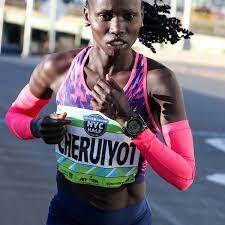
The double world 10,000m champion won her first Olympic gold at the 2016 Olympic Games in Rio de Janeiro, Brazil before switching to the marathon. She made her debut in the marathon in London in 2017.
“At the moment, I haven't planned for any race because I have just started training. Cutting weight is my priority right now but I hope to be ready for competition next year,” said Cheruiyot.

Cheruiyot, who started her running career in 1998, stated that she wanted to win the 2020 London Marathon title but that did not happen despite enjoying top form during that period.
“My last race was the 2020 London Marathon, where I failed to finish because it was during the coronavirus pandemic period. It was almost canceled but they decided to host it. I was in good shape, very fit and everything went on well but it was really cold and too much rain. That took a toll on me forcing me to drop out,” said the 2018 London Marathon champion
As age continues catching up with the Pocket Rocket, she explains that transiting to marathon from track and field and cross country after 18 years was not easy but it was the best time for her to move.
“My next move is to train, cut off my weight and come back for a few years and I will be done. Marathon and track and field are totally different. In track and field, the training is a little bit friendly because you cannot go for long runs like 40km per day or once a week but training for a marathon needs dedication, and a lot of exhaustion among others,” she said.
Cheruiyot regrets that her exit from the track had left the country weaker in the 5,000m and 10,000m.
"When I quit track in 2016, I left strong athletes like Hellen Obiri and the late Agnes (Tirop) among others. Today, the 5,000m and 10,000m is a pale shadow of what they used to be," she said.
"I don’t know where we are heading but I believe the upcoming athletes will soon fill the void with good guidance. It will, however, not be easy to get athletes of our generation including Obiri (now in the marathon), me, and the late Tirop.
"We used to be very strong, especially at world events and any time we lined up, Kenyans were assured of medals,” she said. She said one can no longer bank on the Kenyan women in the two events.
" Our opponents including Ethiopia and other countries are having a field day," she added. She urged Kenyan athletes to train hard if they are to win medals.
"Athletics has become competitive and we can't afford to sit on the laurels and expect things to happen,' she cautioned.
(12/22/2022) ⚡AMP
by Emmanuel Sabuni





